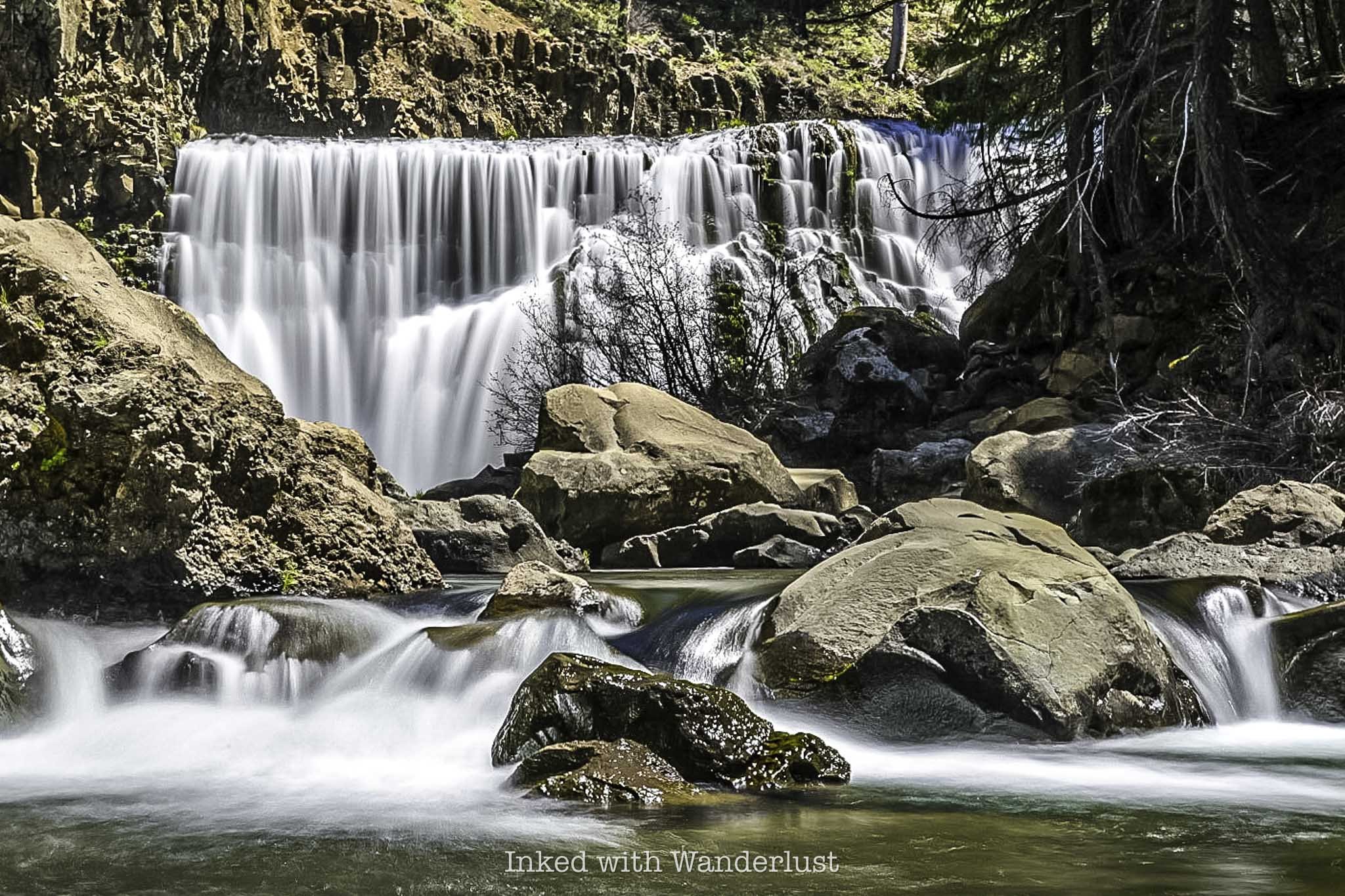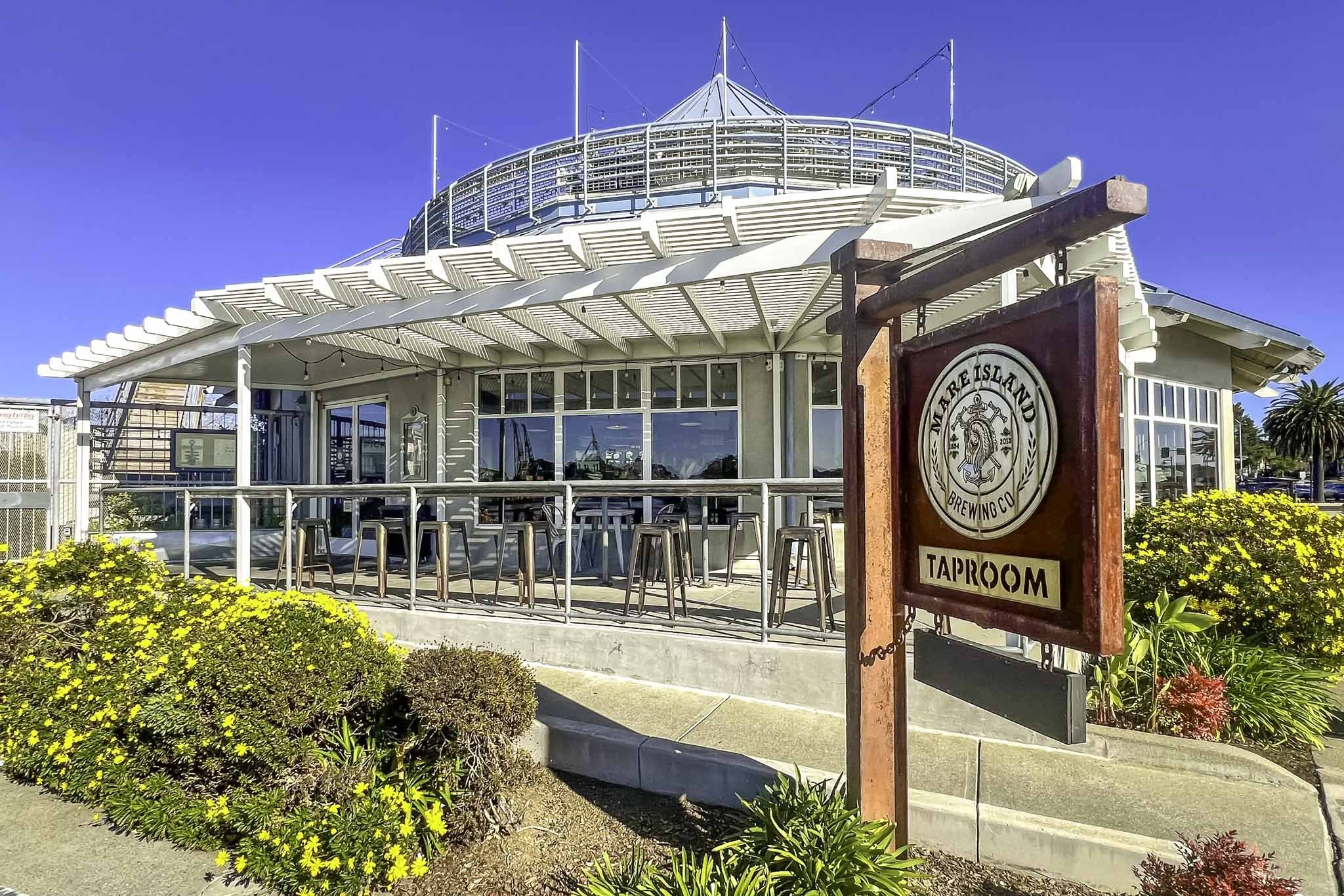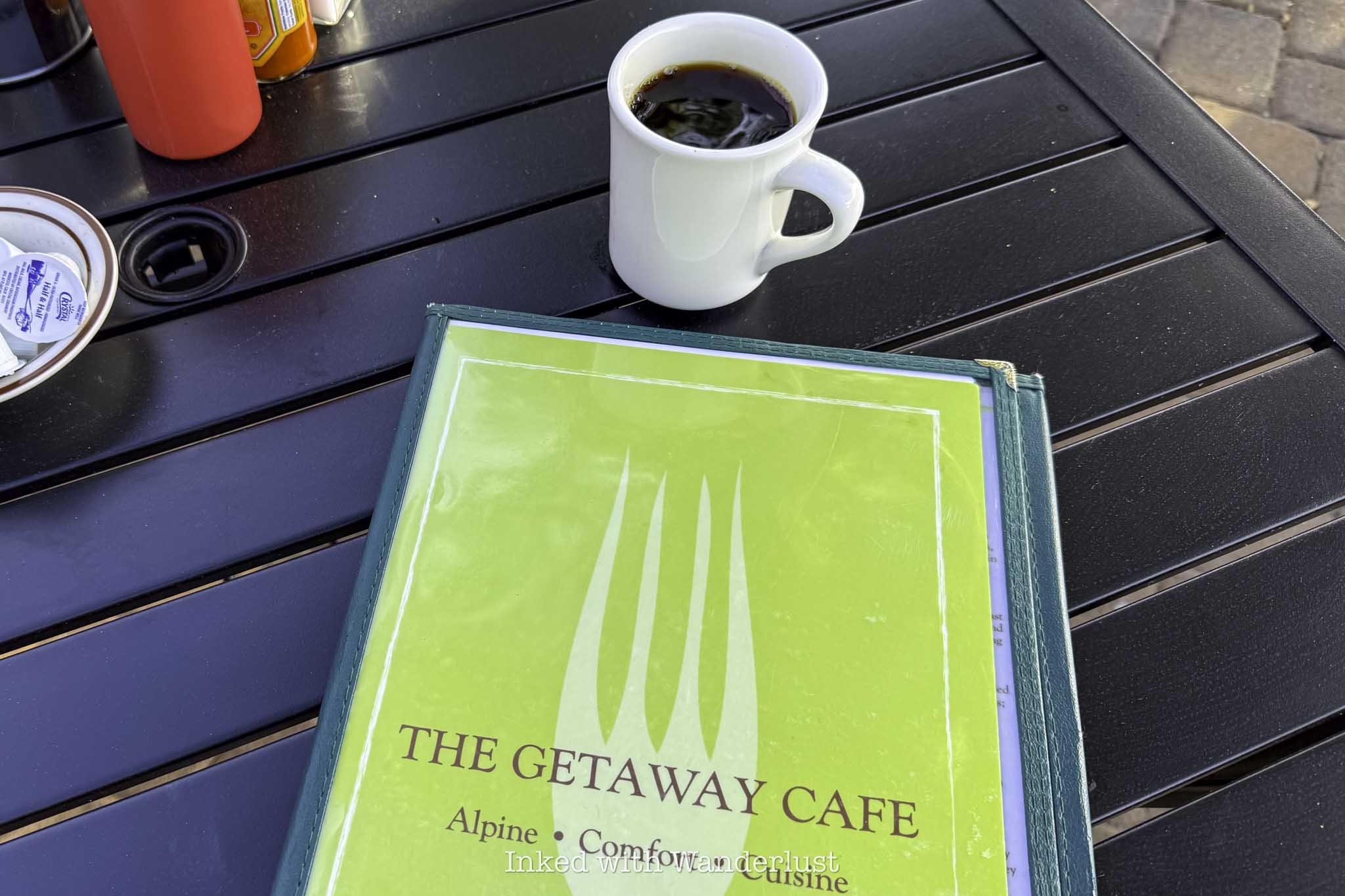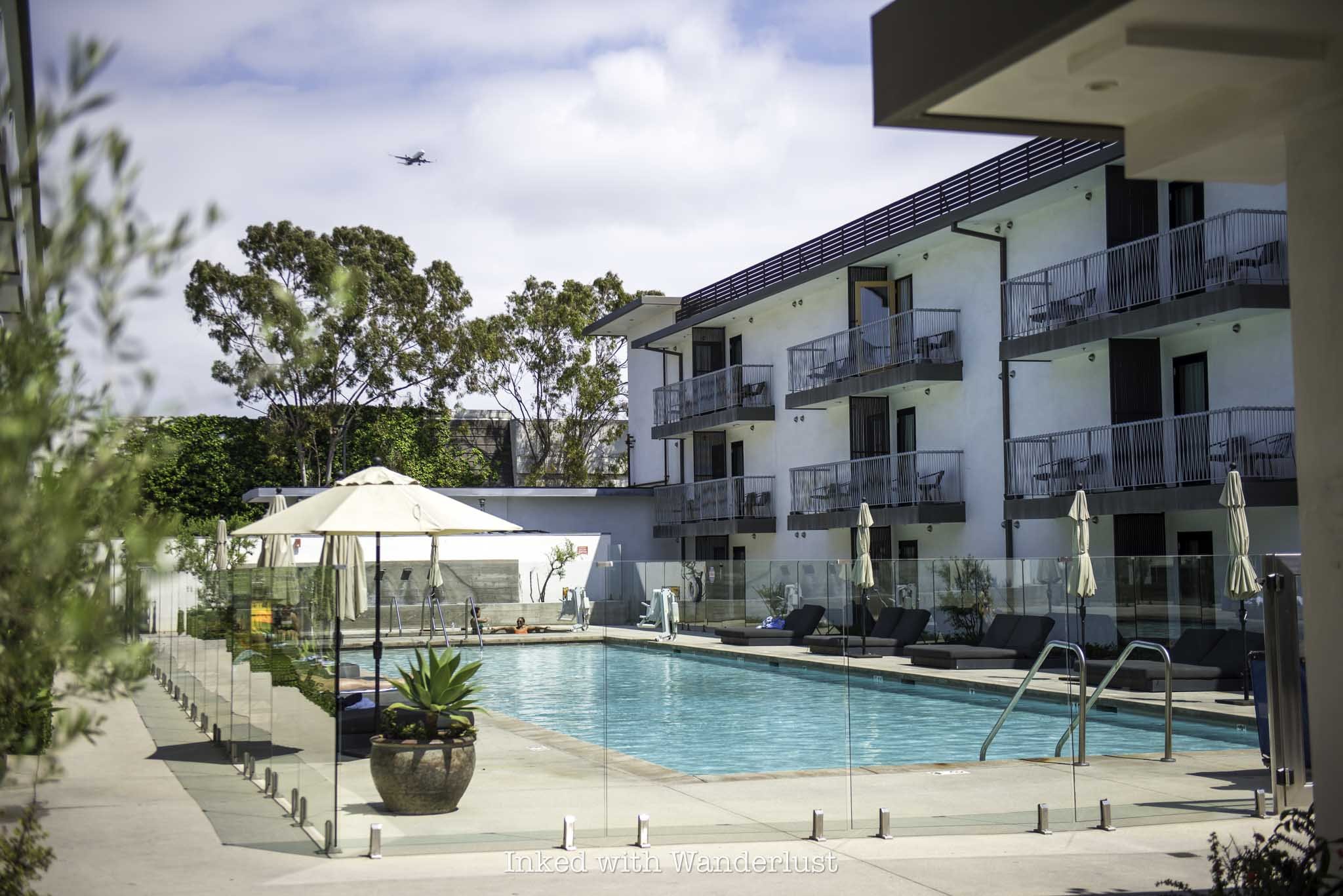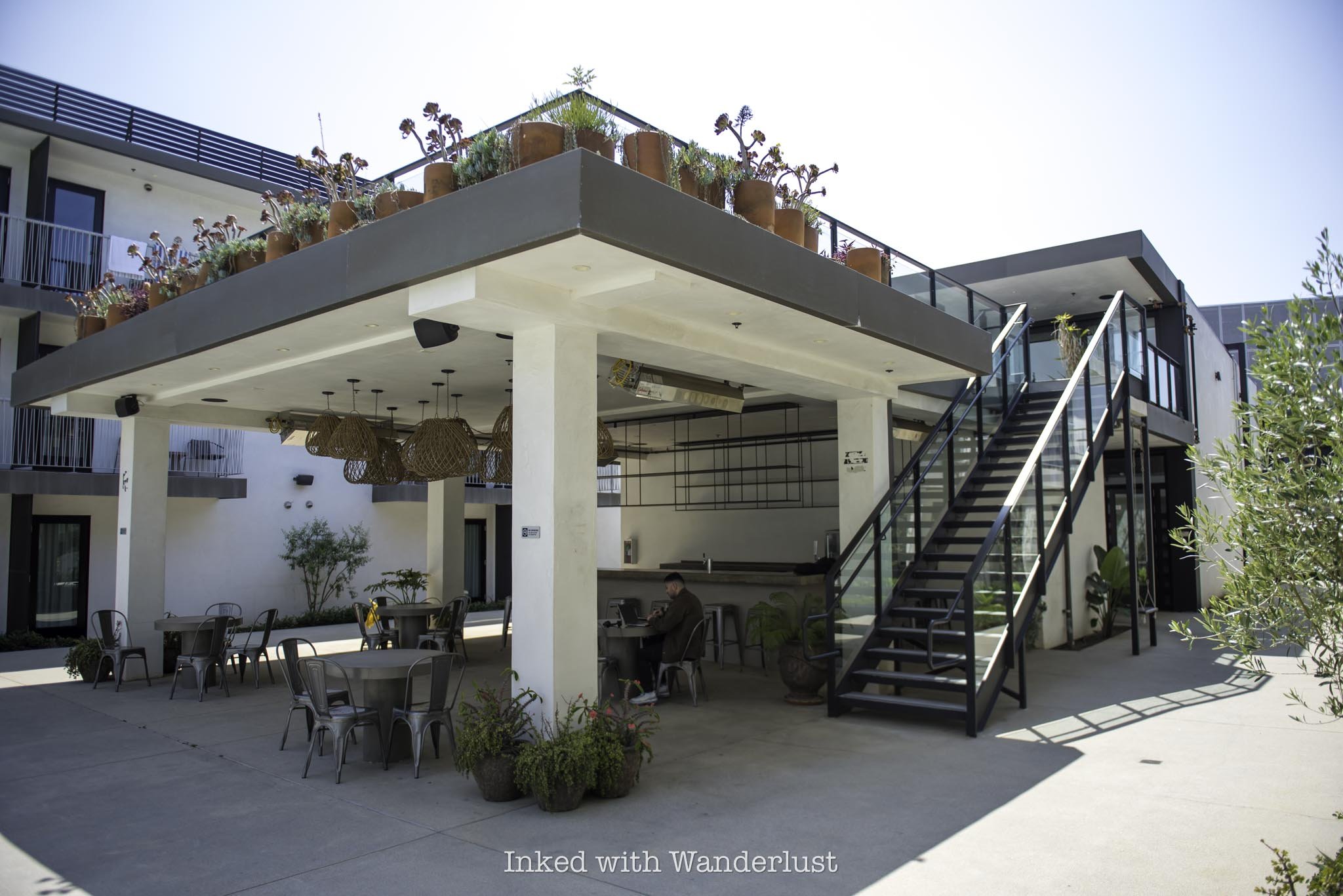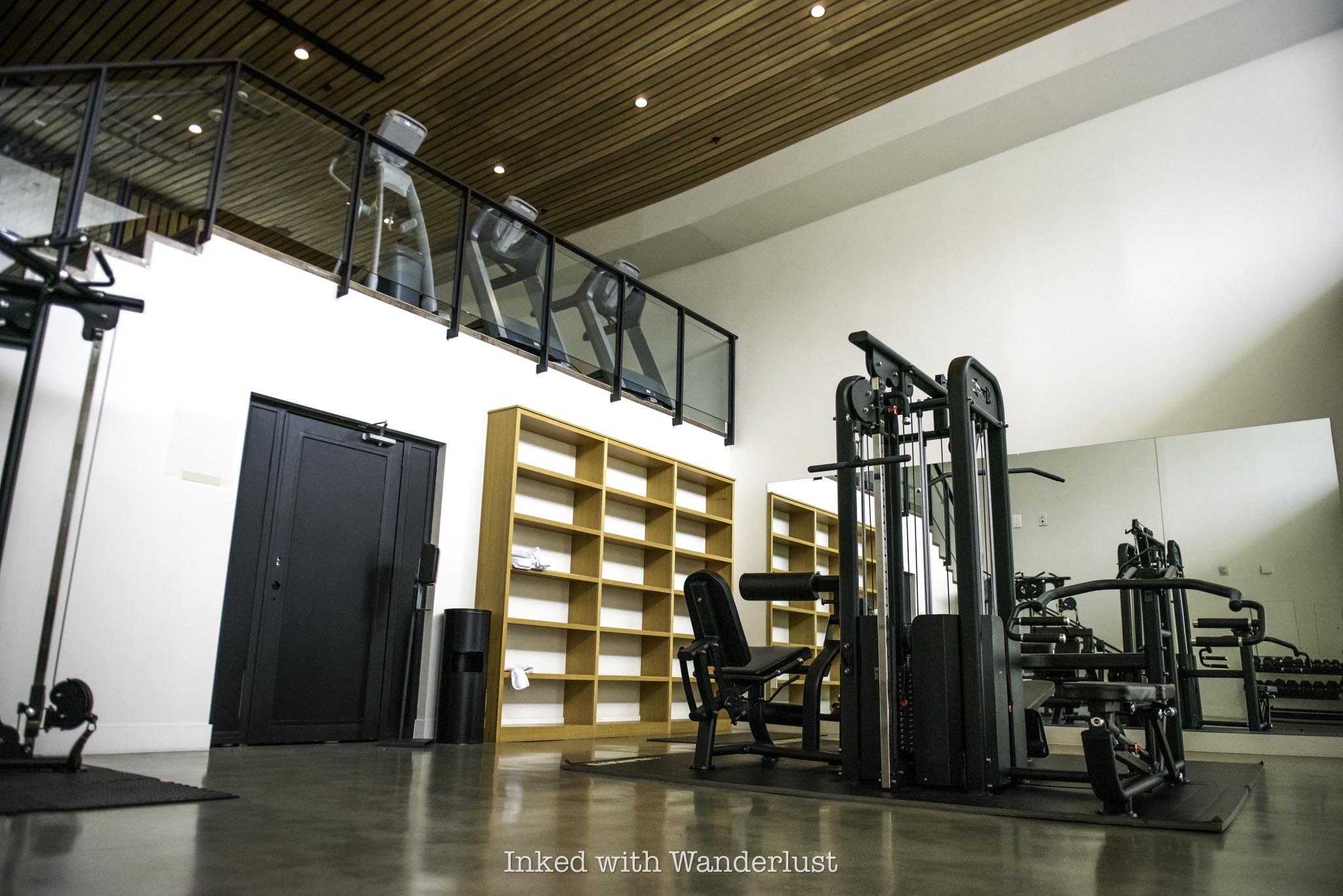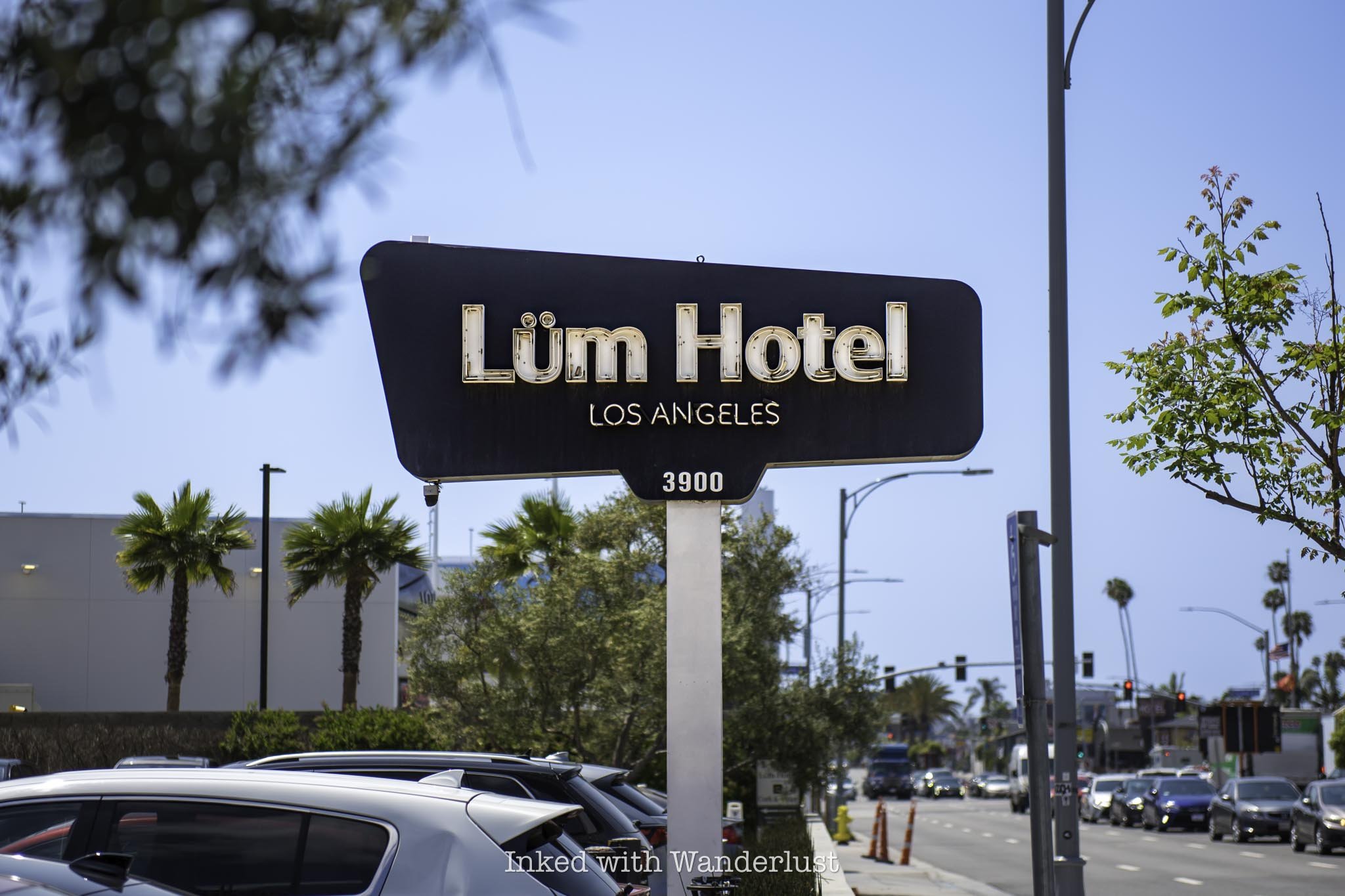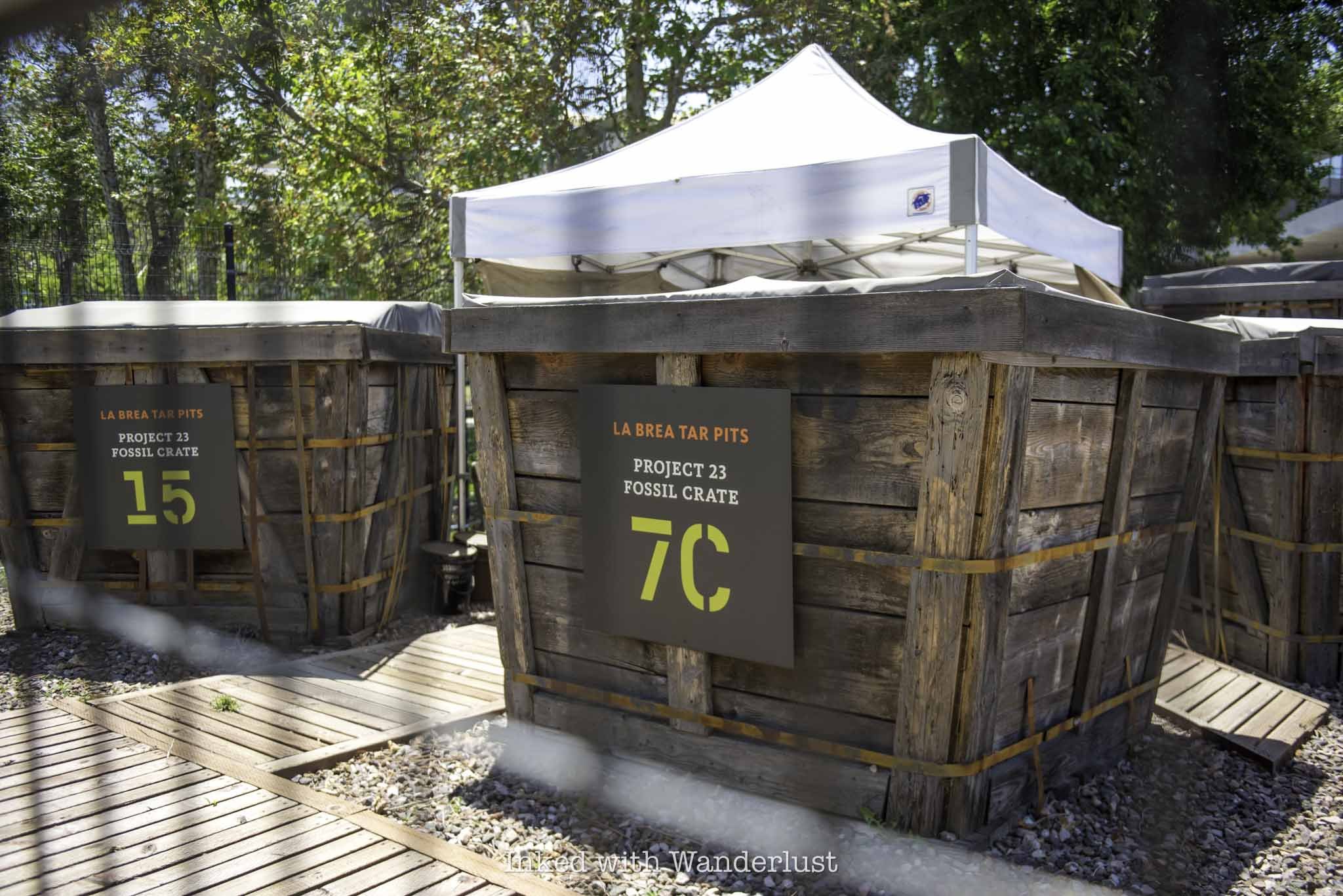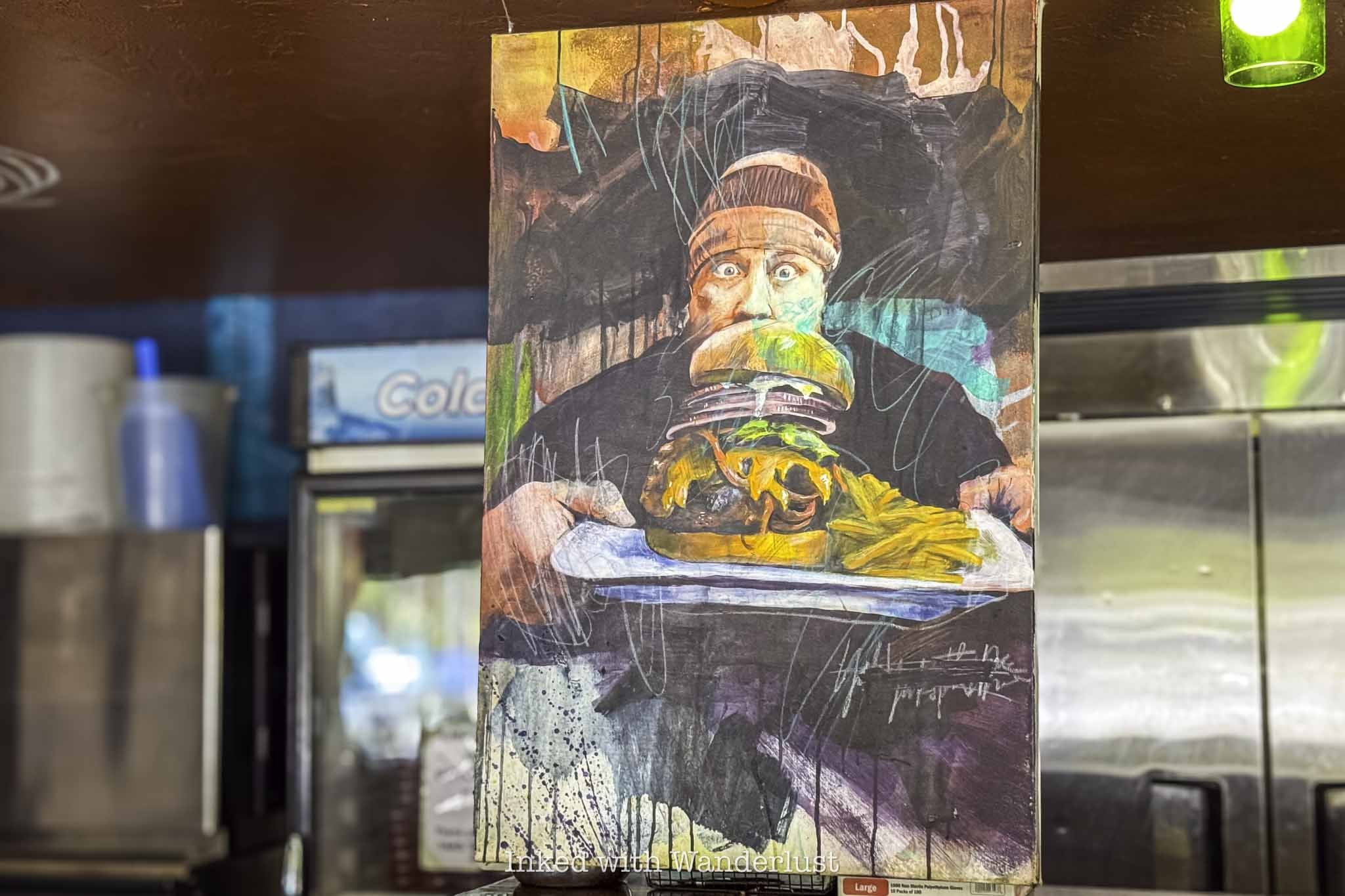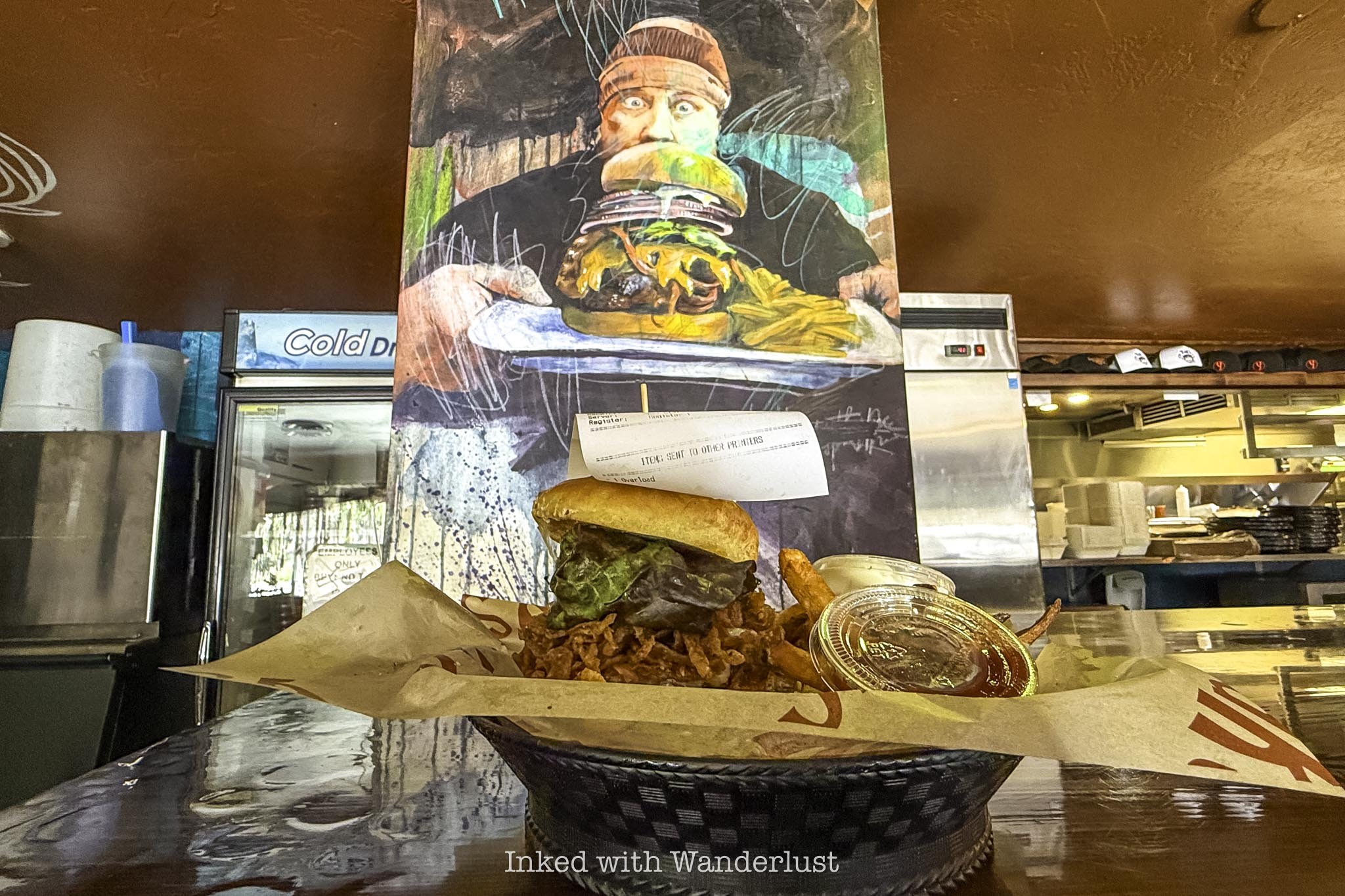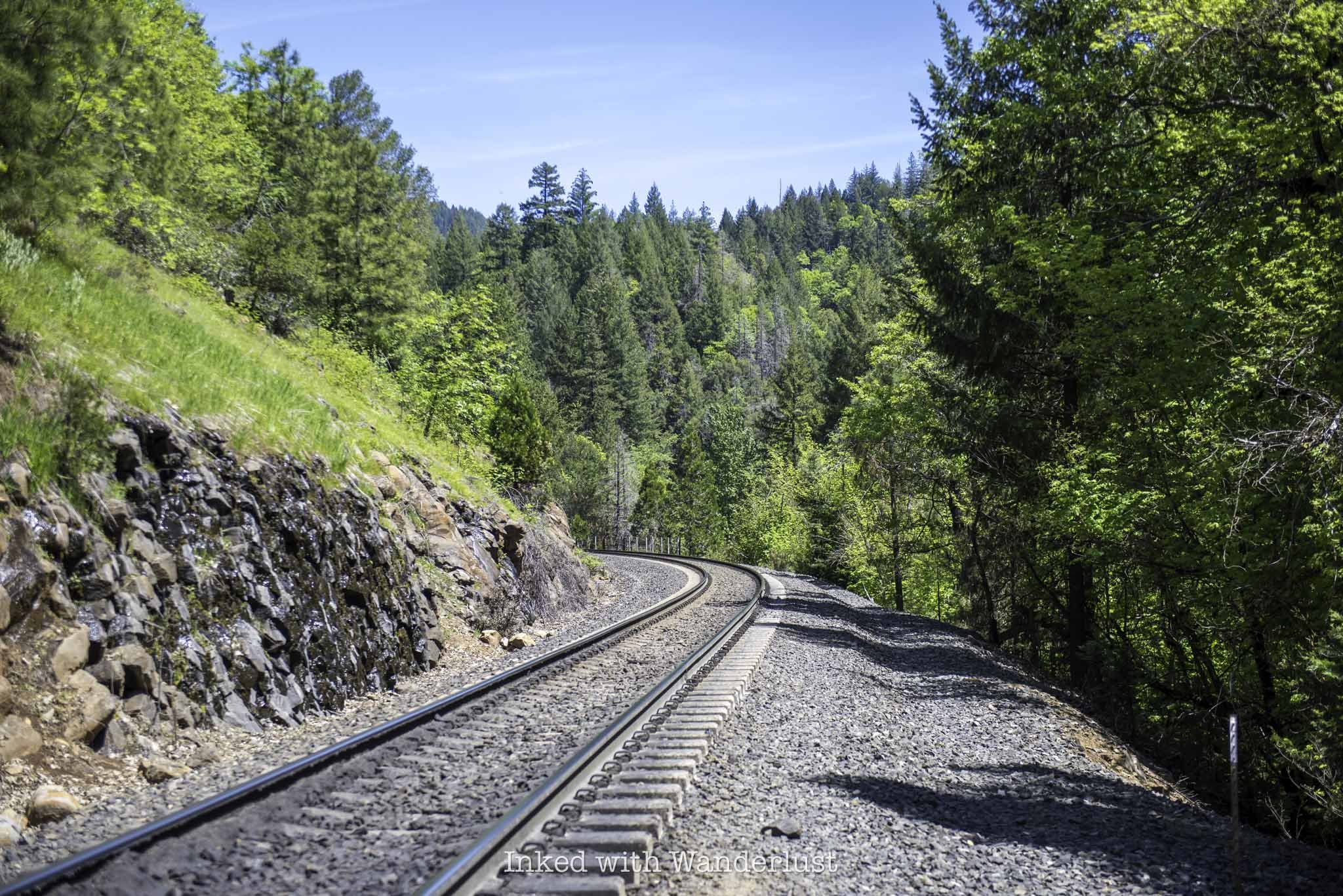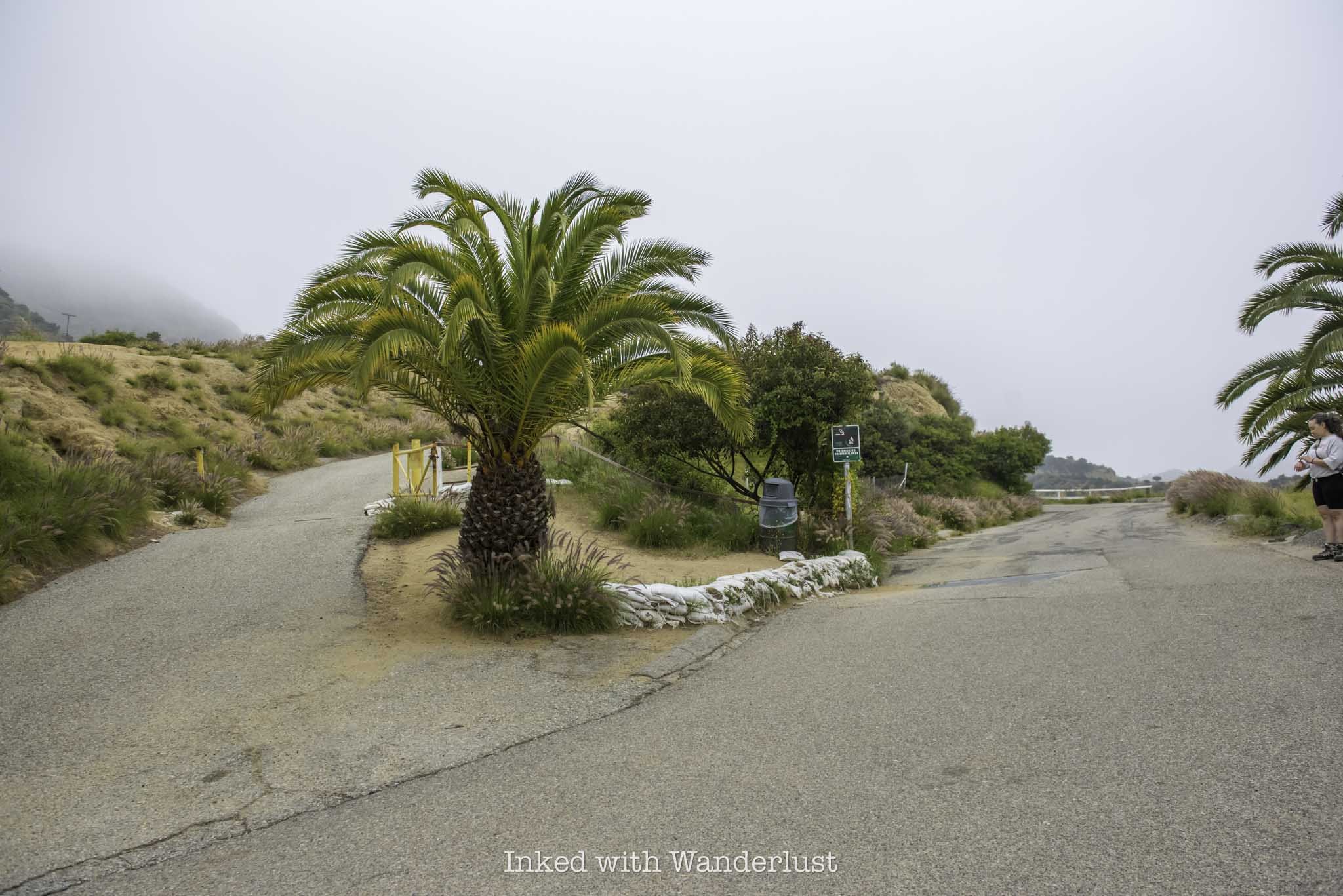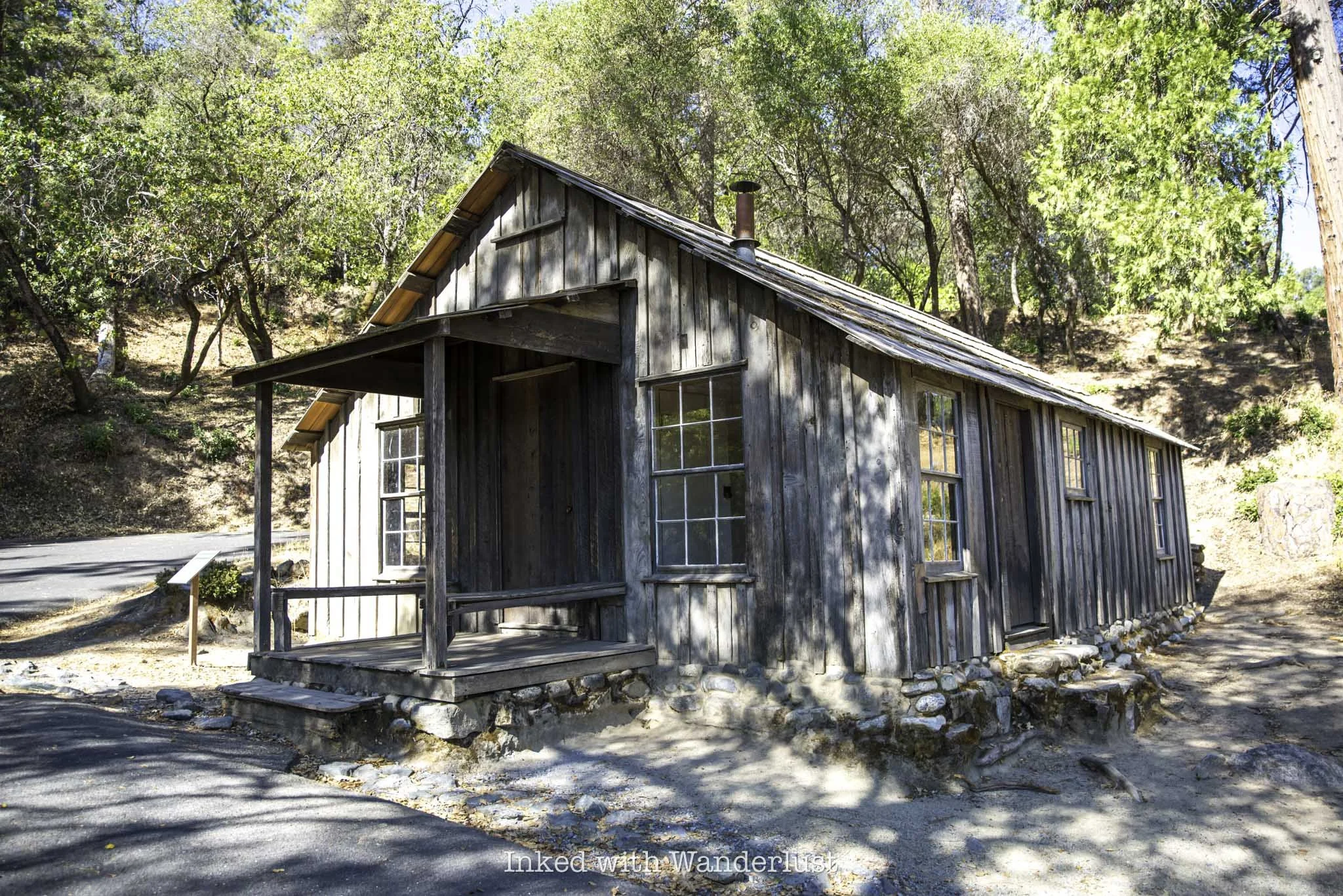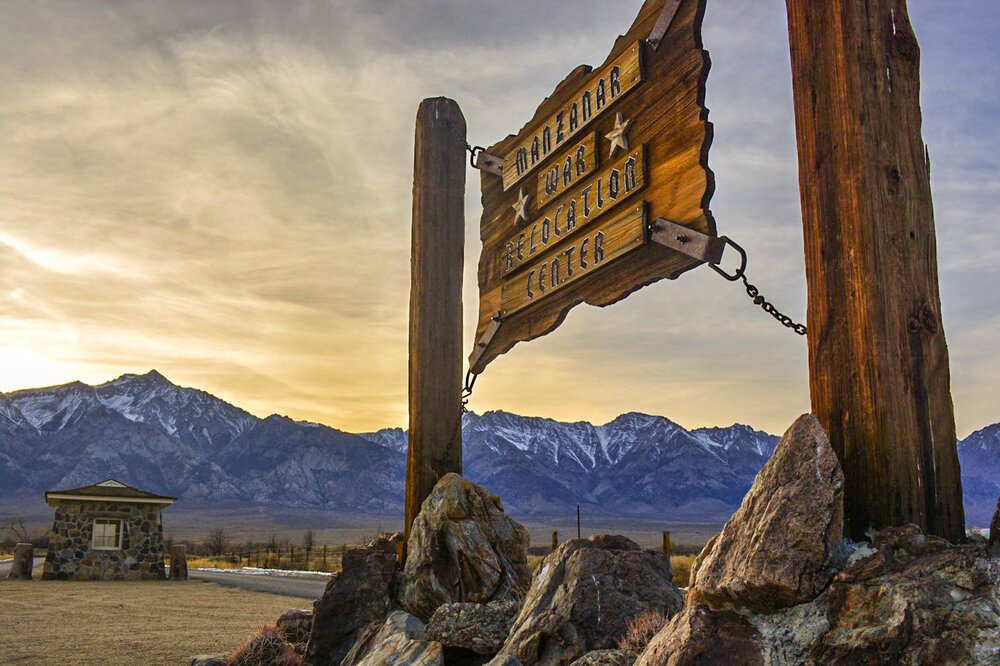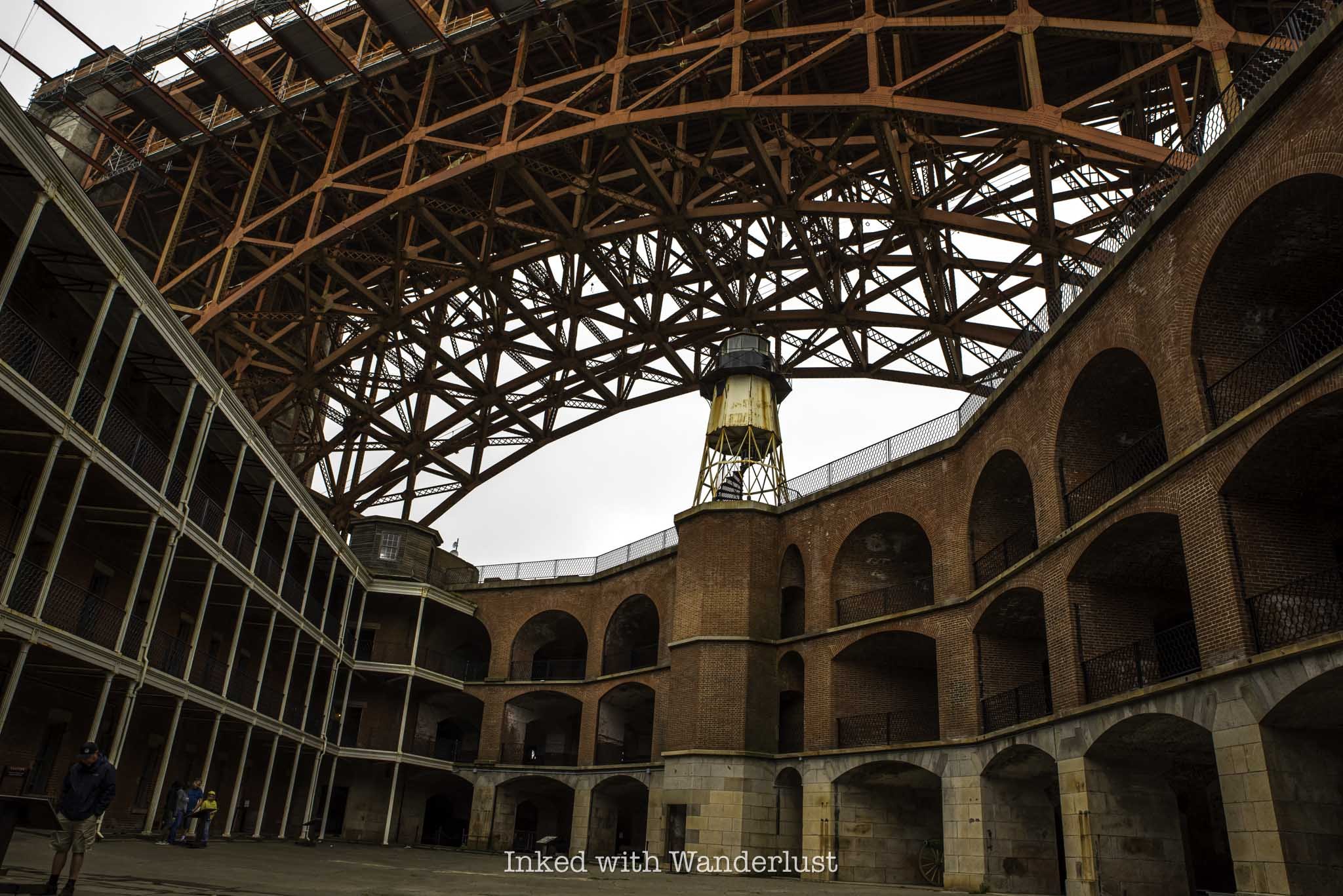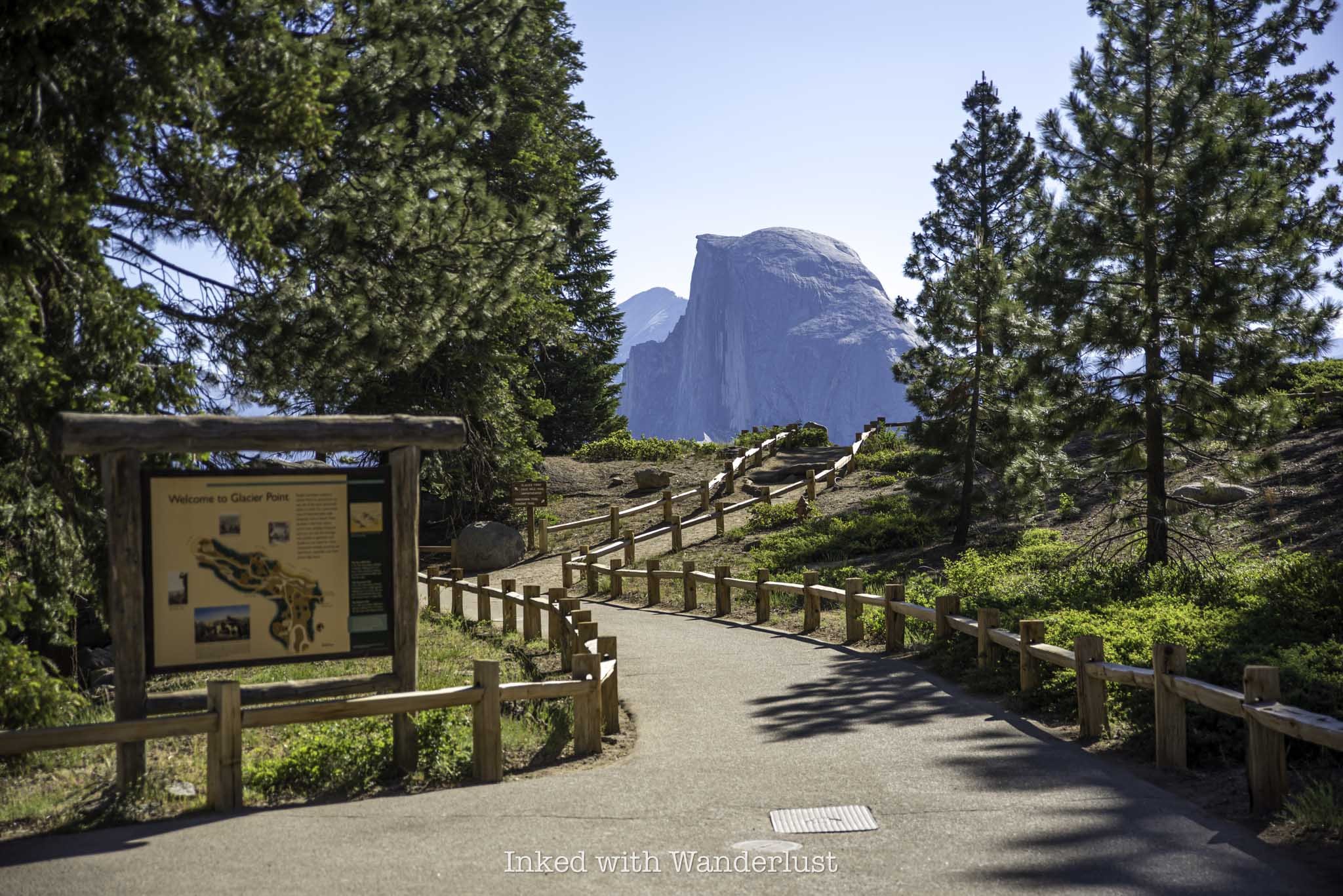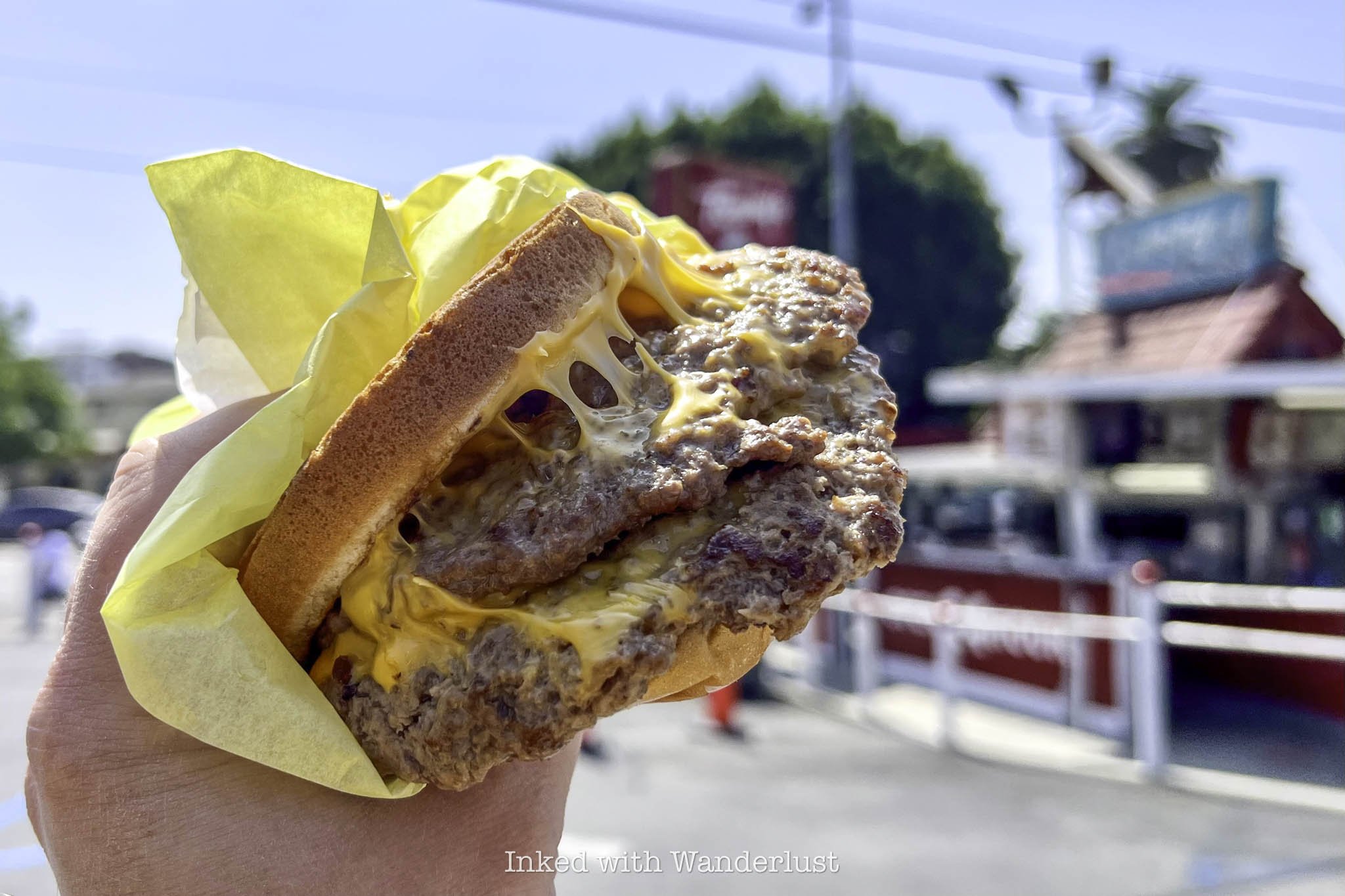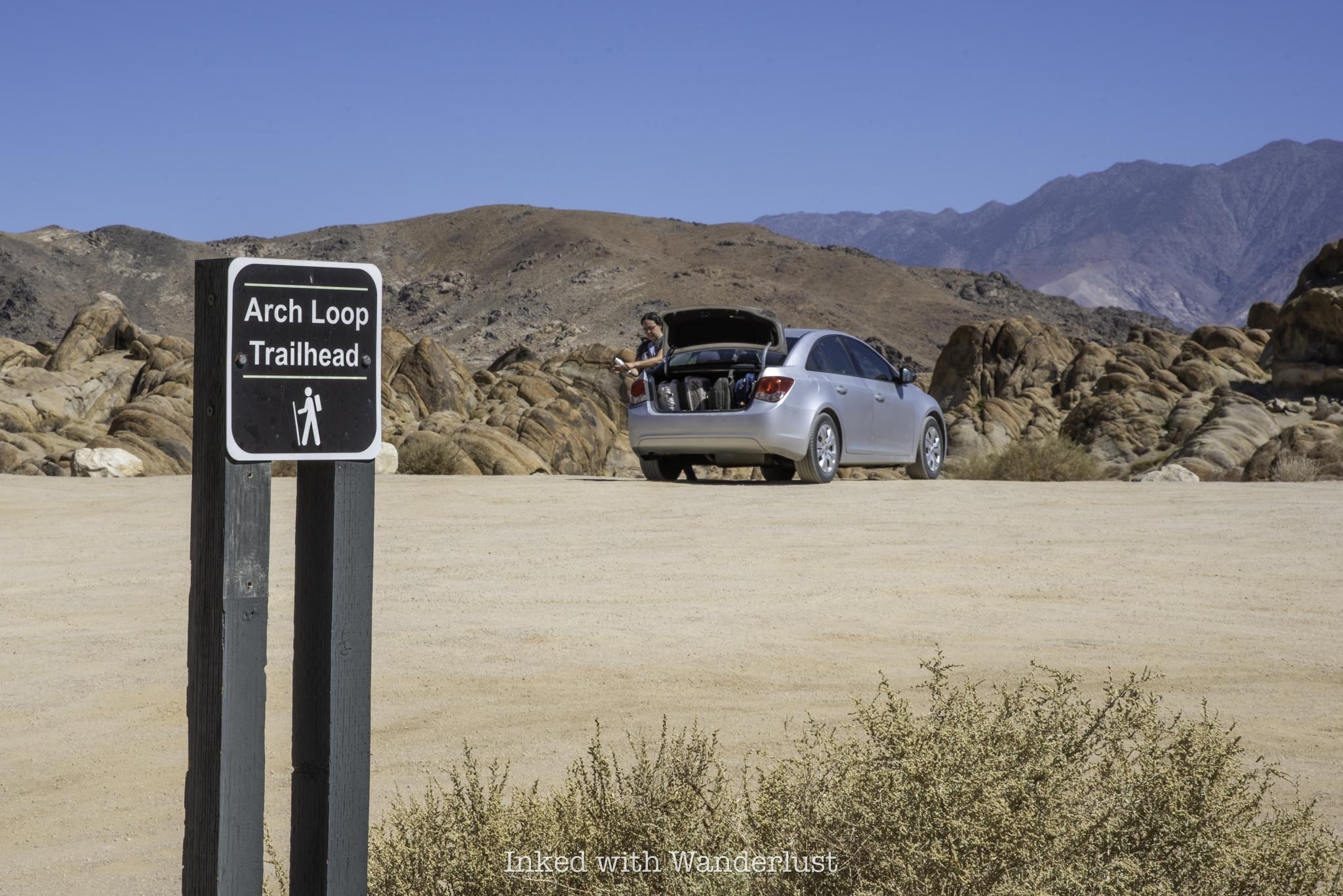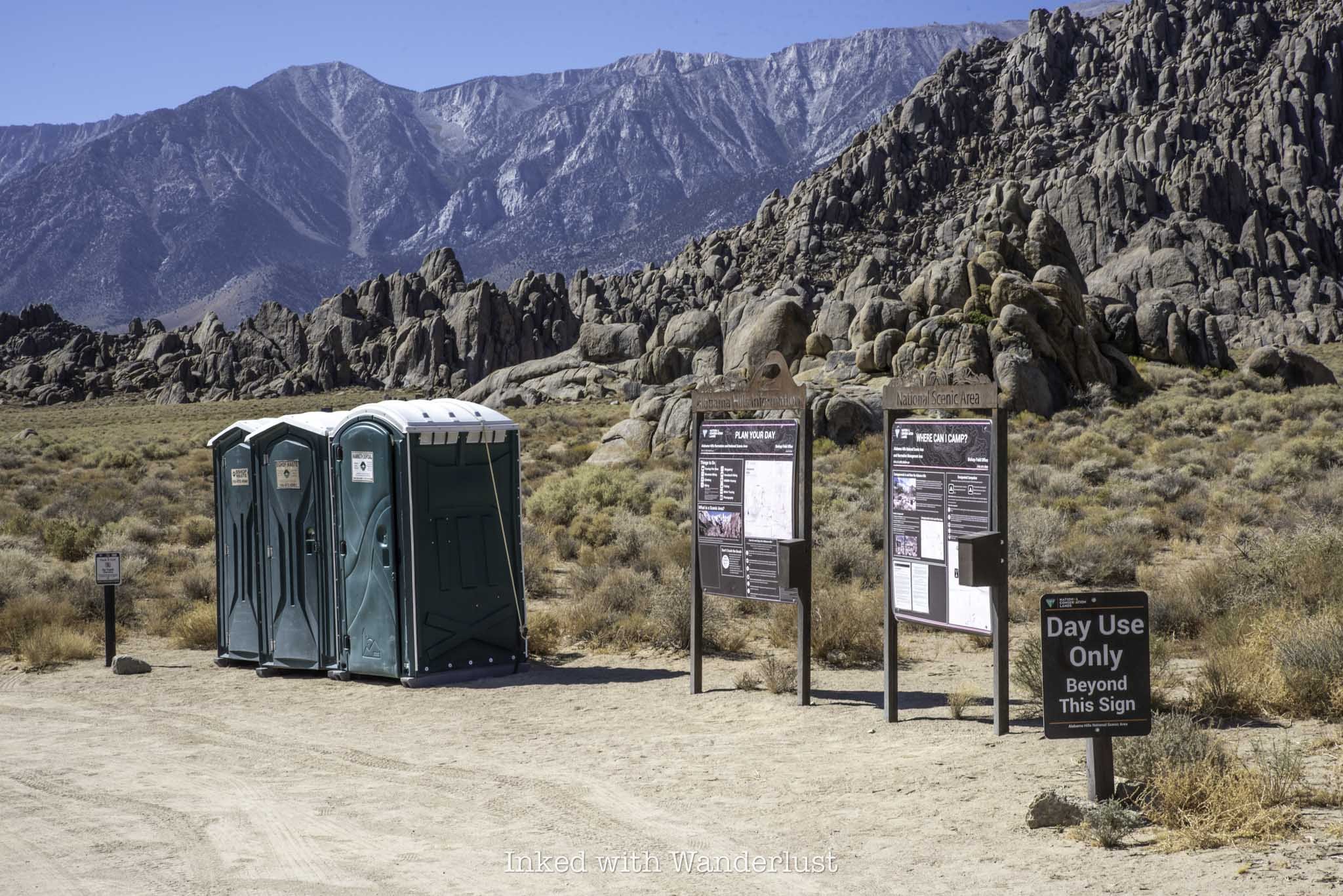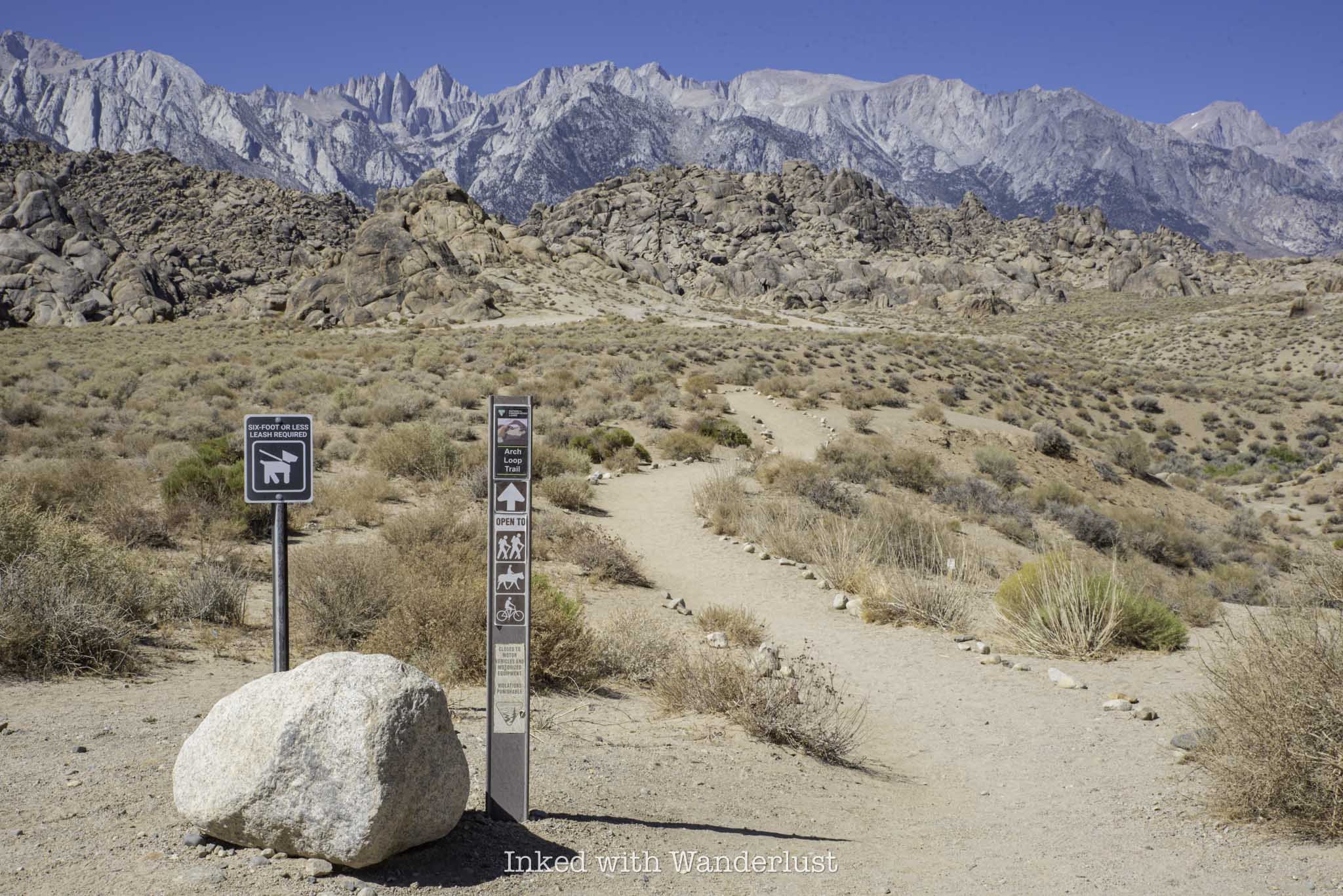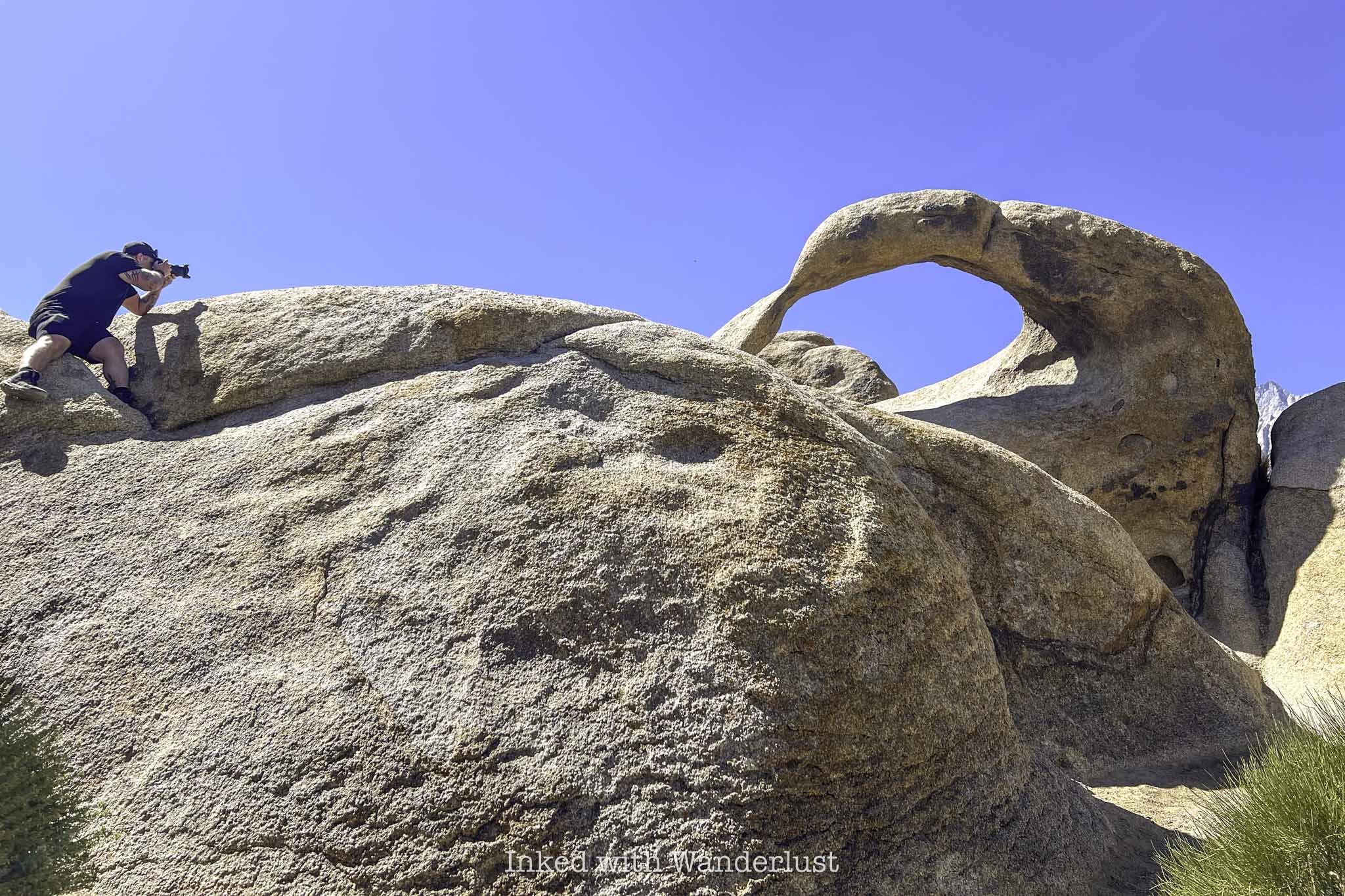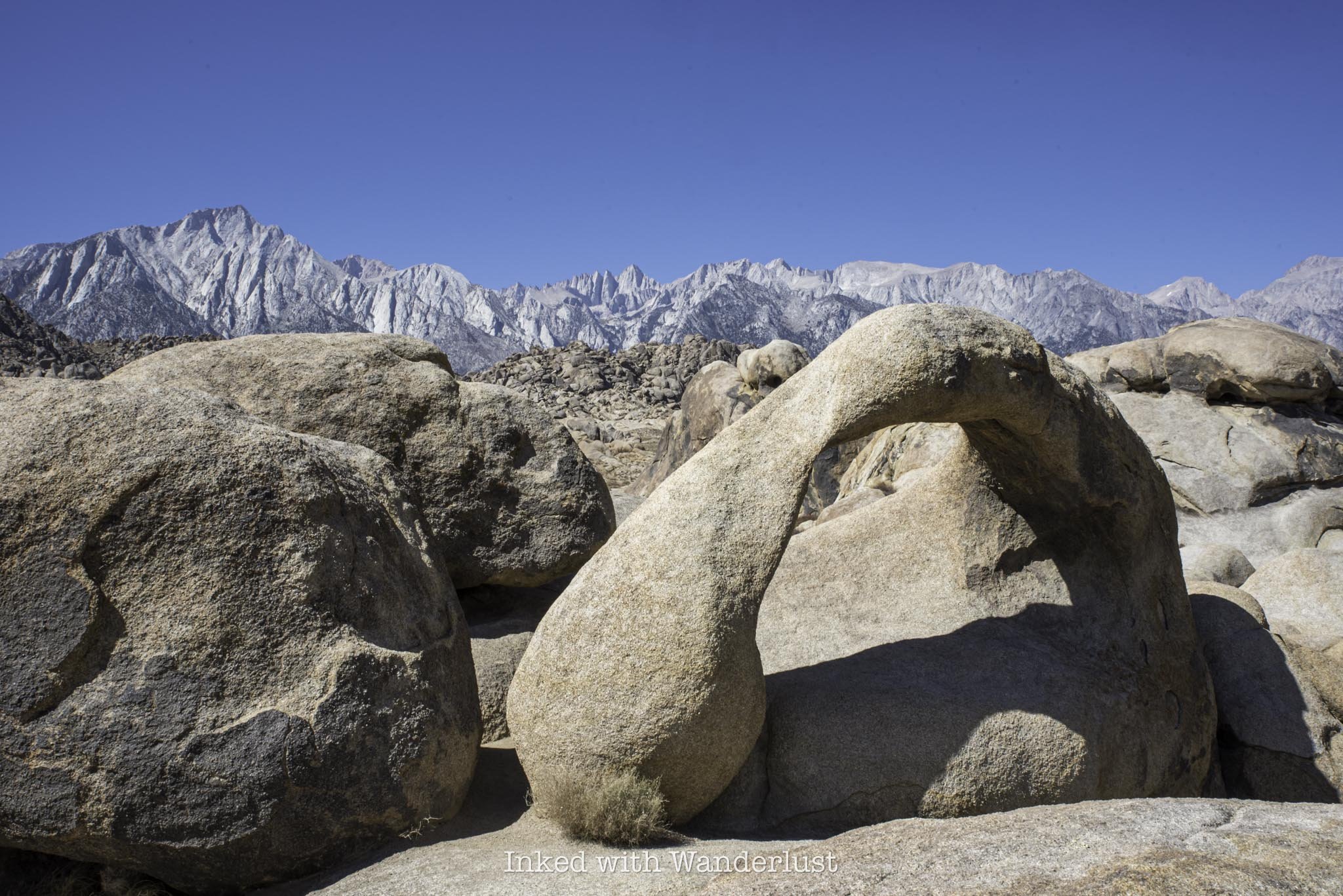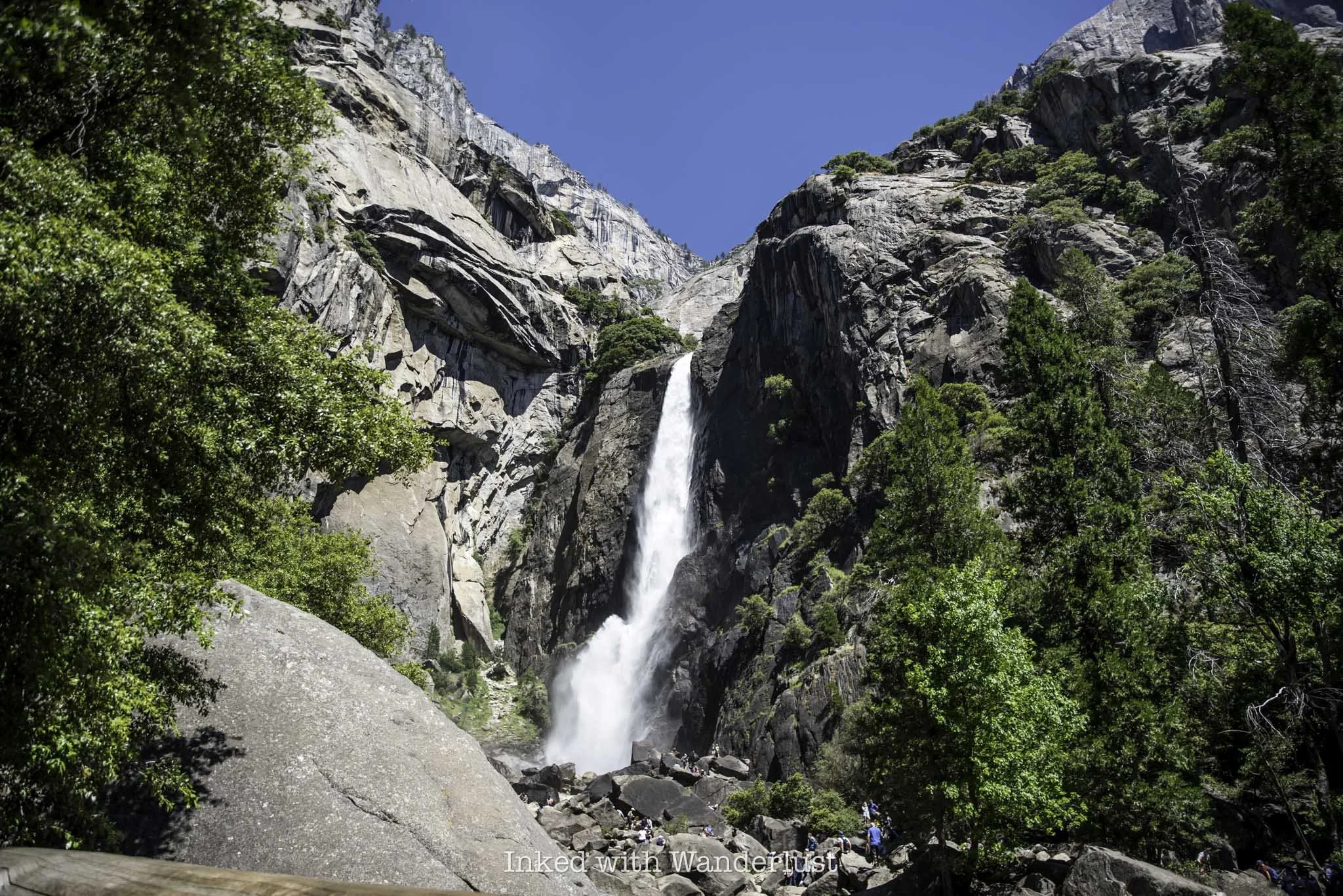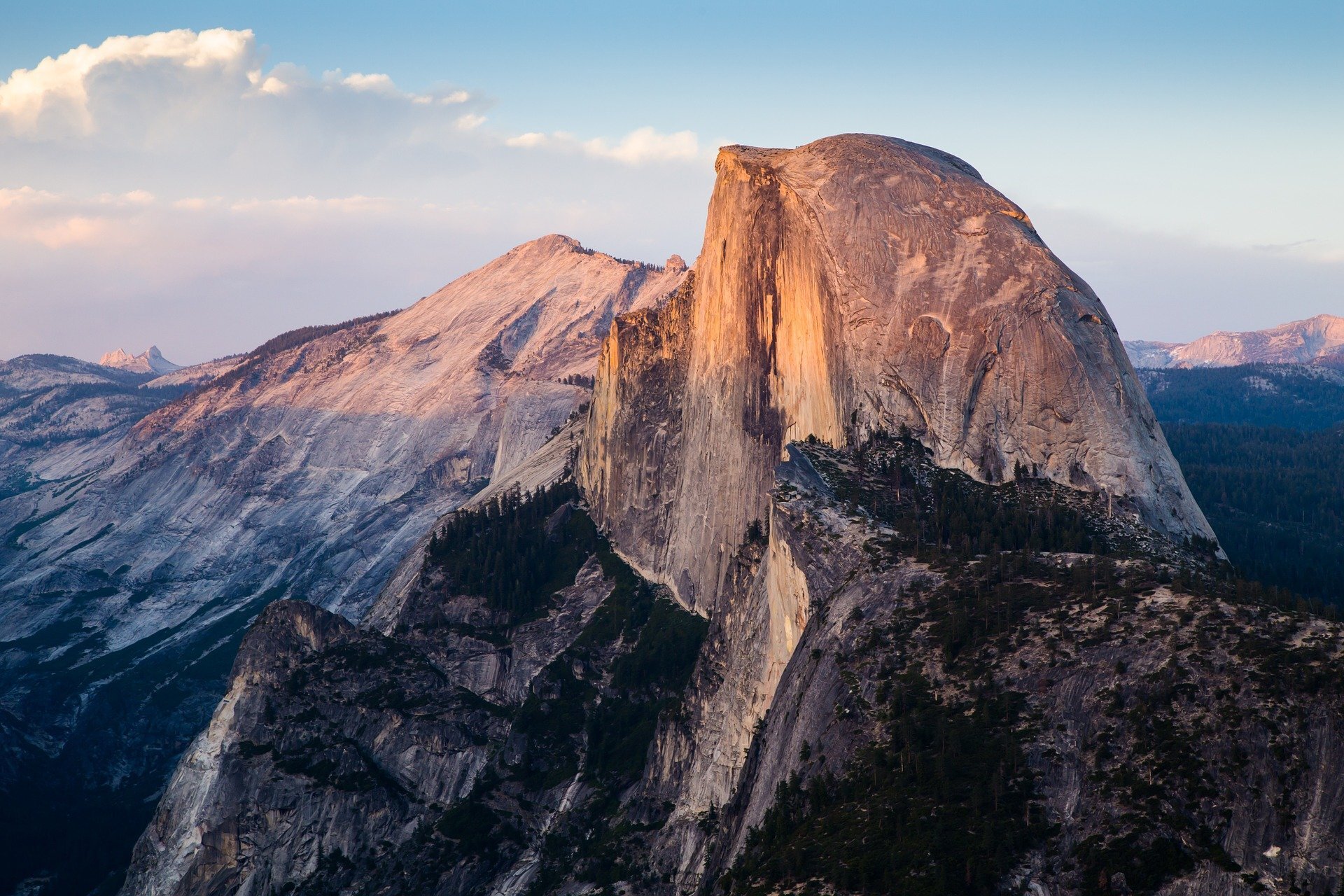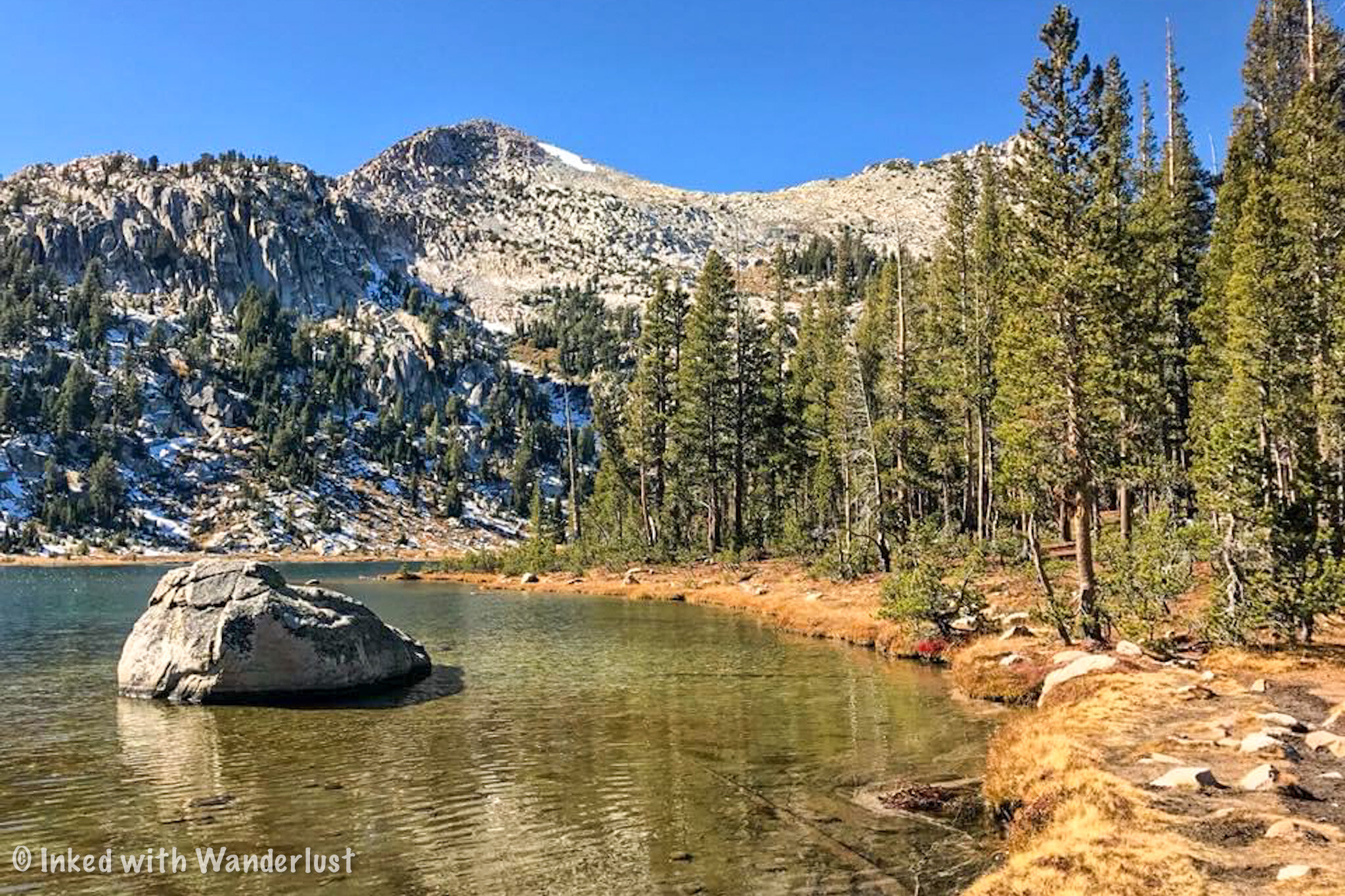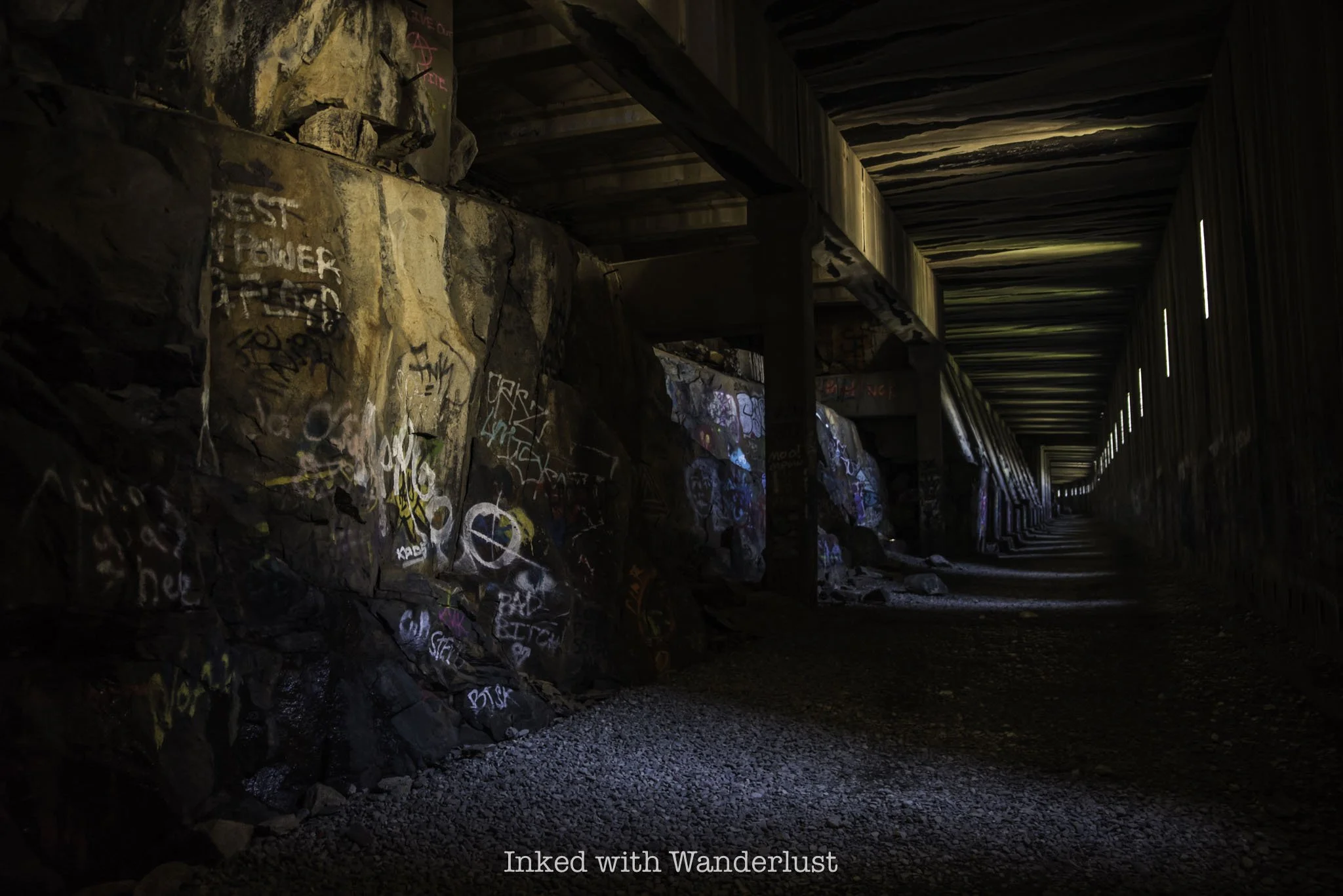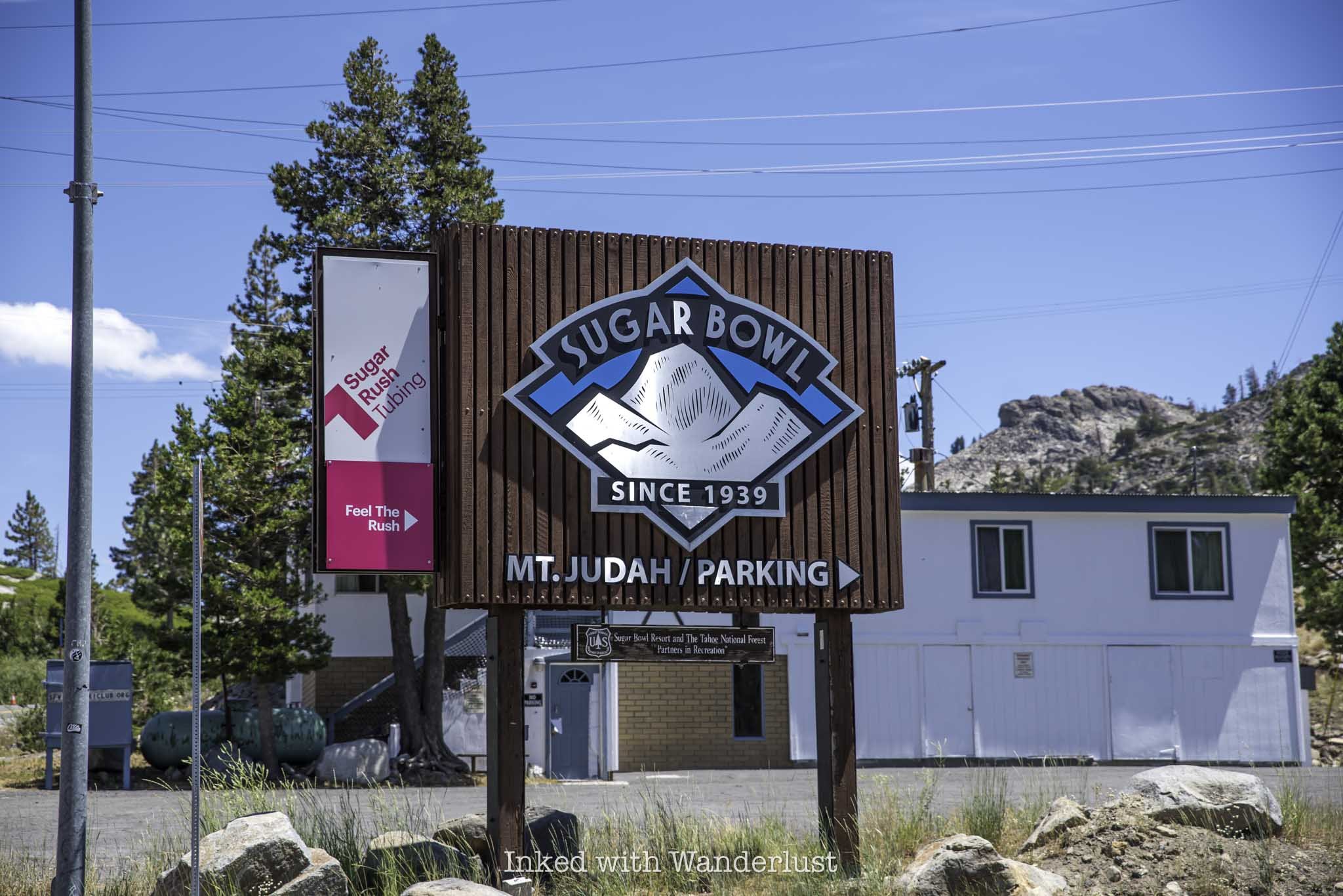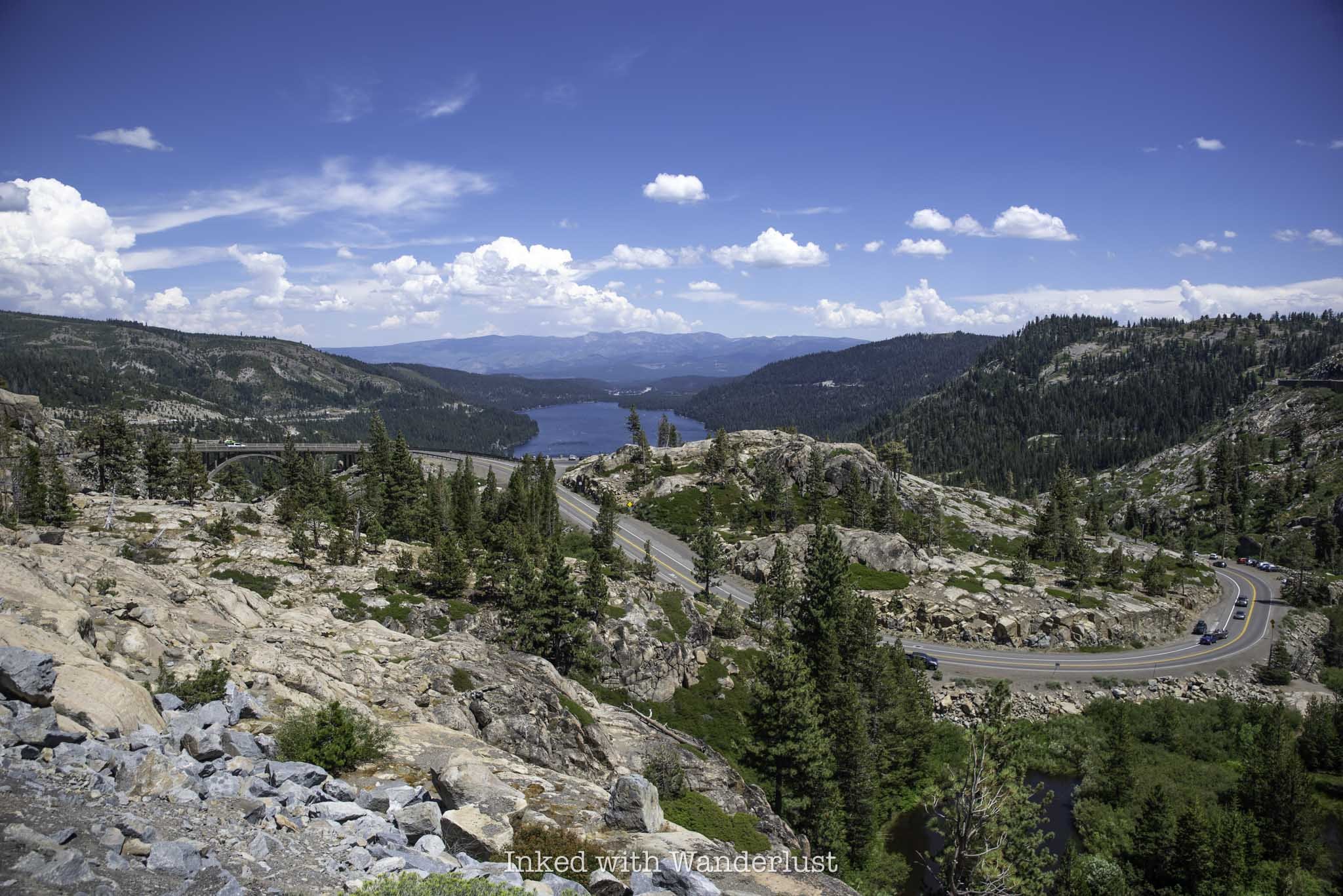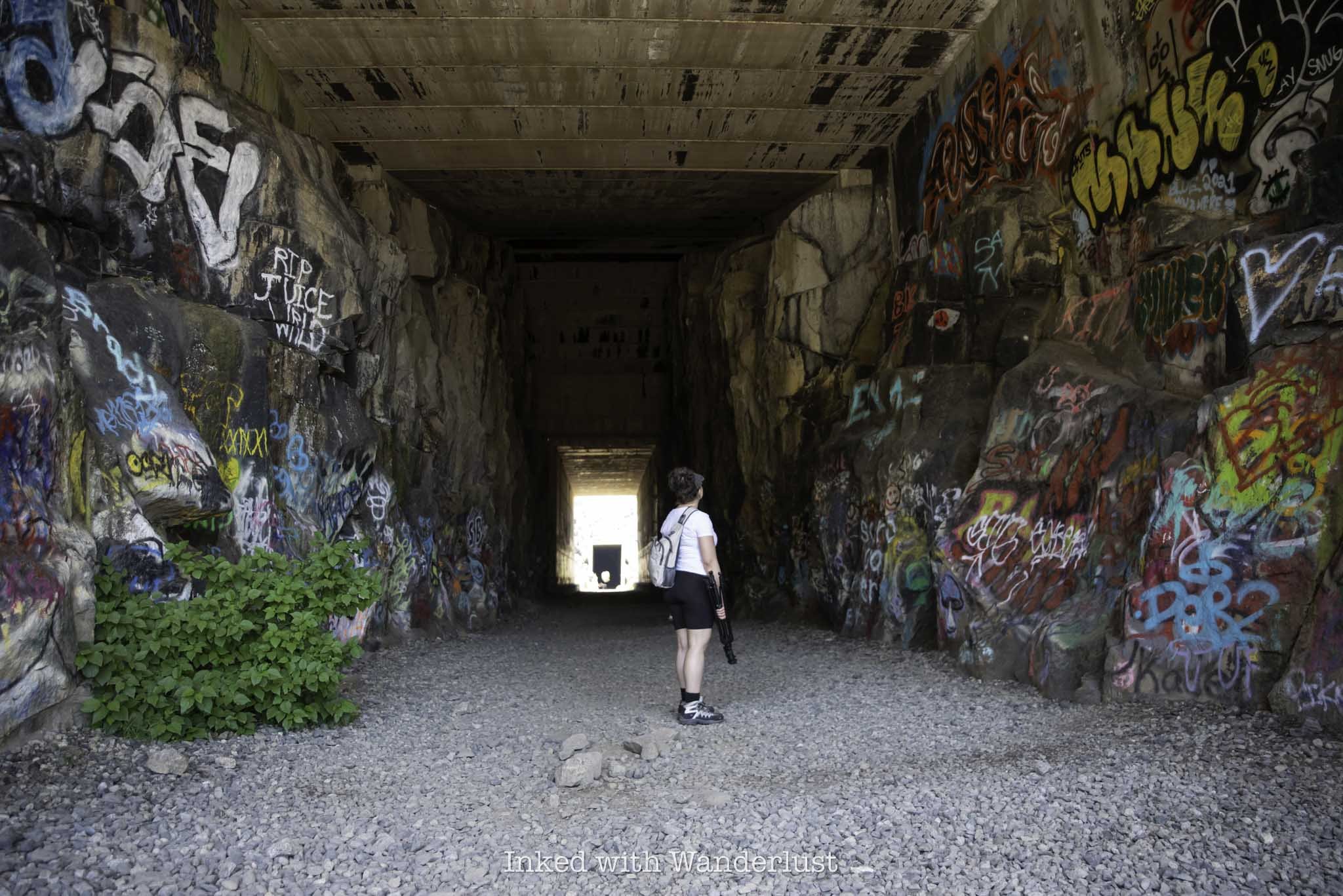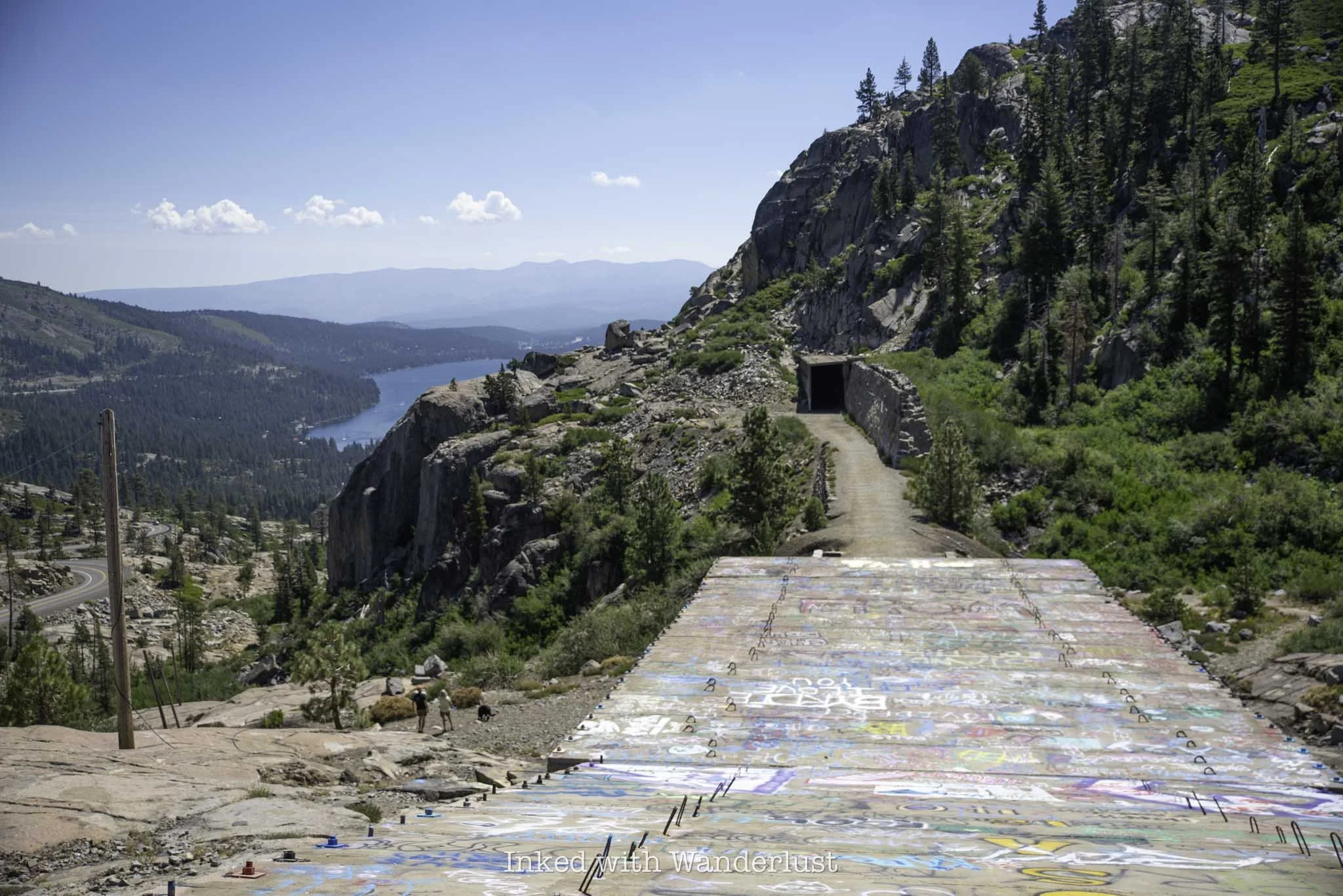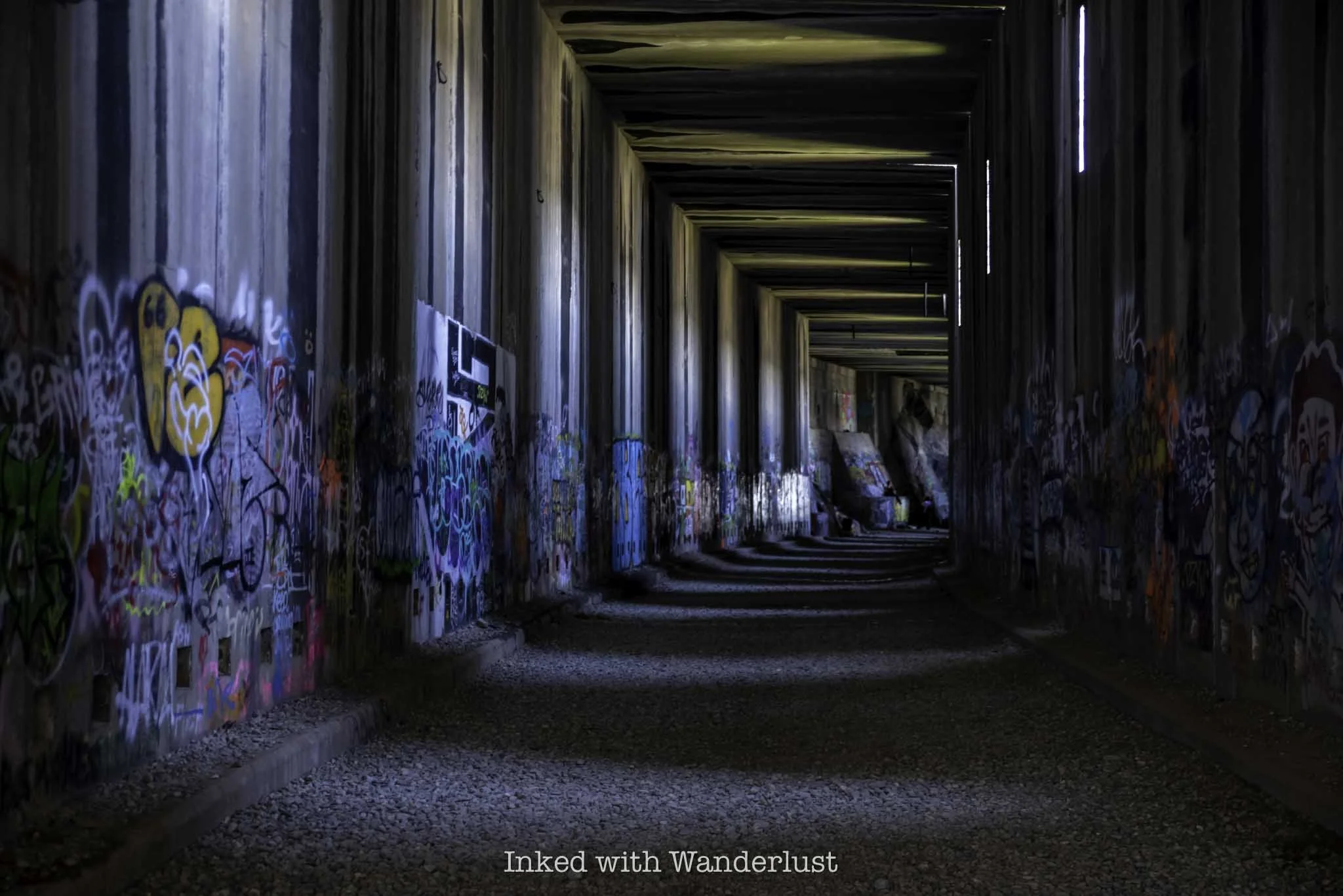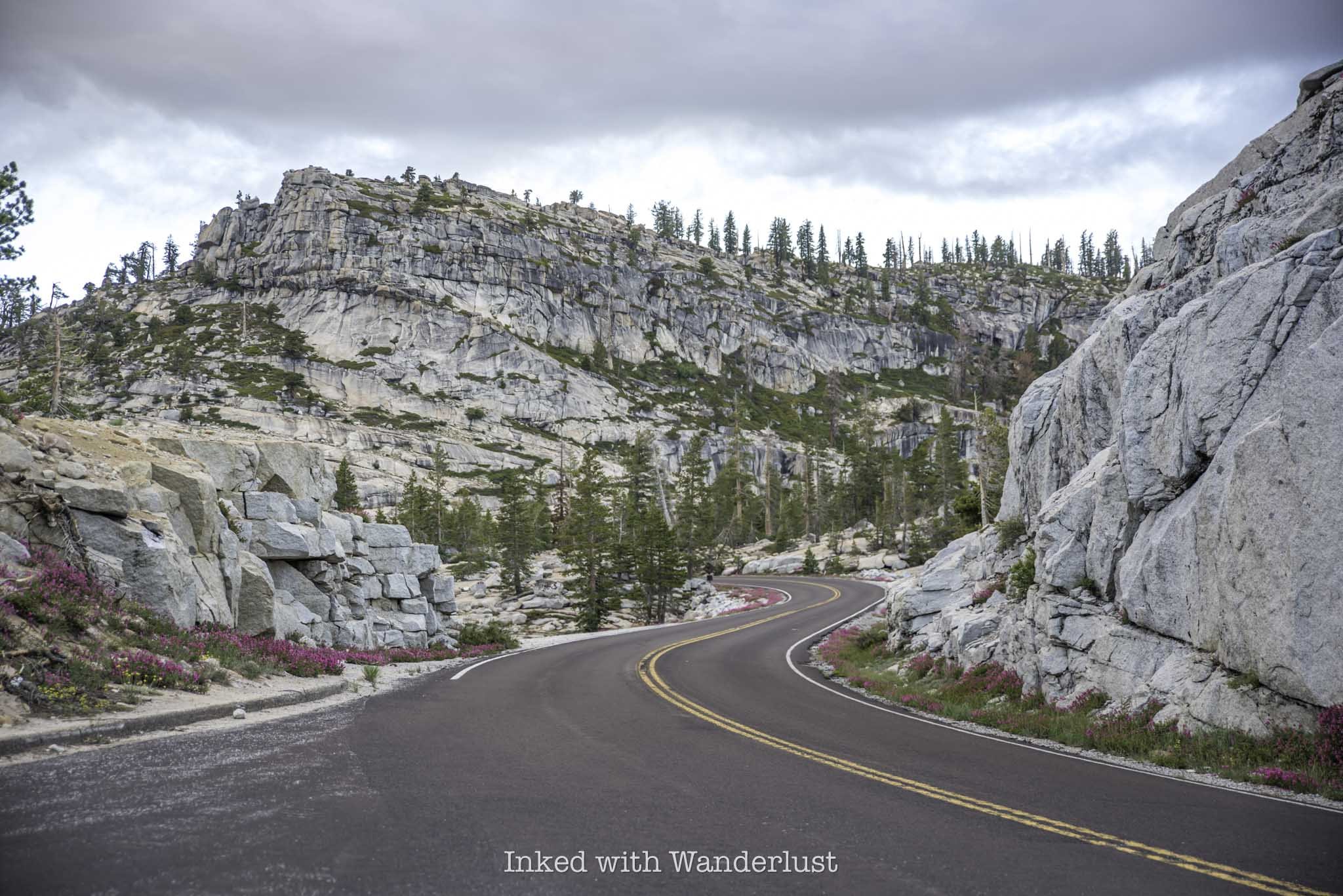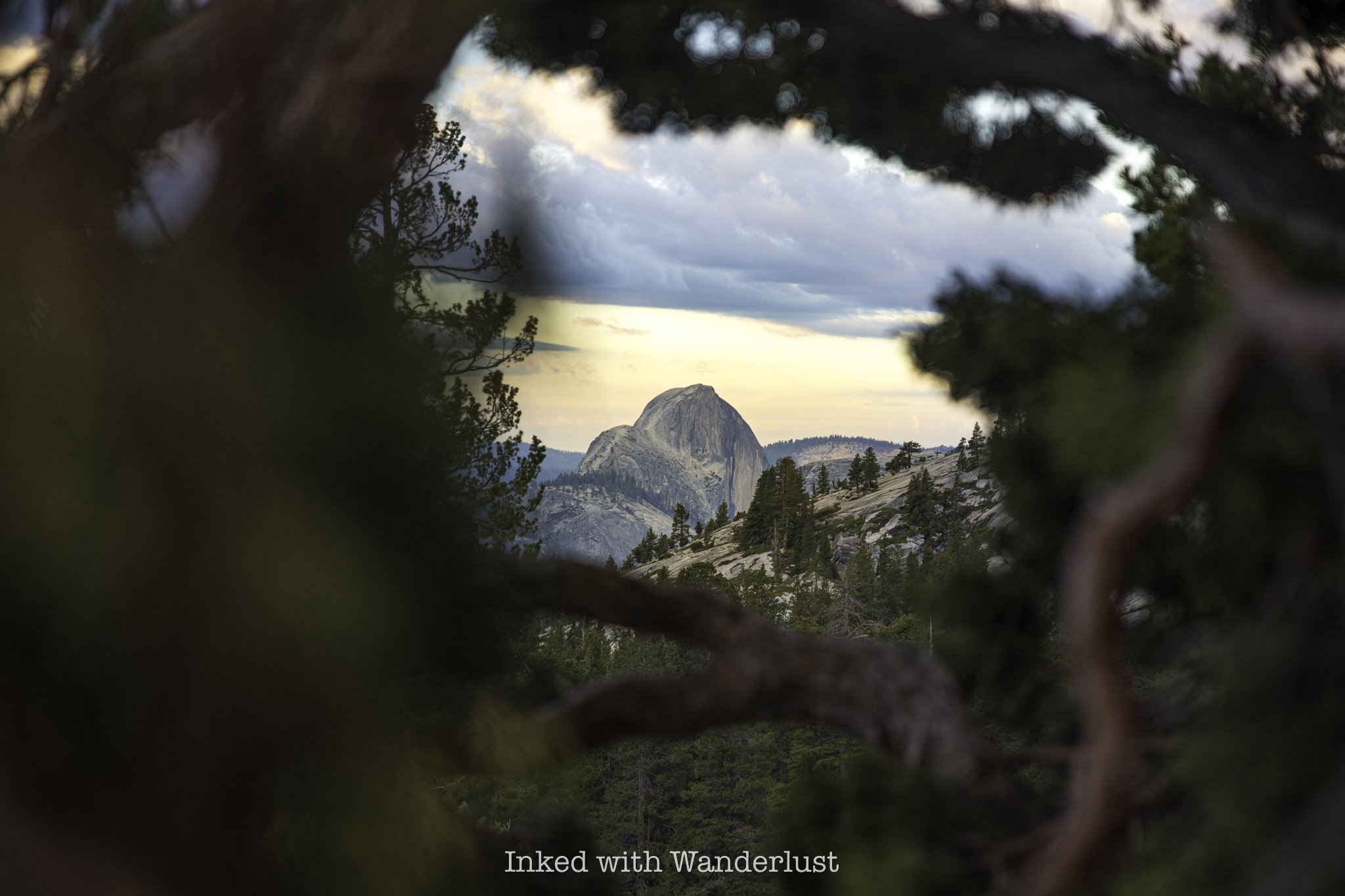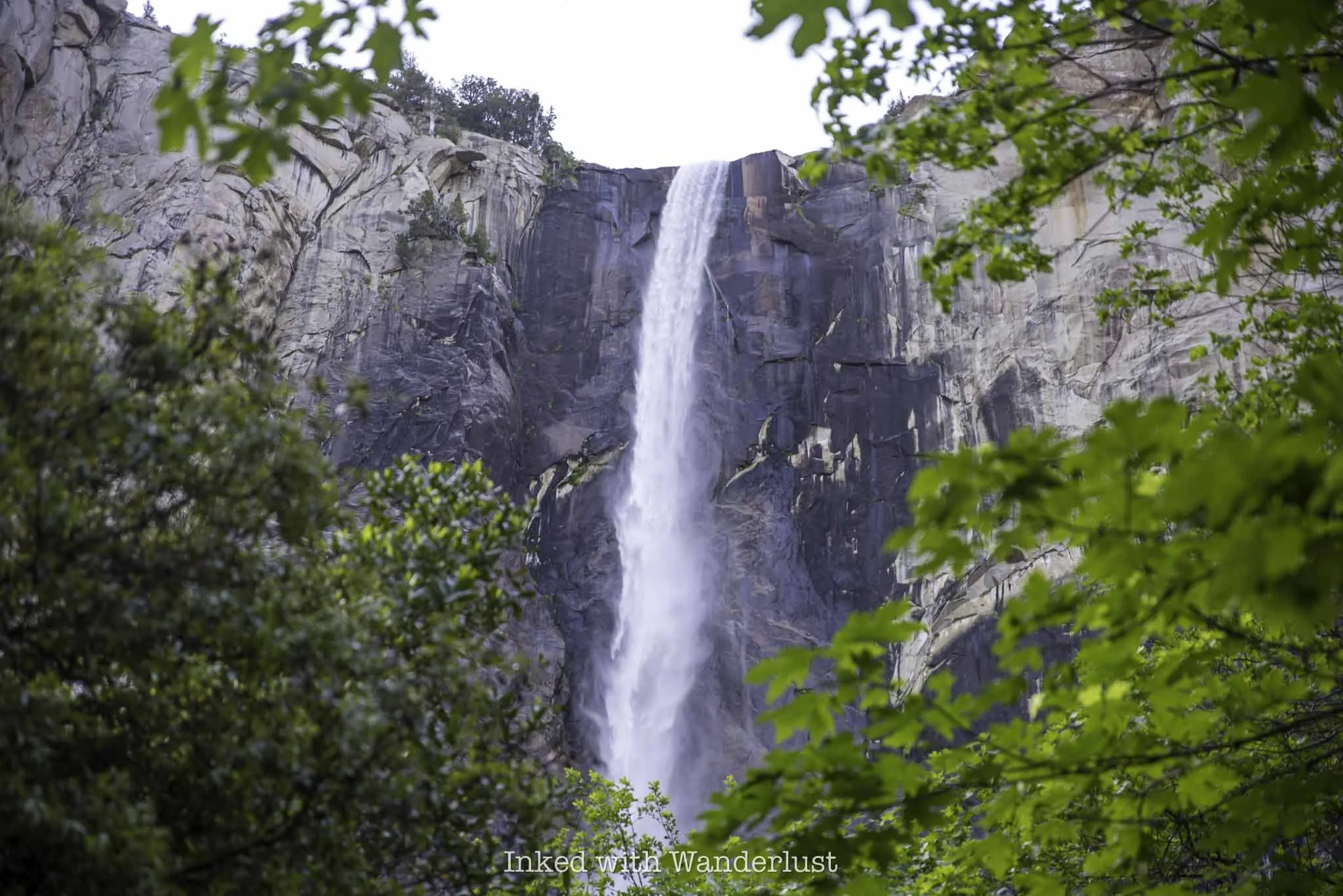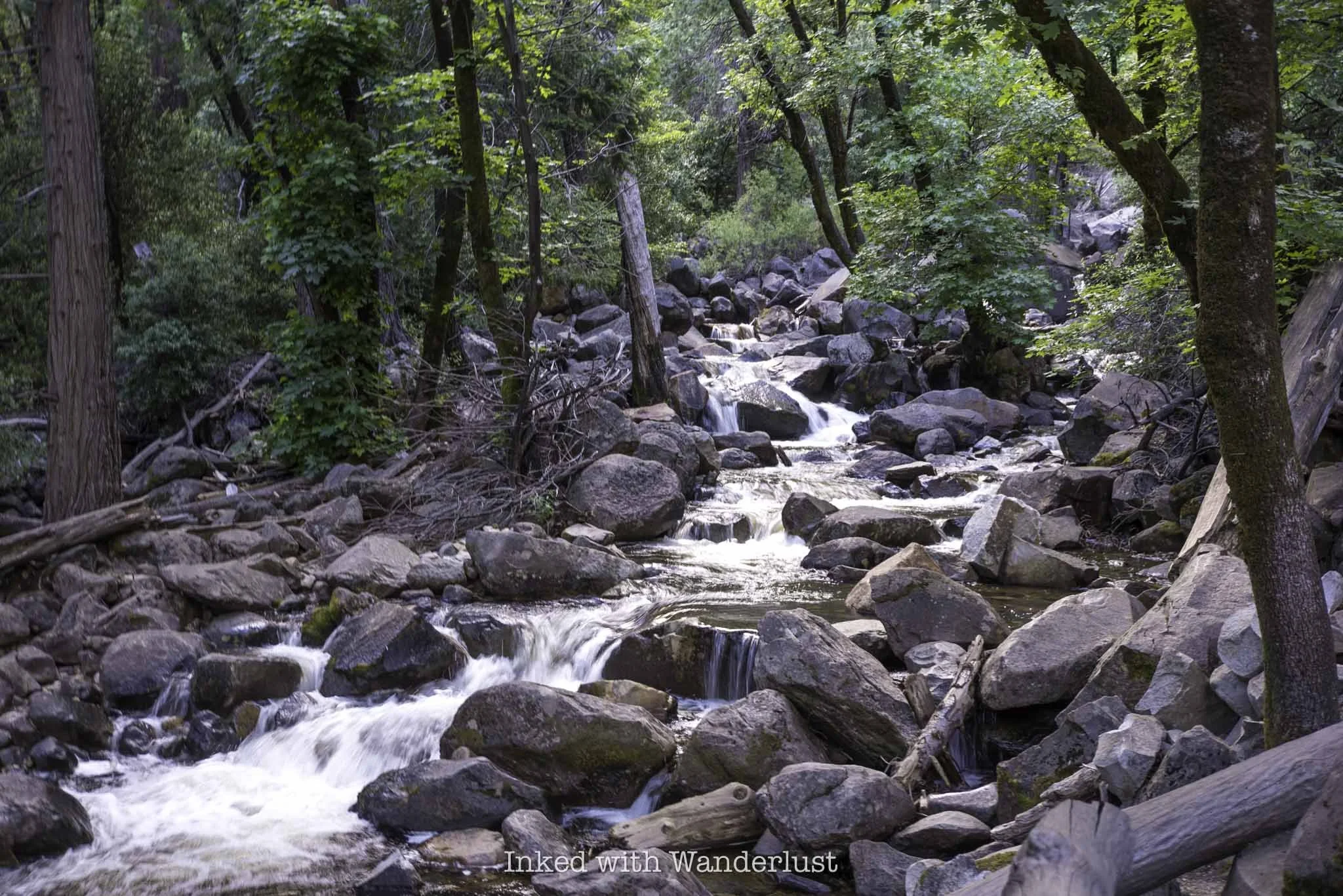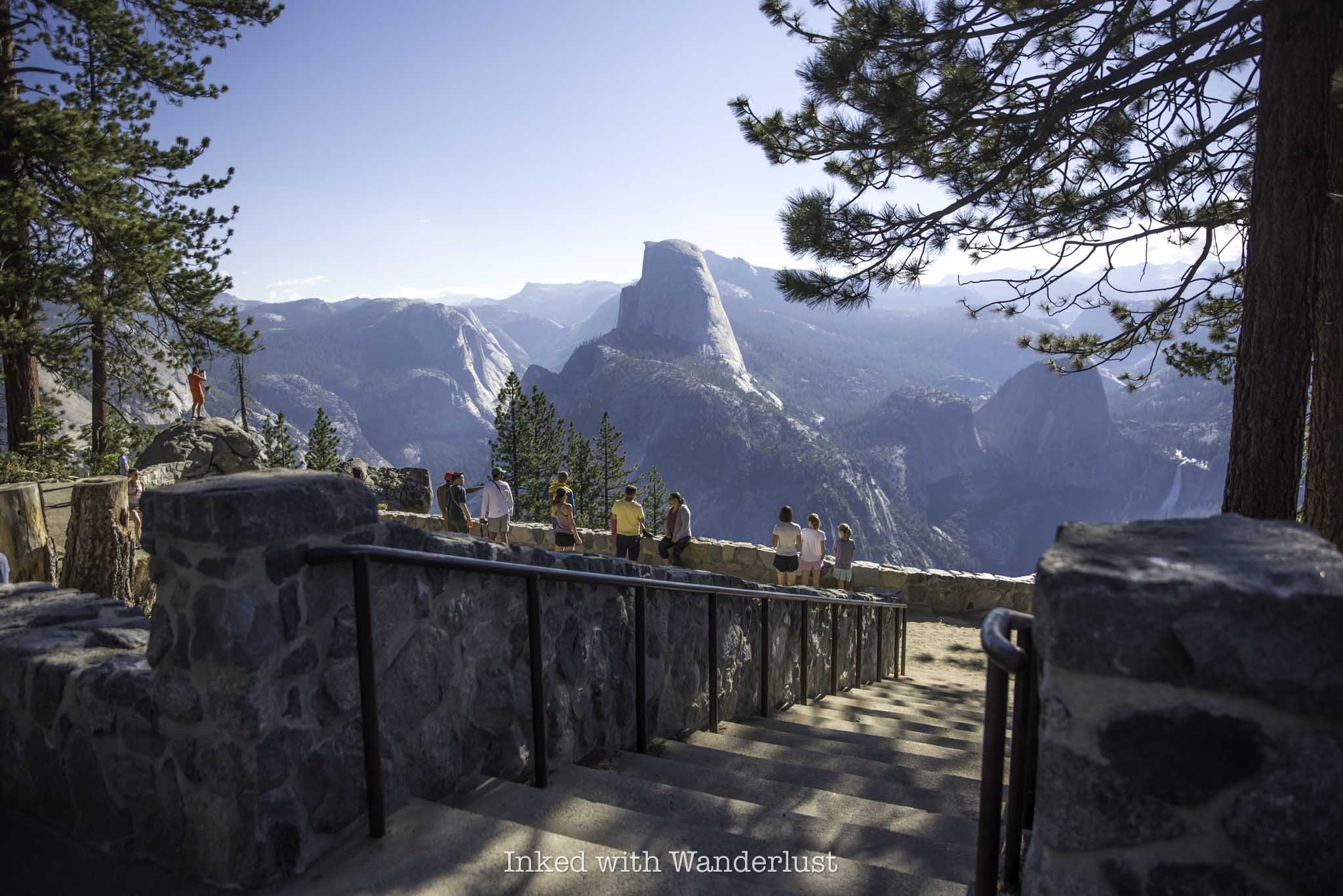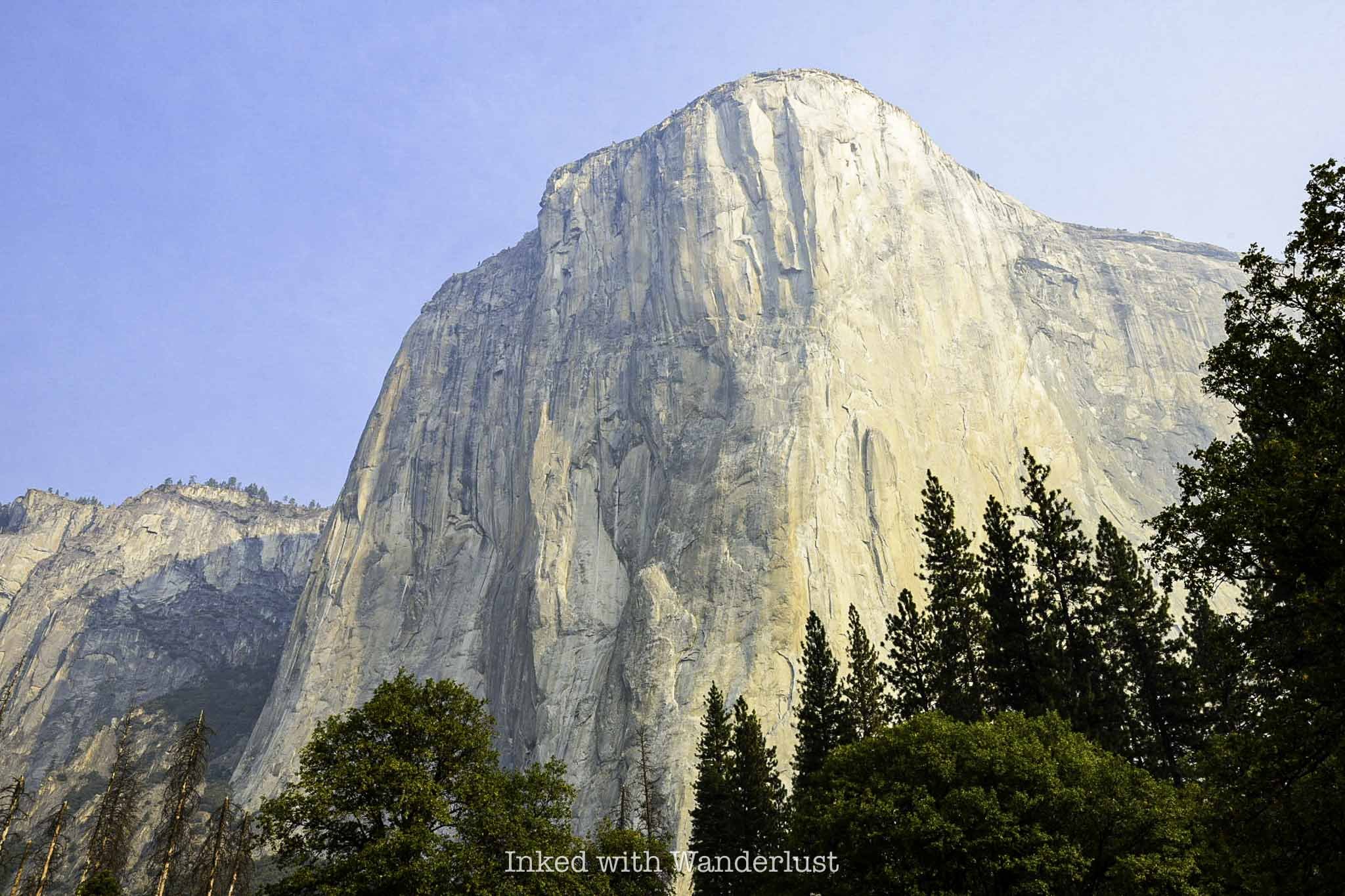Northern California Waterfall Road Trip Itinerary (6 Waterfalls!!)
The northern half of California is literally teething with one gorgeous waterfall after another. Some, like Burney Falls, are easy to…
Disclosure: This post contains affiliate links. If you make a purchase through these links, I may earn a small commission at no additional cost to you. I only recommend products or services that I believe will add value to my readers.
The northern half of California is literally teething with one gorgeous waterfall after another. Some, like Burney Falls, are easy to view as they require little to no effort beyond driving there. Others, such as the upper portion of Yosemite Falls, require extra effort and determination.
The Shasta region, located in the upper sector of California, has many of the former. In fact, between the small mountain towns of Burney and Dunsmuir along a 60-mile stretch of road are six such waterfalls, some of which require nothing more than getting out of your car to see.
If you plan correctly and don’t linger for too long, seeing all six of these waterfalls is entirely doable. I have been to all of these falls, numerous times, and will provide what I believe to be a solid Northern California waterfall road trip itinerary to see them.
Additionally, I’ll provide information about parking, some helpful (from experience) tips, area restaurants, hotel recommendations, and more. Let’s get into it!
I Recommend Beginning in Dunsmuir
The town of Dunsmuir is located right off of Interstate-5 in the Shasta region of California. It is here where you’ll find the first two waterfalls on this list. One of which requires the most amount of effort of the six to see.
You could also begin in the town of Burney and save Dunsmuir for last if you wish. This itinerary, however, will focus on beginning in Dunsmuir. If you want to begin in Burney, simply hit these waterfalls in the reverse order.
There are numerous hotels and local eateries in Dunsmuir. To start your day, I recommend a breakfast burrito and coffee at Up and Running Espresso. Enjoy your breakfast, secure yourself a parking spot, and head off to your first waterfall of the day.
1) Mossbrea Falls
Admittedly, this one’s a bit tricky. It’s fairly easy to get to, but you’ll need to be ok with a little trespassing to see it. Mossbrea Falls itself isn’t the issue, it’s the route you’ll need to take that traverses across private property.
I wrote an extensive guide with step-by-step instructions on how to get to Mossbrea Falls. Additionally, it’s full of helpful tips, advice, and picture references to ensure a smooth experience.
You’ll need to walk through a private retreat and then along railroad tracks (Union Pacific property) for about a mile to reach the falls. Both property owners have relaxed their stance on hikers going through their property, as I had no issues at all when I went.
Mossbrea Falls is easily one of the most beautiful waterfalls I’ve ever seen. It’s almost like stepping into the pages of a fairytale novel. Trust me, it’s worth the effort. If you knock this one out first thing in the morning, you should be able to complete it in two hours or less.
When you’re done, and if it’s open, consider stopping for lunch at nearby Yaks on the 5 restaurant. It’s right down the street from Mossbrea and serves can’t-miss, delicious artisan burgers.
READ ALSO: “The Ultimate Guide to Mossbrea Falls in Dunsmuir”
2) Hedge Creek Falls
From where you parked for Mossbrea Falls, head north on Dunsmuir Avenue or on Interstate 5 to Hedge Creek Falls. As you get closer, you’ll see signs indicating which exit to take and where to park.
From the small pull out-style lot, it’s a short jaunt down to the relatively small, but nonetheless beautiful fall. This single flow fall flows 35-feet over a dramatic basalt shelf with towering pines and other greenery abound.
A unique aspect to Hedge Creek Falls is you’re able to walk behind it, offering a unique perspective. This is the only fall on this list where you can do that, which helps it to stand out.
READ ALSO: “Hedge Creek Falls: A Short Hike to an Incredible Waterfall”
3) Upper McCloud Fall
To reach your next destination, you’ll head east on CA-89 towards to the historic town of McCloud. More specifically, McCloud River Falls. From Hedge Creek Falls, it’ll take roughly 25 minutes of drive time to reach the upper fall.
There, you’ll find three incredible waterfalls along a single 3.9-mile (out and back) trail. However, you likely won’t have time to hike it and still make it to the final waterfall. Instead, drive to each one as they all have their own lots and viewing areas.
I suggest beginning at Upper McCloud Falls. You can see it fairly well from the viewing decks but for a better view, head a bit further down the trail to an unmarked spur trail. Shortly after the concrete ends, you’ll see said unmarked spur trail on your left.
Take your time as it’s a bit sketchy. From the bottom, you’ll get an incredible “head-on” view of the fall and can access the pool if you want to swim. I do recommend saving that for the middle and/or lower falls, though.
4) Middle McCloud Fall
After checking out the upper fall, you’ll next head to Middle McCloud Fall. The middle fall is the largest and, in my opinion, most picturesque of the three. It also has a large and deep pool at the base.
However, it’s also the one that requires the most effort to see, provided you want to see it from its base. There are a couple of viewing platforms just steps from the parking lot if you’re ok with seeing it from afar.
To get to the base, you’ll hike the fourth of a mile (one-way) dirt trail to the bottom. Getting there is easy, but it’ll be an uphill slog on the way out. It’s not difficult at all, but be prepared for it.
I encourage you to take a dip in the pool down there. It’s a great way to cool off on a hot summer day and you won’t find a better view. Many folks cliff jump here as well, but I would check for underwater boulders before doing so.
READ ALSO: “How to Hike to the Base of Middle McCloud Falls”
5) Lower McCloud Fall
Next, head further down the road to Lower McCloud Fall. This 12 foot singular fall plunges into a bowl-shaped pool surrounded by basalt rock walls. It’s the most popular (for obvious reasons) for swimming out of the three.
There is no steep trail to take and you won’t need to go down a sketchy spur trail to reach it either, as it’s mere feet from the parking lot. If you skipped swimming at the middle fall, definitely don’t skip it here.
If you want to want to hike the entire trail, I recommend starting here as opposed to the upper fall. You’ll get the initial climb done on your way in, when you have the most energy. The way back will be a breeze as it’ll be all downhill.
READ MORE: “McCloud River Falls: Three Fantastic Waterfalls in One Hike”
6) Burney Falls
Your final waterfall on your Northern California waterfall road trip is the awe-inspiring Burney Falls. If you’ve never been to Burney Falls, you’re in for a treat. It’s largely fed by Burney Creek, but also by underground rivers that flow outward through the large basalt wall.
You can view Burney from above at the accessible (and paved) viewing deck but for the full experience, head down the short path to its base and pool. It’s a sight you can only truly appreciate in person.
Burney Falls does get crowded during the day, which is why I recommend saving it for last and getting there in the late afternoon or closer to sunset. That’s what I do whenever I visit and I almost always have it to myself or I’m sharing it with just a few others.
On the way to Burney Falls from McCloud Falls, you’ll pass the location of the infamous scene from the movie “Stand by Me” where the boys ran for their lives across a bridge from an oncoming train. It’s still there if you want to check it out this piece of Hollywood history.
As stated earlier, to do this in the reverse order, go to Burney Falls in the morning. From there, stop at the three McCloud Falls. Then, drive to Dunsmuir and knock out Hedge Creek Falls before concluding at Mossbrea Falls.
If you’re planning to stay near Burney Falls, I recommend Shasta Pines Motel in the town of Burney. It’s a no-frills motel with little in the way of amenities, but it’s clean and affordable with comfortable bedding. From Burney, you can check out Subway Cave, Lassen-Volcanic National Park, and more!
READ MORE: “McArthur-Burney Falls State Park Ultimate Guide”
PROVERBS 16:9
The Getaway Cafe: An Excellent Breakfast Option Near South Lake Tahoe
Located about 18 minutes (drive) from the Heavenly Village area of South Lake Tahoe, in the tiny community of Meyers, sits…
Disclaimer: I am not a professional restaurant critic and I paid for my meal out of pocket. This restaurant hasn’t offered me any incentive to write this post. My opinions are my own and are based on my personal experience only.
Located about 18 minutes (drive) from the Heavenly Village area of South Lake Tahoe, in the tiny community of Meyers, sits the charming Getaway Cafe. Getaway Cafe offers an array of breakfast and lunch classics, always made fresh to order.
Restauranteur Diane Guth states on the website that she’s “always dreamed of owning a restaurant where my friends and family would feel at home and where strangers would soon become friends”. Based on my experience, she surely made that dream a reality.
I love dining at Getaway Cafe. Each time I go I’m treated to delicious food, along with fantastic and attentive service. Sure, it’s a bit out of the way from South Lake proper, but it’s worth the small effort to get there. Let’s get into it!
Getaway Cafe Location
Despite popular belief, Getaway Cafe isn’t located in South Lake Tahoe proper. It’s located nearby in the tiny El Dorado County community of Meyers. Despite this, it’s an easy, relatively quick drive from South Lake. Below is its distance from more popular areas of Lake Tahoe proper:
Heavenly Village: 9 miles
Stateline: 10 miles
Emerald Bay: 11 miles
Tahoe East Shore: 32 miles
North Lake area: 32 miles*
You may be inclined to skip it due to its distance from the lake but I implore you to reconsider. There’s only one or two turns, as it’s mostly a straight shot (depending where you’re driving from).
Parking is usually easy to come by in the large dirt/gravel lot out front. It does get busier throughout the day, so be prepared to have to park elsewhere nearby and walk over (this isn’t a common occurrence, though).
Seating is both indoor and outdoor (mostly covered). The inside is small, so I recommend opting for a seat outside if given the choice. There, you’ll be dining under shade provided from a combination of umbrellas and towering pines.
The Getaway Cafe Menu Items I Tried
Getaway Cafe’s menu consists of common American and Mexican fare, some with a creative twist and at affordable/fair prices. The “Best of the Best” section of their menu lists many of the house favorites.
A few of these include Maple Bacon Glazed French Toast (amazing, by the way), Chorizo Quesadilla, Deluxe Eggs Benedict, and Banana Nut Pancakes dishes. For lunch, you’ll find an array of burgers, wraps, and salad offerings.
On our most recent visit, my wife and I ordered from the regular menu. Additionally, we split a plate of their current special, which was a lemon-blueberry french toast dish. Yes, it was as delicious as it sounds and looks.
It was a serving of their signature french toast bread topped with lemon slices, blueberry compote, a lemon-blueberry meringue (for transparency, I’m not 100% sure that it’s a meringue), and finished with a dusting of powdered sugar.
It was possibly the most delicious french toast I’ve ever had. The lemon and blueberry flavors were balanced perfectly, and the nutty richness from the sourdough toast was a nice contrast to the sweetness of the blueberry.
From the regular menu, my wife ordered the classic eggs benedict dish and I selected an egg omelet with pepper-jack cheese. Both dishes came with a side of hashbrowns (there are other options) and mine came with slices of sourdough.
While simple in terms of presentation, the hashbrowns here are my favorite of any restaurant. There isn’t anything inherently special about them, but the chefs at Getaway always seem to get the exterior perfectly crisp, which is where others often fail.
The eggs benedict was rich, creamy, and had a nice balance of soft texture and savory flavor. My omelet was…an omelet. I ordered it mainly for the protein as the real star of the meal was that decadent french toast.
All told, The Getaway Cafe is an excellent option for breakfast or lunch while in South Lake Tahoe. Sure, there are a few other, much closer options, such as Red Hut Cafe and Driftwood Cafe, that are also great.
However, Getaway Cafe is the clear stand-out for my wife and I. The owner and staff, with their friendliness and attentive service, is what sets it apart from the others. I highly recommend paying them a visit.
If you’re planning to visit Lake Tahoe, I have blog post guides about many of the most popular destinations. Be sure to read about Emerald Bay, the Tahoe East Shore Trail, and Glen Alpine Falls.
If you’re wanting to spend a day at the beach, read about Sand Harbor’s reservation requirements here, or consider spending the day at Round Hill Pines Beach Resort. You can’t go wrong with either one.
LUKE 4:10
My Honest Review of Lum Hotel Los Angeles: Close to SoFi Stadium
My wife and I found ourselves returning to Sofi Stadium in Los Angeles for the opening night of Beyonce’s Cowboy Carter tour. We…
Disclosure: This post contains affiliate links. If you make a purchase through these links, I may earn a small commission at no additional cost to you. I only recommend products or services that I believe will add value to my readers.
My wife and I found ourselves returning to Sofi Stadium in Los Angeles for the opening night of Beyonce’s Cowboy Carter tour. We were there six months prior for Green Day’s Saviors tour and learned our lesson of NOT staying at a hotel within walking distance of Sofi Stadium.
Much like any popular event at big stadiums, parking (pre event) and ride sharing (post event) is commonly - shall we say - a shit show. While Sofi does decently with the former, it fails spectacularly with the latter.
With that in mind, I began hunting for hotels after securing our tickets and came across Lum Hotel. It had mixed reviews online but due to its amazing location, I decided to pull the trigger and book a two night stay.
Lum had a few stand outs, but almost as many drawbacks. In this review of Lum Hotel, I’m going to discuss and rate topics such as cleanness, our room, the property’s amenities, parking situation, proximity to the various stadiums and more.
QUICK STATS…
Location: Los Angeles (Inglewood), California
Rewards: Hilton Honors
Check In: 4pm
Check Out: 11am
Early Check In/Late Check Out: Yes (additional fees)
Rates: $150 - $400 per night
Resort Fee: None
WiFi: Yes (complimentary and decent speed)
Adjoining Rooms: Yes
Multi-Room Suites: No
Bathtubs in Room: No (stand-up shower only)
Mini Fridge: Yes
Microwave: No
Parking: On-site, valet service only
Parking Fee: $55 - $60 per night
Pet Friendly: Yes (additional fees)
Pool: Yes
Hot Tub: Yes
Fitness Center: Yes
Laundry Service: No
Dining Options: On-site restaurant
Lum Hotel Los Angeles Location - 9/10
Location is Lum Hotel’s biggest perk and is where it receives top marks from me. It’s on the 3900 block of Century Blvd, directly adjacent to the main entrance of Intuit Dome and across the street from the Hollywood Park complex (where Sofi Stadium is located).
When I say adjacent to Intuit Dome, I mean it. It’s literally right on the other side of the divider wall in the parking lot. I took the below photo near Intuit’s entrance. Beyond the hands sculpture, you can visibly see the hotel’s on-site restaurant, Cork & Batter.
The hotel is also within walking distance of Sofi Stadium and Kia Forum, making it an ideal location for games and events at either of the three venues. Proximity to other destinations of note include:
Hollywood Park: Across the street
Sofi Stadium: 0.7 mile (20-min) walk
Kia Forum: 1 mile (25-min) walk
Crypto Arena/LA Live: 14 miles
Cosm: 0.5 mile (15 min) walk
La Brea Tar Pits: 11 miles
Hollywood Walk of Fame: 14 miles
Griffith Observatory: 21 miles
LAX: 3 miles
Long Beach Airport: 21 miles
Burbank Airport: 29 miles
The only negative aspect of its location is a direct result of the same reasons that make it ideal - the crowds. Often, there are events taking place at Intuit and Sofi concurrently, sometimes even the Forum as well.
This creates a perfect storm of pure chaos. Congestion on the sidewalks, especially as the venues empty out, is often shoulder to shoulder. And the traffic? There are no words to properly describe it.
If you’ll be driving or ride-sharing in, be sure to research Intuit‘s event schedule on the day of your arrival and time it prior to their end times. Otherwise, you’ll be dealing with having to navigate the mess you see in the photo above.
As stated, that’s the only negative thing I can say about its location. Otherwise, it’s in a great spot for those who are attending an event at either of the three venues. Unfortunately, I’m afraid that’s where most of the positivity in this review ends.
Lum Hotel Parking - 2/10
Unfortunately, parking is where this review starts its downward turn. I’ll preface by stating that egregious parking fees in Los Angeles aren’t unique to Lum Hotel, but I criticize all hotels that I feel nickel and dime their guests.
Lum Hotel uses a third party valet service to handle parking. You have no other choice as it’s required by the property. There’s a tiny parking lot in front of the hotel, but most vehicles are kept in the adjacent ally.
The rates fluctuate based on which website you’re looking at, but I paid $55 on my visit. For comparison, Sofi charges $60 for parking (one time). Here, however, you’re having to pay that high parking rate for every night on your reservation.
That’s where my main criticism comes from. The entire point of staying within walking distance of any event venue is to avoid traffic and insane parking fees.
You certainly avoid the latter, but the former (in this case) is worse because you’re paying even more than you would if you stayed further away (for a cheaper nightly rate) and just drove to Sofi and parked there, but I digress.
On arrival, you’ll immediately be greeted by the valet staff. My experience with them was mostly positive. They treated my vehicle with respect and were helpful with getting my luggage together.
Amazingly, the property has only one luggage cart for the entire hotel, which was in use when I arrived. Our valet kept my vehicle parked by the door so I could make multiple trips to get my wife and I’s luggage to our room.
I understand that parking is limited and these fees are another revenue source for hoteliers. However, I feel registered guests should get a break on parking fees. A discounted rate, at the very least.
Check-In Experience - 8/10
My check-in experience at Lum Hotel was good, honestly. The reason it’s 8/10 instead of a 10/10 is because of the lack of luggage carts and me having to make multiple trips to retrieve my luggage as a result.
Aside from that, it went great. Despite booking my stay through Expedia, there were no hiccups with their system. It was right around standard check-in time (4pm) so it was busy, but the staff at the desk did a great job taking care of everyone.
Quick tip, don’t use the elevator directly across from the front desk. It’s, shall we say, compact. It’ll maybe fit three adults with luggage. As a result, lines form quickly, especially around check-in time.
Instead of waiting for that one, simply walk down the proceeding hallway and take the elevator at the very end of it. It’s much larger and during my stay, there was hardly anybody using it so my wife and I never waited.
The Room - 6.5/10
I booked a king room for our two-night stay. The room was on the small size with faux-hardwood throughout (except for the bathroom, which was a patterned vinyl flooring). Despite its size, I feel it’s just right for two people. Any more than that would be pushing it, though.
To compensate for that, they do offer rooms with two queens and adult sized, hostel-style bunkbed set ups if you’re coming with a larger group. Most rooms also include a mini-fridge, safe with keypad, iron, flat screen TV and balcony.
Just about all of the amenities mentioned above are stored on/in the workstation (pictured below), which also doubles as your storage rack. You can keep your luggage in the space above, as well as hang jackets or hoodies.
There’s a work desk with ample space and wall plugs nearby. Next to the work station is a space where your mini-fridge and safe are placed, followed by a smaller area for shoe storage. The k-cup style coffee maker is also located here.
The safe was large enough for my Apple Macbook Pro (13-inch) to fit snugly. However, I would advise against keeping anything powered by lithium batteries in it. The safe sits on top of the fridge, which does a great job at heating the safe.
Lithium batteries are somewhat sensitive to prolonged heat exposure and thus, this set up creates a potential fire hazard or at the very least, damage to or outright ruining the device.
The bathroom is a decent size and features a doorless, stand-up style shower. Going by photos of the other rooms, it doesn’t appear as though bathtubs are included anywhere, which is often a deal breaker for families with small children.
There are full-size bottles of body wash, shampoo, and conditioner stationed on the wall. In my room, the body wash was missing. It wasn’t a big deal to me as I bring my own toiletries with me when I travel.
The water pressure in the shower was decent, but there was barely a trickle coming out of the sink faucet (which made it challenging to properly clean my razor). Additionally, there’s no space in the shower to place your soap, shampoo, etc (aside from the floor, that is).
My wife theorized that the bathroom was likely designed by a man, as it is fairly basic and lacks common conveniences other properties at this price-point offer and I can’t say I disagree. It isn’t necessarily bad, as it’s fine for what it is.
Finally, the king sized mattress is comfortable, but shockingly short. I’m 5’9 and my feet were flirting with the edge of the bed. If you’re any taller than that, yours are likely going to dangle off the side.
The pillows were decent, though were softer than I’m used to. I prefer mine on the firmer, so I had to stack two of them together in order to get comfortable. The great news, though, is both the bedding and room as a whole were impeccably clean.
My room was street facing and thus, I could hear traffic noise and the like. The sliding-glass door did a great job blocking out most of that noise, though. Additionally, I sleep with a travel-sized white noise machine that blocked out the rest.
The biggest negative (by a wide margin) to the room was the pencil-thin walls. I could hear full conversations, word-for-word, in the room next to us without even trying to listen. Thankfully, our neighbors kept it quiet at night. Otherwise, that would’ve been difficult to overcome.
Hotel Dining - 1/10
Lum Hotel’s on-site restaurant, Cork & Batter, is attached to the hotel and can be accessed via the first floor interior or outside from the parking lot. The menu consists of specialty cocktails and common fare such as burgers, tacos, seafood and more.
I wish I could give you a proper review, but I wasn’t given the opportunity to. My wife and I attempted to dine here for lunch but after we sat down, we were never greeted or approached by any member of wait staff.
We sat there for a solid twenty minutes and despite the tables around us getting served, we were never even offered water. We ended up just leaving and ordering lunch to our room from DoorDash.
The overall vibe of the restaurant was great and there were many menu items I wanted to try, but it just wasn’t in the cards. As an alternative, I recommend crossing the street to Hollywood Park and giving The Meeting Spot your business. Excellent service, great food, and tasty cocktails over there.
Hotel Amenities - 10/10
Lum Hotel has limited, but solid amenities for guests. For starters, there’s a nice lounge area near the check-in desk. Across from that is a table with complimentary fruit-infused water, coffee, and other drink options.
The lap-style pool is located outside in the center of the property, between the two hotel buildings. There’s a decently sized jacuzzi adjacent to the pool, in addition to an abundance of lounge chairs (with accompanying umbrellas) dotting the pool’s edges.
My wife and I didn’t partake in the pool, but it did look inviting (especially at night). Since the hotel is located near LAX, approaching planes constantly fly low overhead, adding an exciting element. The pool and jacuzzi hours are:
11am - 9pm (Sunday)
11am - 10pm (Mon - Thur)
11am - 11pm (Fri - Sat)
Adjacent to the pool is additional seating under a canopy. During the day, I saw guests using this area to work on their laptops and at night, it transformed into a social gathering space of sorts.
Behind this area is where you’ll find Lum Hotel’s fitness center. It’s probably the most spacious hotel fitness center I’ve seen to date. There are two levels, with the strength training equipment on the bottom and the cardio machines on the second floor.
You’ll need your room key to access it, but it’s open 24 hours. To find either the pool or fitness center, simply walk through the double doors to the right of the check-in desk. These doors are always open, but the glass wall surrounding the pool is locked at night.
For a boutique hotel, the amenities at Lum Los Angeles are solid. You’re given 24 hour access to the fitness center (when many other hotels have set hours) and a decent amount of time throughout the day at the pool.
Is Lum Hotel Family or Pet Friendly?
Medium size dogs under 75 pounds are permitted to stay in certain guest rooms at Lum Hotel Los Angeles. You’ll need to ensure their vaccinations are up to date and pay a non-refundable fee of $75 per pet (NOT per night).
While they do allow dogs, I would advise against bringing them to this hotel. I searched the property and could not locate any designated space for dogs to do their business. There’s only a sliver of space in the parking lot near the busy street.
It reminded me of my experience at Hotel Indigo in Anaheim. While they are (technically speaking) “pet friendly”, since there’s no space to do their business it makes it awkward for the dog, especially if yours has anxiety like mine does.
As far as being family-friendly goes, I’m also going to say no. It isn’t necessarily for anything bad, it’s just this property appears to mostly attract a younger/kid-free couples crowd who’re here for events at the various venues.
The rooms (while good) aren’t spacious and don’t offer bathtubs (just stand-up showers) and that typically isn’t conducive to what families search for. Additionally, the paper-thin walls could prevent small children from sleeping, especially if you have a particularly noisy neighbor.
Final Thoughts
Do I recommend staying at Lum Hotel Los Angeles? That entirely depends on your plans and why you’re in Los Angeles. When it comes to hotels within walking distance to Sofi Stadium or Intuit Dome, it’s hard to beat. Though their parking fees put a damper on things.
If you’re flying in and are only staying a night or two for an event at either venue, then my recommendation is a definite yes. By flying, you’ll avoid parking fees all together. Combine this with no resort fees and you’re set for an affordable stay without unnecessary fees.
If you’re planning to stick around for additional nights and explore more parts of Los Angeles, I recommend staying at Lum for the first one or two, and then move hotels for the remaining nights of your trip.
I say this because of the traffic issues this area almost always sees because of the event schedules of the three venues. Additionally, Lum Hotel isn’t exactly close to LA’s classic attractions, such as La Brea Tar Pits, Griffith Observatory, and the Hollywood Sign hike.
Conversely, if you’re driving in and staying any longer than a night or two, I would advise against it. The egregious parking fees charged here simply outweigh the advantages of staying close to the venues.
Driving in and paying to park for one night, maybe even two, may be advantageous. Parking at Lum costs a bit less than it does at Sofi ($60) and much less than at Intuit Dome ($70) so that, combined with being within walking distance, may be worth the additional expense.
Finally, if you’re traveling to Los Angeles to sightsee and not to for an event at one of the venues then definitely choose another hotel closer to major attractions, such as Hotel Indigo Downtown Los Angeles.
Lum Hotel isn’t close to most attractions people come to LA to see and you’ll be dealing with near constant vehicle and foot traffic congestion and difficulty getting parked again at the hotel. Even if you’re flying in for that purpose, the same problems apply to ride share drivers.
Right now, Lum Hotel Los Angeles is a great option for some who’re here for an event at Sofi or Intuit…but for how long? In Spring 2026, the new Kali Hotel is expected to open. When it does, it’ll be the only hotel within the Hollywood Park complex and a literal stone’s throw away from Sofi Stadium.
Kali Hotel will undoubtedly be an expensive stay, so Lum will likely remain a solid budget option even when Kali opens. However, for the sheer convenience alone, I believe Kali will take the throne as the best hotel for those attending events at Sofi Stadium.
When it comes to events at Intuit Dome, though, it’ll always be hard to top Lum Hotel, despite the fact that an Arya Hotel will begin construction nearby. If you’re staying at Lum and going to a concert at Intuit, you could leave ten minutes before start time and still make it.
If you’ve stayed at Lum Hotel before, be sure to tell me about your experience in the comments below.
The Ultimate Guide to La Brea Tar Pits and Museum
The La Brea Tar Pits and Museum has long been one of the quintessential best things to do in Los Angeles. It’s an active paleontological…
Disclosure: This post contains affiliate links. If you make a purchase through these links, I may earn a small commission at no additional cost to you. I only recommend products or services that I believe will add value to my readers.
The La Brea Tar Pits and Museum has long been one of the quintessential best things to do in Los Angeles. It’s an active paleontological research site surrounded by the urban hustle and bustle of downtown LA.
There are numerous tar pits to see, in addition to the museum which houses hundreds of ice age-era animal fossils that were all found in the tar pits. The pits themselves are believed to be upwards of 40,000 years old!
In this post, I’m going to cover multiple topics about the tar pits and museum. Things such as parking, costs, what to expect, nearby attractions, and more will be discussed in the post below. Let’s get into it!
La Brea Tar Pits Location
La Brea Tar Pits and Museum is located in the La Brea neighborhood district of Los Angeles. The main entrance into the park can be found on the corner of Wilshire Blvd. and South Curson Ave.
However, there are multiple entrances into Hancock Park, which is where the tar pits and museum are located. Additional entrances can be found north of the museum off 6th Street or by the adjacent Los Angeles County Museum of Art.
La Brea Tar Pits Parking
There’s a rather large lot for the La Brea Tar Pits located behind the museum. To get to it, you’ll drive onto South Curson Ave and pull into it from there. When you arrive, get a ticket out of the digital booth and place it on your dashboard.
Unfortunately, parking is not free at La Brea Tar Pits. Parking fees as of spring 2025 at $18 per vehicle. You’ll pay this at the conclusion of your visit and only debit/credit cards are accepted.
There is metered street parking available as well along 6th Street, Curson Ave., and Wilshire. However, tour buses generally take up most available parking on Curson. If you decide to park on Wilshire, keep in mind:
If you’re here Monday - Friday, do not park along Wilshire between 7am and 9am or 4pm to 7pm
If you do, you’ll be cited and towed (even if you’re on metered parking)
You can avoid parking fees all together by utilizing LA’s Metro Line. If you do and show your TAP card to museum staff, you’ll receive a $2 discount on your entrance fee. You can research nearby stations here.
La Brea Tar Pits Tickets
Tickets are only required if you’re planning to visit the museum, which I encourage you to do. In my opinion, it would be an incomplete visit without it. However, if all you want to do is check out the tar pits, parking is all you’ll need to pay.
Ticket prices to the museum are:
$18 - adults
$14 - seniors 62+ and students 13 - 17 (with student ID)
$7 - children 3 - 12
$0 - children 2 and under
Additionally, LA County residents receive free admission Monday through Friday between the hours of 3pm and 5pm. You can purchase tickets on-site or in advance through their website here.
Hancock Park and the Tar Pits
The tar pits and museum begin and end at Hancock Park, a sprawling and ever evolving complex. It was named after George Allen Hancock, a local philanthropist and developer who subdivided the land back in the 1920’s.
I didn’t count them, but there are many pits of varying sizes and you can discover all of them via the paved walking path. Remember that the park, tar pits, and observatory pit (Pit 91) are all free to access.
The main pit (or - “Lake Pit”), the most recognizable of the bunch, is right in front of the museum and is immediately accessible from the Wilshire entrance. You’ve undoubtably seen this pit in movies, TV shows, ads, and more.
Lake Pit is the largest and is a remnant of asphalt mining operations in the late 1800’s. Over time, the pit collected rain and ground water, leaving us with the “lake” we see today. The lake’s sheen, stink, and bubbling comes from a deep underground oil field.
From Lake Pit, you can make your way along the walking path that traverses the park. Along the way, you’ll discover many more tar pits (though none are as large as Lake Pit). Each pit has informational boards posted, detailing their history and what was discovered there.
You’ll also see random areas that are fenced or coned off. These are newly formed tar pits and this is done to protect fossils and other discoveries that could potentially be there.
Are The La Brea Tar Pits Still Active? - Pit 91 and Project 23
One of the most interesting pits is Pit 91. It’s located at the far end of the park and is an active fossil dig with visible fossils in the ground. They first dug into Pit 91 in 1915 and have since found numerous animal fossils here. These include:
73 Saber-Toothed Tigers
56 Dire Wolves
16 Coyotes
12 Ancient Bison
13 Western Horses
6 Ground Sloths
6 Giant Jaguars
4 Short-Faced Bears
2 Yesterday’s Camels
1 American Mastodon
As you can see, the number of predators discovered far outnumber the others. This was common at the tar pits, as animals like Ancient Bison and Western Horses went to the pits for water, not knowing the danger.
As they drank, they would become entrapped in the tar, unable to free themselves and would ultimately perish. Predators then saw what they thought would be an easy meal and ended up stuck in the tar themselves, meeting the same fate.
Shortly after leaving Pit 91, the next special exhibit is Project 23. The “23” is representative of the 23 crates containing the most recent fossils found nearby during construction at the Los Angeles County Museum of Art (LACMA) complex.
Construction crews worked closely with paleontologists, often digging just a foot at a time in order to preserve as many fossils as possible. So far, everything from mammoth tusks to mouse toe fossils have been discovered.
Each day, staff scientists and volunteers work on excavating each of the 23 crates. I didn’t see any new discoveries on my visit, but you might get lucky and see a new mammoth tusk unearthed. Since 2006, millions of new fossils have been discovered from these crates.
Adjacent to the Project 23 display is another tar pit, named Pit 9. It doesn’t look like much now, but this pit stands out as the site where 27 individual Columbian mammoths were discovered, in addition to 10,000 other fossils.
It’s truly amazing to be present in the same space where all of these massive, ancient animals once roamed and ruled. Without this, we would likely never know they were here, judging by the surrounding urban jungle we know today.
La Brea Tar Pits Museum
When you’re finished exploring the tar pits, it’s time to head inside the museum. If you’ve purchased your tickets ahead of time, have them ready on your phone for museum staff to scan.
The museum begins to the left of the ticket booth. As you enter the first exhibition hall, you’re immediately greeted by a large collection of complete and partial animal fossils and skeletons. The first of which you’ll see is a giant sloth and the skull/tusks of a mastodon.
Rounding the corner you’ll come into an open room with many more fossils. There’s also an interactive display giving you the opportunity to find out how difficult it is to escape when you’re stuck in tar.
Simply grab the handle and pull up. The bottom of the handle is submerged in tar. You’ll definitely feel the resistance as you pull as it gives you a good idea of how so many of these animals became stuck.
In this space, you’ll find several examples of mastodons and mammoths, both large and (comparatively) small. Remember Pit 9 where they found 27 of them? Many of them are on display right here.
This includes “Zed”, located near the end of this hall. Zed is the most complete Columbian mammoth skeleton ever discovered at La Brea Tar Pits. It’s about 80% complete, including its skull and both 10-foot long tusks!
Throughout the rest of the museum, you’ll see many more fossil exhibits, interactive displays, and even a working laboratory where you can observe staff scientists and paleontologists cleaning and conserving newly discovered fossils.
One of my favorite exhibits (aside from Zed, of course) is the wall display of the 404 dire wolf skulls. Because they hunted in large packs, dire wolves are the most discovered animal at La Brea Tar Pits, with over 1600 being discovered!
Near the dire wolves skull display, there’s an exhibit on ice age-era bird fossils, as well as complete skeletons of an American lion and saber-toothed cat. You’ll also see examples of large fossils still encased in mud and dried tar.
Beyond the fossil displays and interactive elements, there is a 3D theatre featuring the film Titans of the Ice Age. This is an additional cost of $8 per person. I passed on it, but it’s located at the end of the museum loop if you’re interested.
Additionally, there’s a nice green space in the center on the museum you can walk through. There are multiple entry and exit doors, so just choose one. We waited until the end of the museum tour to check it out.
The Future of La Brea Tar Pits
While the past is on full display at La Brea Tar Pits, they’re also looking towards the future. Depending when you visit, La Brea Tar Pits and Hancock Park could look very different than what you see in the photos above.
The Transformation is a project currently ongoing at the property to not only elevate and modernize what’s already here, but to add to it as well. New outdoor displays, upgraded pedestrian pathway, modernized museum, and more, are coming.
Construction is ongoing, as it was during my visit. Parts of the walking path around the tar pits were blocked off and there was a large structure (pictured below) being worked on. I believe that structure is going to be the new museum.
So when you visit, prepare yourself for the construction. It didn’t damper my experience at all. I’m looking forward to visiting again when this project is complete. You can read further details on it here.
From here, I encourage you to visit the adjacent Los Angeles County Museum of Art (LACMA) complex. Particularly the free, outdoor art exhibits, such as Urban Lights and Levitating Mass. Both have appeared in numerous Hollywood movies.
There’s also the LACMA museum proper, in addition to the Academy Museum of Motion Pictures. If you’re hungry, there’s almost always food trucks present in the area as well. All told, there’s enough in this one city block to keep you busy for a full day.
If you’re interested, read about this classic Los Angeles hike up to the backside of the Hollywood Sign and the summit of Mount Lee. Why view the sign from afar when you can get up close and personal to it?!
PROVERBS 16:9
YAKS on the 5: Delicious Artisan Burgers in Dunsmuir
Since its opening in 2003, locals and visitors alike have flocked to Yaks on the 5 for their hearty varsity of artisan burgers, sweet sticky…
Disclosure: This post contains affiliate links. If you make a purchase through these links, I may earn a small commission at no additional cost to you. I only recommend products or services that I believe will add value to my readers.
Since its opening in 2003, locals and visitors alike have flocked to Yaks on the 5 for their variety of hearty artisan burgers stacked high with unique toppings, sweet sticky buns and an array of other American-fare dishes.
I finally had the opportunity to try it for myself and I have to say, I wasn’t let down. It lived up to hype and some. After-all, its been named one of the best restaurants in America on Yelp’s top 100 list.
Looking at it from the outside, you might think it doesn’t look like much. Once you’ve tried it for yourself, though, I have no doubt you’ll be singing its praises along with me. It’s pricy, which is the only negative at Yaks. However, you get your money’s worth for sure.
Quick Stats
Location: Dunsmuir, California
Type of Food: Artisan burgers, BBQ and other American fare
Alcohol: Yes
Cost: $13 - $26 pp
Seating: Inside and outside
My Visit(s): May 2025
Getting to Yaks and Parking
There are two Yaks locations - one in Shasta City and another in Dunsmuir. This post pertains to the Dunsmuir location, specifically. It’s located directly off of Intestate 5 (hence - Yaks on the 5).
You can see it from the freeway and the restaurant’s exterior is bright red, so there’s no getting lost. From either direction, you’ll exit onto Dunsmuir Avenue and go right. There’s limited street parking out front and additional parking in the back.
If you drive an EV, there are two ChargePoint stations behind the restaurant. There’s also additional seating back there, which is nice because the inside is fairly small and often fills up quickly.
The Restaurant and Food
Yaks’ menu mostly consists of unique, artisan burgers. A couple examples include the OMG!, which is a burger topped with jack cheese, fried onion strings, beer battered jalapeños, lemon-ginger marmalade, cream cheese, garlic aioli and red leaf. This is one of their most ordered burgers.
By the way, if you don’t say anything, your burger will be cooked pink. Which typically means “medium” doneness. If you want REALLY pink, no pink or hockey puck (if you’re anything like my mom) be sure to request this when ordering.
There’s also the Bacon Overload, which is what I ordered. This burger is topped with jack cheese, bacon crumbles, house-made fried onion strings, house-made ranch drizzle, garlic aioli and red leaf.
In short, it was delicious. The flavors of this burger blended well and exploded with every bite. I’m normally not a ranch guy, but their house-made ranch was amongst the best I’ve ever tried.
If you don’t upgrade, your burger will come with a side of chips. I decided to upgrade to their house-cut fries, though, and I’m glad I did. They’re salted and fried perfectly, and come with a side of their house-made lavender ketchup.
Two more popular menu items at Yaks include their famous sticky buns. The buns’ flavor of buttered bourbon and warm caramel sauce comes together as decadently as it sounds. If all you want are sticky buns, they let you skip the main ordering line.
Their most ordered appetizer is the Scott’s Tots. Their crispy-fried tater tots smothered in their sweet and spicy brown sugar-cajun rub and topped with bacon, jack cheese, gorgonzola, house-made chili-lime aioli, cilantro and a squeeze of lime.
To me, there’s nothing better than a burger and beer after hiking. I asked the cashier for her recommendation (since they have twenty beers on tap) and I ultimately went with the Blackberry Blonde by Fall River Brewing Company. It was perfectly refreshing.
All told, Yaks on the 5 is a great place to eat. Whether you’re hiking in the area or just passing through, it’s the perfect meal to keep you going. It is definitely pricy but do your best to look past that because the food really is top notch and worth it.
By the way, if you’re looking for outdoorsy things to do in Dunsmuir, I recommend checking out Hedge Creek Falls, Castle Crags State Park, and the enchanting Mossbrea Falls hike.
PSALM 121:7-8
The Ultimate Guide to Mossbrea Falls in Dunsmuir (Step-by-Step Directions)
Visiting Mossbrea Falls, located in the wonderful Northern California town of Dunsmuir, is like stepping straight into a fairytale novel. This unique waterfall is fed…
Disclosure: This post contains affiliate links. If you make a purchase through these links, I may earn a small commission at no additional cost to you. I only recommend products or services that I believe will add value to my readers.
Visiting Mossbrea Falls, located in the wonderful Northern California town of Dunsmuir, is like stepping straight into a fairytale novel. This unique waterfall is fed by multiple springs which flow through a moss-covered mountainside and into the Sacramento River.
Stretching roughly 175-feet across and 50-feet at its highest point, the falls create a lush, living tapestry of water and greenery. It’s an absolute dream for hikers, photographers, waterfall chasers and nature lovers alike.
There’s one caveat to hiking to Mossbrea Falls, though—it isn’t exactly legal. Being at the falls isn’t the problem, rather it’s the route you’ll need to take to get there. Technically, you’ll be trespassing not once, but twice on the way.
Normally, I wouldn’t include something like this on my website, as I like to promote responsible travel and hiking practices. However, all parties involved have seemingly relaxed their position on this. So I decided to promote the responsible way to enjoy this illegal hike (make sense?).
Trail Stats
Location: Dunsmuir, California
Fee: None
Open: Year round, but difficult to access in winter
Family Friendly: No (potentially)
Cell Service: Limited
Restroom: Portable near the trailhead
Parking: Street
EV Stations: None, but there are two charging stations down the road at Yak’s
Difficulty: Easy
Popularity: Moderate to high
Mileage: 3 miles, out and back
Condition: No maintained trail, but simple to follow the worn path
Elevation: 2,529 feet
Features: Multiple waterfall streams into a flowing river down moss-covered cliffs
Best Viewed: Spring, for full flow
Pets: Allowed
Drones: No signs stating you can’t
Hazards: Potential wildlife interactions and walking along an active railway
My Visit(s): May 2025
Is Mossbrea Falls Illegal?
The short answer…yes. This is because of the route, though. NOT the waterfall itself. There are two points on the route where you’ll be trespassing—once when you walk through Shasta Retreat and again when you walk along the train tracks, which is owned by Union Pacific.
There are numerous signs stating such at both locations but as stated above, these two parties have seemingly relaxed their position. I won’t name names, but I have spoken with a county employee, two Union Pacific employees, and a local about Mossbrea Falls.
Based on what I have been told, the people at Shasta Retreat do not mind people WALKING through to access the falls. However, they VERY MUCH mind folks parking down there. If you do, your vehicle being towed is all but certain.
Secondly, Union Pacific also does not seem to care much about it either. The railroad section is the longest stretch of the “trail”, as you’ll walk along the tracks for just shy of a mile. On my visit, I passed multiple UP employees and passed a train as well.
The UP employees I spoke with stated that their main gripe is people walking ON the tracks as opposed to alongside them. They say people have been much better about it in recent years, so Union Pacific’s stance has cooled.
Evidence of this was when I passed a stopped train on my way to the falls. Instead of a lecture, I received a smile and a wave from the conductor. Additionally, I walked by a parked Sheriffs Deputy on Dunsmuir Avenue on my out and he just waved as well.
As long as you’re being respectful and not parking anywhere you’re not supposed to, you shouldn’t have any issues. That could always change, though, so don’t take my word as gospel. I’m simply relaying my experience and what I was told by key individuals.
Where to Park to See Mossbrea Falls
Parking, as opposed to the trespassing part, appears to be the biggest point of contention as it pertains to getting to Mossbrea Falls. There is free, limited parking available along the west side of Dunsmuir Avenue. However, most of the curbs are either red or white.
The east side of the street (the side closest to Interstate 5) is 100% no parking. Don’t do it. Additionally, there are a couple of tempting dirt pull-outs along the road, but most of them have posted “no parking” or “private property” signs.
Just up the road from Shasta Retreat there’s a large parking lot next to a community ball field. There’s an abandoned building there, as well as a coffee and food truck called Up-N-Running Espresso. This is where I parked.
When talking to a local while getting my morning coffee, I was advised that despite the posted “no parking” signs, nobody would care if I parked there. According to her, it’s rarely ever enforced, especially outside of the summer months.
Sure enough, my vehicle wasn’t towed, nor did I receive a ticket. If you’re visiting during the summer, I would arrive early and snag one of the street parking spots to play it safe. In early spring or fall, you’ll likely be ok in that lot.
Further down Dunsmuir Avenue and right after the I-5 off-ramp across from Chevron and Yak’s on the 5 restaurant is a dirt pullout long enough to accommodate multiple vehicles. Parking down here will add another half-mile or so to your hike.
I must stress again to NOT park at the entrance to or in Shasta Retreat. Please don’t give them any reason to take this access point away. Additionally, don’t put “Mossbrea Falls” into your GPS. This will take you into Shasta Retreat. Instead, use this address to drive there:
4727 Dunsmuir Avenue (this will take you to the parking lot I mentioned above)
How to Get to Mossbrea Falls
I’m going to give you the most clear and to-the-point directions to Mossbrea Falls you’ll find anywhere. There will also be many photo references. Be sure to bookmark this post to your device so you can refer back to it later on.
From where you parked, start walking north on Dunsmuir Avenue towards Shasta Retreat. When you get to the arch pictured above, the street going through it and into the retreat is Scarlet Way. Proceed (walking) down that street.
By the way, they have set up a port-o-potty, complete with handwashing station, near this arch for public use
When you get to the bottom of the road, it’ll become Cave Avenue. Turn right. Soon after, you’ll come to the bridge pictured above. Cross it and check out the gorgeous views of the Sacramento River below.
When you get to the other side of the bridge, you’ll come to the railroad tracks you’ll be strolling alongside of for the next mile. Turn right at the tracks and remain on the east side of them (the side closest to the river).
Much has been said online about this stretch of the “trail” being too dangerous. In my opinion, there was nothing inherently dangerous about it, provided you’re staying off of the tracks and keeping your ears open for oncoming trains.
There is plenty of room to safely walk on the east side (nearest the river) even if a train is passing through. Conversely, the west side is a different story. If you walk on that side, you’re simply asking to get hit.
There’s a well-worn, noticeable path throughout much of this stretch that comes and goes. The rest of the time you’ll be traversing on what I call, “rail rocks”. These rocks, while not huge, are larger than basic gravel and are exceptionally loose.
More than once while walking on a slant, the rocks gave way, causing my foot to slide a bit and threw me off balance. I never fell or anything like that but if you have balance issues or sensitive ankles/knees, I would take it slowly.
Admittedly, there are a few points along this one mile stretch of track where it gets a bit narrow. I didn’t run into any moving trains, but there was one parked and I walked alongside it for probably half the time.
If it were moving, those narrow portions would’ve been nail biters. If you happen to be at the narrow points and hear or see a train coming, simply step as far to the side as you can and wait for it to pass before proceeding.
There are no signs pointing the way to the falls, but thankfully there’s a big tell letting you know when you’re there. When you come to the trestle bridge in the photo above, stop. Don’t cross it. Instead, turn right and head into the trees.
Just on the other side of those trees is where you’ll find Mossbrea Falls. If you’re here in the spring like I was, you’ll likely hear the falls before you see them. There are multiple paths and each one will lead you to the same spot.
Mossbrea Falls
When you get into the trees, the multiple flowing streams which make up Mossbrea Falls quickly come into view. If you’re here in the spring, the Sacramento River will be flowing heavily and fully, leaving only a small-ish shoreline to view the falls from.
As summer progresses and especially into the fall, the river levels lower, exposing more shoreline and allowing you to get closer. Even with a depleted shoreline, though, you’ll still have a close view.
The best time of day to visit Mossbrea Falls, in my opinion, would be morning or closer to sunset. I had minor car trouble on the day of my visit, which delayed my arrival to around mid-day and I had to deal with the harsh sun hitting the river.
As far as best time of year goes, I would recommend either spring or fall. In the spring, both the river and falls are at their fullest. In the fall, Mossbrea Falls is still flowing, but you’ll have the added benefit of lower river levels and the beautiful fall foliage. Both scenarios are great for photography.
When you’re done viewing the falls, simply head back in the same direction you came. Remember to walk in the space between the tracks and river, keeping your ears open for oncoming trains.
Is Mossbrea Falls Family Friendly?
This is a question commonly asked online and honestly, it can only be answered by individual parents. Personally, I didn’t see any kids at the falls or along the trail during my visit. However, I have seen photos online of families at the falls.
If your kids are teenagers, they shouldn’t have a problem. Especially if they have experience with the outdoors. However, I can see smaller children struggling with the rail rocks. There’s also the potential for danger from the trains.
Only you know your children and their abilities. As amazing as Mossbrea Falls is, it isn’t worth it if you have doubts about them being able to get through the trail. There are solid alternatives in the area, such as Hedge Creek Falls, McCloud Falls and Burney Falls Scenic Loop.
Mossbrea Falls: An Uncertain Future
For years, the city of Dunsmuir has been actively campaigning to construct a safer (and…legal) path to Mossbrea Falls. There have been many hurdles, such as money and getting property owners to relinquish portions of land to make the trail possible.
Recently, Union Pacific agreed to sign over a portion of their land, but the city still needs to raise funding. The current proposal involves extending the Hedge Creek Falls trail. A bridge would be constructed, allowing hikers to safely cross the Sacramento River.
On the other side, fences would be built, keeping people away from the railroad tracks. To bridge the gap, a trail (likely a wooden boardwalk or something similar) would connect you to Mossbrea Falls.
The project is estimated to cost well into the millions. I’m not sure how close or far away they are, but the city is actively asking for donations. They’ve placed a sign with a QR code near the entrance to Shasta Retreat. You can view their website, donation page, and proposal here.
Until this idea becomes a reality, we’ll need to be comfortable with committing misdemeanors in order to see what I believe is one of the most beautiful waterfalls in the state. I truly hope the city can make this happen.
For now, please be respectful when on Shasta Retreat property. No pictures of people’s homes, loitering, parking, etc. Pass through as quickly and quietly as you can. Furthermore, keep off the tracks when on UP property.
The point of all of this is to not give either any reason to reverse their decisions to be relaxed on us trespassing. It’s a privilege that either could strip from us without warning. Let’s do our part to keep Mossbrea Falls as accessible as possible for everyone.
EXODUS 13:21
Hollywood Sign and Mount Lee Summit Hike: The Best and Easiest Way (2025)
Before starting this hike, there are a few things you need to know. This trail has been involved in controversy over the years as…
Disclaimer: This post contains affiliate links. If you make a purchase through these links, I may earn a small commission at no additional cost to you. I only recommend products or services that I believe will add value to my readers.
The hike up to the Mount Lee summit and behind the infamous Hollywood Sign is one of the best hikes in Los Angeles. On a clear day, the views from the summit are unparalleled and you get a unique perspective of the sign that most don’t.
Before starting this hike, there are a few things you need to know. This trail has been involved in controversy over the years as parts of it (and former trailheads/parking areas) intersect with neighborhoods in the Hollywood Hills.
To avoid catching trespassing charges and fines, and to keep this trail accessible to everyone, you’ll need to know where to park, where to begin the trail, areas to avoid, gate access, and more.
In the post below, I will give you a step-by-step guide on the best, easiest, and most straightforward path to Mount Lee and the Hollywood Sign (including a plethora of photo references). Be sure to bookmark this post to your device so you can refer back to it later on.
Trail Stats
Location: Los Angeles/Hollywood, California
Fee: None
Open: Sunrise to sunset
Family Friendly: Possibly, if your kids have hiking experience
Cell Service: Good, but spotty in some areas of the trail
Restroom: None
Parking: At Lake Hollywood Park along the street
EV Stations: None
Difficulty: Moderate to hard (depending on your fitness level)
Popularity: High
Mileage: 4.6 miles (from Lake Hollywood Park, to the summit, and back)
Elevation: 1,708 feet
Time: 2-3 hours, round trip
Condition: Mostly flat and easy to follow
Features: Behind Hollywood Sign view and expansive views of Los Angeles (on a clear day)
Best Viewed: Any time of year
Pets: Allowed
Drones: Prohibited
Hazards: Sheer drop offs, heat exposure, and rattlesnakes
My Visit(s): April 2025
Where to Park - Lake Hollywood Park
For this particular hike, the only safe place to park is at Lake Hollywood Park. This park has become a hot spot for tourists wanting to capture an epic selfie with the Hollywood Sign and hills serving as the backdrop.
Due to this, you’ll want to start early. I got here at around 8am and was one of only three cars. By the time my wife and I got back to the car a few hours later, we were one of dozens and parking was getting tight (see photos below).
(8:15am)
(11:30am)
To avoid getting fined and potentially towed, be sure to park on the side of the street closest to the park as you’ll have unlimited parking between 6am and 8pm. On the other side, parking is limited to just fifteen minutes (there’s no fee to park on either side as of May 2025).
Other posts advise you to start your way uphill and walk along Mulholland Drive to start the hike. I advise against this, as this stretch of road is narrow with many blind spots and is often heavily trafficked. It’s simply too dangerous.
Instead of walking uphill, walk downhill on the sidewalk towards the residential area (pictured above). You’ll eventually come to the corner of Innsdale and Canyon Lake Drive. Once there, you’ll see a gate on your right (pictured below).
When I got here, there were vehicles parked in the area around the gate and in the neighborhood. While I didn’t see anything stating you couldn’t, I have read online that you’re subject to fines and being towed if you do.
I did see a parking enforcement vehicle in the area when we got back, but didn’t see the officer ticketing anybody. I still advise you to play it safe and park along Lake Hollywood Park, but the risk is yours to take (if you’re being dropped off, this is the spot).
The Innsdale Trail to the Hollywood Sign and Mount Lee
Now you’re officially on the trail to the Hollywood Sign and Mount Lee Summit. At that gate, you’ll see many signs stating “restricted access” and warnings of trespassing. This has to do with vehicles, NOT being on foot. It’s perfectly legal to walk through.
The trail is wide and mostly compact dirt. You’ll have a clear view of the Hollywood Sign on your left as well as views of the hills and downtown LA on your right. If the marine layer is present, your views will be obstructed.
After a relatively short period, you’ll eventually come to chain attached to two poles stretching across the trail (pictured below). You’ll also see houses on both sides of you with another trespass warning posted.
Simply ignore the signs and go around the pole on the right to continue. That trespass warning pertains to that home owners actual property behind their fence. It does NOT pertain to the trail. You’re still ok.
When you come out of the ally, you’ll walk onto a street and see the house (pictured below) in front of you. Go left here and keep as far left as you possibly can. This short section is the one and only time you’ll need to traverse along a street.
After a short time, you’ll come to another junction. There’s a side street leading to more houses on your right (Ledgewood Drive) and another street to the left (Mulholland) that’s blocked with cones. You’ll want to walk up Mulholland, keeping the Hollywood Sign in sight.
Again, you’ll see more restrictive access signs but just ignore them. Those pertain to vehicle access. Continue walking up the road, passing multiple houses on your left. Eventually, you’ll see a mural of the Hollywood Sign pointing the way up the trail (as well as more cones).
Additionally, you’ll pass a small field of California Poppies (if you’re here in spring/early summer) and a random art exhibit on your left. There’s also the one-and-only water bottle refill station here. The trail will then horseshoe, passing through yet another chained gate.
The trail remains exposed for a bit, passing several impressive homes on the right side before entering a grove of palm trees and another Hollywood Hills neighborhood. You’ll then come to the final oddball portion of the trail.
You’ll eventually arrive to what appears to be a locked gate. Go towards the left of the gate and go through the opening. Stay to the left and continue up the paved path, staying between the white walls.
Be sure to remain on that narrow path. On the other side of that white wall is private property. Please don’t give the homeowners any reason to report you. Every time that happens, this trail becomes that much closer to being closed off to the public.
Soon after the green gate, you’ll come to a fence and a door with a key-code pad (pictured above). Between sunrise and sunset, this door is unlocked, so simply open the door and go through it.
When you get to the other side of the fence, you’ll face another junction with a palm tree at the split. To continue to the summit of Mount Lee, go right at the junction. As a side quest, you can go left for a great photo opportunity and view of the sign.
From here, you’ll be hiking on Mount Lee Road. Long ago, it was possible to drive up to the Hollywood Sign. These days, it’s simply a service road for utility workers to reach the satellite and utility towers at the top.
Before long, you’ll reach the final junction of the trail. Going right will take you on the Mulholland Trail. Keep to the left to continue on to Mount Lee. From here, there are no specific instructions needed. Simply follow the road. You’re now just 0.9-miles from the top.
This portion of the trail is a winding, unrelenting uphill slog the rest of the way. While I wouldn’t classify it as “difficult”, I will say that depending on your fitness level, your milage will vary. What’s moderate for me may be hard to others, and vice-versa.
You’ll know you’re almost to the top when you reach the monument plaque in the photo below. The plaque is a dedication to those who donated to help keep public access to Cahuenga Peak and make it part of Griffith Park.
Near the plaque, you’ll see a side trail spurring off the paved road. If you want to side-quest to Cahuenga Peak, that’s the direction you’d go. There’s also a nice side view of parts of the Hollywood Sign from that trail as well.
Mount Lee Summit and Behind the Hollywood Sign
Staying on the paved road, you’ll see it make a sharp left around a rocky outcrop. You’ll also notice a chainlink fence on the right side. Head that way and shortly after making that left, you’ll get your first glimpse of the sign on your right.
You may see the sign now, but you’re not finished. To get to the actual summit of Mount Lee, you’ll need to go just a little bit further. Ahead of you, you’ll notice utility and satellite towers. To the left you’ll see a dirt path. Take that and then head up the short hill to the summit.
Once you’re up that hill, you’re officially on the summit of Mount Lee. From here, on a clear day, you’ll have expansive views of Los Angeles and the unique perspective of the backside of the Hollywood Sign.
During our visit, the marine layer was still hovering over the city, so our view was dampened a bit. Either way, the hike up to Mount Lee and the Hollywood Sign is still one of the best hikes in Los Angeles and worth doing, no matter the view.
From here, simply head back in the same direction you came. If you still have energy, there are many other cool things in the area to check out. You can explore the old Los Angeles Zoo or gaze at the sky from the Griffith Observatory. To replenish those calories, I recommend a double smash burger at nearby For the Win restaurant.
EXODUS 13:21
Visit Marshall Gold Discovery Site near Placerville
Of all the historical sites in the great state of California, Marshall Gold Discovery State Historic Park in Coloma is right up there as one…
Disclosure: This post contains affiliate links. If you make a purchase through these links, I may earn a small commission at no additional cost to you. I only recommend products or services that I believe will add value to my readers.
Of all the historical sites in the great state of California, Marshall Gold Discovery State Historic Park in Coloma is right up there as one of the most significant. The reason? It’s the site where gold was first discovered in 1848, two years prior to California becoming a state.
The man who made this remarkable discovery, James W. Marshall, found several shining flecks of gold along the South Fork of the American River in the tail-race of the sawmill he was building in partnership with a man named John Sutter.
This find was indeed significant, yet consequential, as it spawned the largest migration of people in the Western Hemisphere. Once word got out the (gold) rush was on, as thousands of miners made their way to the golden hills of California to earn their own fortune.
It’s important to remember that at the time Marshall made this discovery, Coloma (as well as most of Northern California) was largely inhabited by the Nisenan Indian Tribe. They called this place, Cullumah, which means “beautiful valley”.
Today, the California State Park agency runs this massive site. In it, there are multiple examples of replicated buildings, a visitor center, the burial site of James Marshall, a monument marking the spot of gold discovery, a replica of Sutter’s Mill, and more.
MARSHALL GOLD DISCOVERY SITE PARKING & FEES
There are actually two spots where you can start your day at Marshall Gold Discovery Site; the main area near the visitor center and up the hill at the James Marshall Monument. To avoid confusion, type “Marshall Gold Discovery Site Visitor Center” or “John Marshall Monument” into your GPS of choice.
I didn’t know that going in and just entered “Marshall Gold Discovery Site” into Apple directions and was taken to the hill near the monument and worked my way down from there. You can’t go wrong with either, it’s simply a matter of preference.
Up the hill at the monument is a medium-sized paved lot capable of holding a few dozen vehicles. There is no digital pay station here, just the old school iron ranger when you fill out the envelopes. Be sure to bring exact change.
Below at the visitor center, you can pay your entry fees to the staff inside (you can pay with debit cards here). Either way, be sure to place your receipt on your dashboard so you don’t end up with a ticket.
Fees at Marshall Gold Discovery State Historic Park are:
$10 per vehicle
$9 per vehicle (seniors 62 and over)
The day-use areas are open to the public at 8am, no matter the time of year. However, it closes at 6pm from Labor Day to Memorial Day and 8pm during the summer months. The visitor center opens at 9am and generally closes at 4 or 5pm.
Marshall Monument/Burial Site
As stated above, my wife and I started on the hill at the Marshall Monument. The monument is impressive, as it’s California’s first historic monument and is the final resting place of James W. Marshall himself.
At the top of the monument is a bronze statue of Marshall. In it, he’s pointing downward to the spot on the South Fork of the American River where his discovery changed the course of California history forever.
Marshall passed away on August 10, 1885, totally penniless. Since he couldn’t contain news of the gold discovery and bigger, stronger miners began to show up, Marshall was muscled out his spot before he could finish constructing Sutter’s Mill.
Ironically, neither Marshall nor Sutter profited from their discovery. In 1886, a year after his death, the monument was constructed. Four years later in 1890, the bronze statue was created and placed on top of the monument. In 2010, it was re-dedicated to honor Marshall on his 200th birthday.
From the monument, begin your slow descent down the hill in your vehicle. A mile or so past Marshall Monument is where you’ll find Marshall’s cabin that he built shortly after arriving in Coloma. He occupied the cabin from 1856 to 1870.
Adjacent to the cabin is an old pioneer’s cemetery and further down from there is the highly-historic (and beautiful) Emmanuel Church, which was built in 1855 and was the first Episcopal Church in California.
You can’t go inside either the church or the cabin, unfortunately. Though there are several windows you can look through. To my knowledge, the items displayed inside the cabin are not original.
You can park in the small pull-out adjacent to the cabin and walk to all three of these attractions. When you’re done exploring, get back in your car and continue down the road. You’ll see signs pointing the way to the visitor center.
At one point, you’ll be driving through a street lined with houses. Some of them are currently occupied, but others are not and have historical markers next to them that you can read.
Visitor Center and Sutter’s Mill Replica
When you reach the bottom of the hill you should arrive to the visitor center. I know visitor centers are sometimes skipped by visitors, but give this one a look. There are dozens of exhibits and artifacts inside detailing the history and development of the area.
The museum pays tribute to Native Americans, who previously inhabited this area. It also details the discovery of gold in the river and the gold rush that proceeded it. Additionally, there’s real-life examples of pioneer wagons, gold-panning tools, clothing and more.
All around the road cutting through Coloma and surrounding the visitor center are numerous replicated and real-life historic structure exhibits. This includes a schoolhouse, Chinese store, a blacksmith’s shop, and others.
Just down the way from the visitor center is the ruins of the Coloma Jail, which was the first known jail in the state. The cells aren’t accessible to visitors, but they’ve pulled one outside of the ruins that you can see.
Nearby, you’ll find exhibits detailing the presence of the Nisenan people who called this region home. The biggest and most significant of which are the bedrock mortars, or “grinding rock”. It’s a huge rock with dozens of near-perfectly round shaped holes seemingly drilled into it.
The Native people used these grinding rocks to ground acorns for food, which was their main diet. According to a park ranger, the depth of the holes indicate that the Nisenan people were likely in the area for 1,000 years or more.
Across the street from the Native American exhibit is where the (arguably) biggest attractions of the park are located; the replica of Sutter’s Mill (what James Marshall used to mine for gold) and a monument placed on the spot of the first discovery.
The spot where the replica sits is not the original location. It was actually closer to the river’s edge, about where the monument sits now. There’s much debate as to if that monument is even in the correct spot but according to a ranger I spoke with, it is correctly placed.
The monument sits behind the Sutter Mill replica, right on the edge of the river. It’s largely made of stacked stone and has a bronze plaque in its center which reads, “This monument marks the site of John A. Sutter’s sawmill. In its tail-race, on January 24, 1848, James W. Marshall discovered gold and started the great rush of Argonauts to California”.
On the other side of Sutter’s Mill is the newest structure in the park, a replica of the “Mormon Workers Cabin”. This cabin is where six Mormon Battalion members Sutter and Marshall hired to build the sawmill built and lived in. The cabin was completed on January 23, 1848, one day before Marshall’s discovery.
In fact, we know the exact date of the first discovery because of the journals of Henry Bigler and Azariah Smith, two of the Mormon workers. An example of these journal entries is framed and displayed inside the cabin.
During my wife and I’s visit, there were park employees dressed in pioneer garb, offering a presentation detailing the history and meaning of the cabin free of charge. It was a nice touch and added a lot to the cabin’s historical value.
There’s so much to see and do at Marshall Gold Discovery State Historic Park that you could literally spend the entire day here and probably not see it all. The park is huge and there are many exhibits to explore.
My wife and I had no idea just how much there was here. We thought it was just the monument, the sawmill, cabin, and visitor center. Since we were merely passing through, we didn’t have the time to see it all. So we’ll definitely be making a return visit.
If you want to come here (and I encourage you to do so) be sure to reserve at least half a day to explore the park (a full day would be preferable). You could always break for lunch at nearby Hog-Wild Barbecue in Placerville. If you’ll be in the area for more than a day, I highly suggest taking a self-guided tour of nearby Gold Bug Mine.
EXODUS 13:21
Mare Island Brewery Taproom: Delicious Waterfront Food in Vallejo
In 2014, after brewing their first beer the year prior, two former wine makers and founders of Mare Island Brewery, Kent Fortner and Ryan Gibbons opened what would become the first of three locations…
Disclosure: This post contains affiliate links. If you make a purchase through these links, I may earn a small commission at no additional cost to you. I only recommend products or services that I believe will add value to my readers.
In 2014, after brewing their first beer the year prior, two former wine makers and founders of Mare Island Brewery, Kent Fortner and Ryan Gibbons opened what would become the first of three locations (nicknamed, Taproom) inside a section of the ferry building on Vallejo’s waterfront.
Since then, Mare Island Brewery Taproom has become a staple among local residents, joining the ranks of local favorites like Bud’s Burgers, Provisions, Sac’s Tasty Hot Dogs, and Bambino’s.
Known for their vast line up of locally brewed beers, including some exclusive to their Yard Birds club, the Taproom also features an extensive menu of scratch-made pub-style favorites. A few include burgers, fish & chips, fried chicken sandwich, an array of salads, and more.
Mare Island Brewery Taproom Location and Parking
Despite its name, the Mare Island Brewery Taproom is not located on Mare Island. Rather, it’s located across the water on Vallejo’s waterfront inside a portion of the city’s ferry building. The company’s Coal Shed location is located on Mare Island proper and the Taphouse is located in nearby Benicia.
If you’re taking the ferry into Vallejo from the city, you’ll find the brewery just to the left of the dock. If driving, there’s a small amount of parking available behind the building. If that lot is full, then you’ll need to park in the large lots across the street.
Depending on when and where you park, you may have to pay a fee of up to $8.00. To see the current rates and requirements, you can refer to the city of Vallejo website here. Also, be sure to hide your valuables, as this area is prone to smash and grabs.
Mare Island Brewery Taproom
They make good use of the interior space. There’s an abundance of high-top seating options in the center of the floor with additional “normal” tables dotted along the restaurant’s windows. On top of that, there’s more seating at the bar.
If you’d rather sit outside, you can do so. There are numerous picnic-style tables near the waterfront with additional bench seating with high chairs. My wife and I went with the latter, as it was shaded and provided an epic view of Mare Island.
Also in the interior are numerous pieces of wall decor featuring old photos and other artifacts showing Mare Island’s and the waterfront’s past. If you don’t know, Mare Island is a former Naval Shipyard that operated from 1854 to 1996, when it was decommissioned.
These days, the city and its citizens have made significant efforts to keep Mare Island alive. Now, there are many historical landmarks and buildings, private residences, parks, and a handful of businesses, including a coffee shop, wine bar, and more.
Whether you just want a drink or you’re looking to enjoy a meal, you’ll order at the bar. If you’ve only ordered drinks, you’ll be given them shortly after paying or opening a tab. If you’ve ordered food, you’ll be given a buzzer so you can find a seat. The buzzer will go off when your meal is ready.
When your buzzer goes off, take it to the pick up window next to the front door to retrieve your meal. If you need help, don’t be afraid to ask for it, as the employees are more than happy to help carry your food to your table.
On this visit, I ordered the poutine, which is a heaping serving of their steak fries topped with cheddar cheese curds, brown gravy and sausage. Conversely, my wife ordered their fried chicken sandwich which is pickle juice brined and topped with sriracha remoulade and house-made pickles on a brioche bun, served with a side of fries.
I’ve had their poutine a number of times and have always enjoyed it. The fries hold their crisp for a decent amount of time despite being smothered in gravy. The flavor is simply outstanding, which means something coming from me because normally, I’m not a gravy person.
My wife thoroughly enjoyed her fried chicken sandwich. She reports that the chicken itself was tender and juicy, likely thanks to the pickle juice brine. It also had an excellent crisp to it. If you’ve ever had Chik-Fil-A, it’s similar to that, but taken up a few notches thanks to the sriracha remoulade.
As a side dish, I also ordered their artisan pretzel, served with a side of Saginaw beer-cheese. To go with it, I ordered a glass of their Saginaw Golden Ale. The pretzel was great. Super soft, warm, and perfectly salted. The beer-cheese was rich and creamy, nicely balancing the pretzel’s salty, chewy texture.
This wasn’t our first time at Mare Island Brewery. Since Vallejo is my hometown, we’ve been here a number of times. In the past, I’ve tried their pulled pork sandwich and truffle mac dishes, while my wife has tried their fish and chips, and pastrami rueben. All of which were great.
After your meal, head outside and go for a stroll along the Vallejo waterfront and check out the various displays of military artillery, informational boards, and sweeping views of the water with Mare Island in the backdrop. Or, perhaps, hop on the ferry and head over to San Francisco for the day.
We’ve literally never had a bad experience here. The food, beer, and service is top notch. If you’ll be coming to Vallejo in the near future and want to dine at a great local spot, Mare Island Brewery Taproom would be my recommendation.
10 Best Things to do in One Day in San Francisco
Being born and raised in the San Francisco Bay Area, I was never more than an hour's drive away from San Francisco or how locals refer to it, "The City". It's been…
Being born and raised in the San Francisco Bay Area, I was never more than an hour's drive away from San Francisco or how locals refer to it, "The City". It's been some time since I've moved away, but my fondness for the city never faded.
Despite living a state away, I still visit the city (and bay area, in general) fairly regularly. In fact, my wife and I recently discussed planning a mini-vacation there to reconnect with it and the attractions we love.
When I started thinking about it more, I thought about how many people visit San Francisco for the first time every year. The city is huge and can seem daunting to those who've never been (to be honest, I've been there dozens of times and it still feels daunting).
Then I started thinking about those who may only have one day to spend. If they asked me which quintessential attractions I would recommend for a one day visit, what would they be and in which order should they do them?
That's who this post is for. If you only have one day to spend in San Francisco, I'm going to recommend ten attractions that I feel you could fit into a one day visit. I’ll also recommend several other “must-see’s” if you happen to have another day or two to spend. But first…
Should I Take My Car to San Francisco?
It's no secret that San Francisco, and California in general, has had its issues with crime in recent years. In the city, vehicle breaks ins have occurred regularly, with locals resorting to leaving their windows rolled down so thieves can just look through the car without breaking the window.
While there has been recent success with combating this problem, it can still happen without warning, whether at night or in broad daylight. Having your own vehicle to take you around to these places would be the most economical option, but you'll face this potential issue and others.
Aside from the possibility of theft, parking can be a huge headache, as it’s limited in many places and you'll likely need to pay a flat or hourly rate. That said, public transportation is readily available, as are ride sharing options.
Unless you're planning to take trips outside of the city or San Francisco is just one stop on your trip, no, you won't need your own vehicle. Everything listed below can be accessed either by ride sharing, public transportation, walking, biking, etc.
Now, let’s get to the ten things to do in one day in San Francisco…
1) The Golden Gate Bridge
I recommend beginning your day on the north side of the city, with your first stop being the iconic, Golden Gate Bridge. No first visit to the city would be complete without it, as it's the quintessential top attraction. There are two official viewpoints, one on the south (city) side and another on the north (Marin) side of the bridge.
If you'll have your own vehicle, definitely check out both, as they each offer their own perspectives of the bridge. If you do go to the Marin Headlands (north) side, there are several hiking trails and additional viewpoints you can check out, such as Battery Spencer, Kirby Cove, Point Bonita Lighthouse, Fort Baker and more.
If you're short on time or will be utilizing ride sharing, stick to the city side at the Golden Gate Bridge Pavilion. There, you'll get a decent view of the bridge, as well as access to several hiking trails, a cafe/gift shop, and more.
From either side, you'll be able to access the walking/biking path of the bridge. Keep in mind that the walking path is 1.7-miles, one way, from one end to the other. Most people walk about a third of the bridge and call it a day. So don't feel like you have to walk the whole thing.
PRO TIP: If you have extra time, I highly recommend taking a trip to Muir Woods National Monument. From the bridge, it's only a twenty minute drive outside of the city. You could easily spend a half day (or more) exploring this special place.
2) Explore Fort Point National Historic Site
Your time on the north side of San Francisco continuous at Fort Point, a highly historical, civil war-era Army fort situated under the Golden Gate Bridge. The fort was constructed between 1853 and 1861, predating the bridge now spanning over it.
Fort Point is free to enter but depending where you park, there may or may not be a fee. If you park close to the fort, you won't have to pay a fee but if you park above the fort at Battery East Vista, you will have to pay.
At the fort are several museum-style exhibits showing what life was like at the fort, as well as several examples of weaponry of the period, a gift shop, and in my opinion, one of the best views of the Golden Gate Bridge you can get.
If you park at the Golden Gate Bridge Pavilion, it's an easy fifteen minute walk down to Fort Point. Otherwise, it's an even easier drive down to it from there. The parking closest to the fort tends to fill quickly so if you're already parked nearby, it'll likely be easier to just walk.
3) Visit the Palace of Fine Arts
The Palace of Fine Arts in San Francisco is a magical place that feels like stepping into a storybook. Built in 1915, it looks like an ancient Roman or Greek ruin with grand columns, a huge dome and a peaceful lagoon often full of swans and ducks. It’s a nice spot to take photos, have a picnic or just walk around enjoying the beauty of the architecture.
One of the coolest things about visiting the Palace of Fine Arts is how peaceful it feels, even though it’s right in the middle of a bustling city. The sound of the water fountain and birds make it such a relaxing place to sit and take a break.
If you’re into photography or art, this spot is full of inspiration—there’s something inspirational about the way the sunlight hits the dome and reflects in the lagoon. And even if you’re not into art, just being there makes you feel like you’re part of something special.
Another reason to visit is how much fun you can have exploring the area. The Palace of Fine Arts is close to other amazing San Francisco spots like the Golden Gate Bridge and Crissy Field. You can spend the day walking, biking or just enjoying the fresh air and views.
4) See the Ruins of Sutro Baths and Hike Lands End
The ruins of Sutro Baths in San Francisco is one of the coolest places to explore. It's the site of a huge, former, indoor swimming pool complex built in the 1890s by a man named Adolph Sutro. People came from all over to swim in the saltwater pools and check out the amazing glass ceiling and decorations.
Today, even though the baths are in ruins, they’re still an exciting spot to visit and explore. You can walk around the old stone walls, see what’s left of the pools and imagine what it was like back in its glory days.
One of the best parts of visiting the Sutro Baths is the view. The ruins sit right on the edge of the ocean, and the waves crashing against the rocks make it feel wild and dramatic. You can also go up nearby trails for even better views of the coastline and the Golden Gate Bridge in the distance.
The adjoining Lands End trail also connects to the ruins, making it an easy add on to your visit. Whether you’re a history buff, a nature lover, or just someone who enjoys unique places, the Sutro Baths and Lands End trail is the perfect post-lunch stop while visiting San Francisco.
5) Walk the Embarcadero
When you're finished exploring Sutro Baths, you'll bid adieu to the city's north side and make your way west, where the next set of San Francisco attractions are located. First up is the historic Embarcadero.
San Francisco's historic Embarcadero is a section of road packed with all sorts of things to do and discover. While the official road goes on much further, the 1.3-mile walking portion begins near the historic ferry building/Pier 14 and ends near Fisherman's Wharf.
While you could drive it, the only way to discover all it has to offer is by walking. Not accounting for stops, it'll take roughly thirty minutes to go from the ferry building to Pier 39. The entire thing is paved, well maintained and flat.
Along the way, you'll pass several piers and attractions, such as Pier 14 (which offers fantastic views of the Bay Bridge), the historic ferry building, Exploratorium, numerous shops and restaurants, Aquarium by the Bay, and Pier 33, which is where tours to Alcatraz Island leave from.
If you've never done it, I highly recommend taking a tour of Alcatraz Island, a former federal prison that housed infamous criminals such as Al Capone and Machine Gun Kelly. You'll need a whole half day (at minimum) to devote to it, but it's well worth spending an extra day for, in my opinion.
6) Admire the Infamous Sea Lions at Pier 39
Pier 39 is an infamous tourist hot spot in the city, featuring numerous shops, restaurants and even a carousel. While all of those are fine for what they are, the real attraction at Pier 39 is the massive colony of sea lions who have carved out a home at a set of nearby boating docks for that last thirty-five years and counting.
These curious, charismatic sea lions often put on a show for spectators, with their playful nature on full display. How many you see entirely depends on the time of year and food availability, but 2024 saw a record 2,100 sea lions move in.
The best times of year to see a large colony are March through May, and August through October. To find them, head towards the end of the pier and go left through the walkway going behind the structures. When in doubt, just listen for the sea lions barking and head in that general direction.
Afterwards, if you're feeling famished, look no further than Fog Harbor Fish House, located near the entrance of Pier 39 on the second level to the left. Here, you can enjoy their award winning clam chowder and for your main course, a serving of their incredibly flavorful filet mignon.
7) Take in Epic Views at Coit Tower
Coit Tower is an iconic sight in San Francisco and is a fantastic place to visit, especially if you love amazing views. This tall, white tower sits on top of Telegraph Hill and is one of the city’s most famous landmarks.
From the top of the tower, you'll get incredible 360-degree views of the city, including the Golden Gate Bridge, Alcatraz and the Bay. It’s a great spot to snap some photos and really take in how beautiful the city is.
What makes Coit Tower extra special are the murals inside. These colorful paintings cover the walls on the first floor and were created in the 1930s by local artists. The murals show scenes of life in California during the Great Depression, from farmers and factory workers to busy city streets.
Another fun thing about Coit Tower is the adventure of getting there. You can take the steep, winding Filbert Street Steps, which are lined with beautiful gardens and even wild parrots if you’re lucky! The climb is a bit of a workout, but the views along the way make it totally worth it.
Coit Tower closes at 4pm daily, so I recommend hailing a ride share (or driving yourself) instead of walking there from Pier 39, so you can save yourself some time. If you can help it, don't skip it. It may not have the same grandeur as the Golden Gate Bridge, but it's a culturally significant place worth visiting.
8) Drive the Iconic Lombard Street
Lombard Street in San Francisco is one of the coolest and most famous streets in the world! What makes it so special is its unique zigzag shape. Known as the “crookedest street in the world,” it has eight sharp turns packed into just one block.
Driving down it feels like being on a roller coaster, but without the speed. If you’re not driving, you can walk along the sidewalks and see the street from a whole new perspective. Either way, it’s a super fun experience that you can’t find anywhere else.
What makes Lombard Street even more amazing is how beautiful it is. The street is lined with colorful flowers, green plants, and charming houses. In the spring and summer, the hydrangeas bloom, making the street look like something out of a postcard.
Visiting Lombard Street is also really easy to fit into your day. It’s located in the Russian Hill neighborhood, close to other cool spots like Fisherman’s Wharf and North Beach. After driving or walking down Lombard Street, you can explore nearby shops, grab a bite to eat, or hop on a cable car!
9) Ride a Cable Car
Riding a cable car in San Francisco is one of the best ways to experience the city! These old-fashioned trolleys are super fun and let you travel up and down the city’s famous steep hills. It’s like a ride and a way to get around all in one!
As you ride, you can hang onto the side rails (if you’re brave) or grab a seat and enjoy amazing views of the city. You’ll get to see iconic sights like the Bay, Alcatraz and the Golden Gate Bridge in the distance. Plus, the sound of the cable car’s bell is so unique, it’ll feel like you’re transporting back to another time.
Another reason to ride a cable car is that it’s a part of San Francisco’s history. These trolleys have been running since the 1800s, and they’re the only cable cars in the world that still operate! It’s a cool way to connect with the city’s past while having fun at the same time.
You can hop on at famous spots like Fisherman’s Wharf, Union Square or Lombard Street and ride all the way to Chinatown and other popular neighborhoods. Whether it’s your first time in the city or you’ve been here before, a cable car ride is a must-do activity that’ll make your visit unforgettable.
10) Indulge at Ghirardelli Square
Ghirardelli Square in San Francisco is a sweet spot that every visitor should check out. This historic square is home to the famous Ghirardelli chocolate company, so you can imagine how amazing it smells with the chocolate aroma.
You can visit the Ghirardelli Ice Cream and Chocolate Shop and treat yourself to their world-famous sundaes or pick up some delicious chocolate to take home. Watching the chocolatiers make treats right in front of you is fun for children and adults alike, and you might even get a free sample when you walk in the door!
But Ghirardelli Square isn’t just about chocolate—it’s a great place to hang out and explore. The square has charming shops, restaurants and beautiful views of the San Francisco Bay. You can grab a meal, do a little shopping or simple relax and take in the lively atmosphere. Particularly in the evening, when everything is lit up with beautiful gold lights.
In my opinion, there’s no better way to cap your one day in San Francisco than with a chocolate sundae from the most iconic chocolatier in the world. From here, simply make your way back to your hotel or rental and enjoy your well deserved rest. This concludes my pick of ten things to do in one day in San Francisco.
What to Skip (if you run low on time)
I acknowledge that this itinerary is fairly hardcore and doesn't leave much room for error. Things happen. Feet get sore, kids get tired, attractions close unexpectedly, you get stuck in traffic, you spend too much time at another attraction, etc.
If you find yourself running low on time and you need to sacrifice one or more of the above listed attractions, I suggest skipping the Palace of Fine Arts, Coit Tower and walking the Embarcadero. If you're REALLY low on time, also skip Fort Point and possibly even Sutro Baths/Lands End.
The Golden Gate Bridge is non-negotiable for a first-time visit to the city. If you have a fear of bridges or heights, you don't need to walk on it in order to enjoy it. Simply view it from one of the many available viewpoints. Either way, go see it.
Additionally, in my opinion, riding a cable car, the sea lions at Pier 39 and driving Lombard Street are also quintessential San Francisco. So I definitely recommend keeping those, along with the bridge, as part of your itinerary.
What Else to do If You Have Extra Days
I always recommend spending at least a few days in any city or destination in order to get the most out of your experience. If you’re able to carve out an extra day or two, here's a list of a few other attractions around San Francisco you should definitely check out.
Golden Gate Park
Twin Peaks
Painted Ladies (row of colorful houses from the title sequence of the Tv show, Full House)
Union Square
Haight-Ashbury
San Francisco Zoo
California Academy of Sciences
San Francisco Museum of Modern Art
Crissy Field
Exploratorium
Fisherman’s Wharf
Visiting Glacier Point in Yosemite National Park
If you’ve ever seen a photo of Half Dome online, there’s a good chance it was taken from the subject location of this post…
Disclosure: This post contains affiliate links. If you make a purchase through these links, I may earn a small commission at no additional cost to you. I only recommend products or services that I believe will add value to my readers.
If you’ve ever seen a photo of Half Dome on social media, there’s a good chance it was taken from the subject location of this post, Glacier Point in Yosemite National Park. It’s one of the most iconic viewpoints in Yosemite and is visited by millions of people each year.
However, many don’t realize where in the park Glacier Point is located, and are often surprised to find out when they arrive to Yosemite Valley that it’s actually another hour’s drive away along a windy, mountainous road.
While it isn’t difficult to reach, there are a few things you should know ahead of time to avoid being surprised yourself. Aspects such as drive time, directions, transportation options, seasonality, and more are discussed in the post below. Let’s get into it.
Quick Stats
Location: Yosemite National Park
Fee: Yosemite requires an entry fee of $35
Open: All year, but only accessible via vehicle from April/May to November
Family Friendly: Yes
Cell Service: Yes
Restroom: Multiple
Parking: Large, paved lot
EV Stations: None
Milage: 0.5 mile, out and back
Elevation Gain/Loss: 50 feet
Difficulty: Easy
Popularity: Mega-high
Mileage: Less than a half-mile
Condition: Well maintained and easy to follow
Features: Views of Yosemite Valley and Half Dome
Best Viewed: Any time of year
Pets: Allowed on leash
Drones: Prohibited
Hazards: Usual wildlife hazards
My Visit(s): 2020 and 2024
When is Glacier Point Yosemite Open?
Glacier Point is open all year long, even during the park’s snow-dense winter season. However, most people will not be able to access it during winter because Glacier Point Road, the mountainous road which leads to and terminates at Glacier Point, is closed due to heavy snowpack.
Once it stops snowing, road crews begin plowing the road sometime in April and will typically open it to vehicle traffic in May. Much like Tioga Road on Yosemite’s east side, the road will close with the first heavy snowfall of the season, which usually occurs in November. You can see status updates on the NPS website here.
When the road is closed, you can still access Glacier Point, however, you’ll need to do so via cross-country skiing. If you’re skilled and experienced in this, there’s a good chance you’ll have Glacier Point all to yourself when you get there.
How to Get to Glacier Point Yosemite
The only entrance in Yosemite that’ll take you straight to Glacier Point is the southern entrance via Wawona Road. After driving through the entrance, you’ll continue along Wawona Road for about 17 miles before reaching Glacier Point Road, on which you’ll turn right. From there, it’s 15 miles to the road’s terminus at Glacier Point. Total drive time is about one hour.
From all other entrances, you’ll first need to drive into Yosemite Valley. If you’re driving in from the east entrance or El Portal, you’ll drive along Northside Drive before taking the turn off onto Southside Drive, before quickly turning right onto Wawona Road.
You’ll be passing one of the valley’s most famed waterfalls, Bridalveil Fall, on your left, as well as the most popular of Yosemite viewpoints, Tunnel View, on your right, before driving through the historic Wawona Tunnel.
You’ll drive on Wawona Road for about 18 miles before coming to Glacier Point Road. Turn left here and continue driving for about 15 miles until you’ve reached Glacier Point’s parking lot. Drive time depends on where in the valley you’re coming from but generally speaking, you can expect about one hour.
Shortly before reaching Glacier Point, you’ll pass another Yosemite viewpoint, Washburn Point, which offers a similar view. From Washburn, you’ll have an angled view of Half Dome and a closer view of two of Yosemite Valley’s most popular waterfalls, Vernal Fall and Nevada Fall, which are part of The Mist Trail.
Despite being signed appropriately, many mistake Washburn Point for Glacier Point. While deserving of a stop in its own right, and a great alternative if Glacier Point is too busy, you’ll need to continue another mile or so down the road to reach Glacier Point. Remember, the road terminates at Glacier Point’s parking lot, so there’s no mistaking it.
Parking at Glacier Point
Parking is plentiful at Glacier Point. The lot is paved, large, and contains hundreds of designated parking spaces. However, it is still known to fill quickly, particularly during the busy summer months and on days when there are no day-use reservation requirements.
Comparatively, sunrise and sunset both are mega-popular times at Glacier Point, particularly amongst photographers. I’ve been there in the morning shortly after sunrise and I’ve been there in the middle of the day. In my opinion, morning time is the way to go for guaranteed parking.
Another option is to arrive in the late afternoon, an hour or two prior to sunset. Whatever you do, avoid going in the middle of the day. That’s typically when Glacier Point is at its busiest and it’s also the hottest point in the day, and there’s little to no shade up there.
Does the Yosemite Valley Shuttle Go to Glacier Point?
While there are a varying degree of third party tour groups that’ll take you to Glacier Point, unfortunately, the free Yosemite Valley Shuttle service does not. If you don’t have your own vehicle with you or you’re just not comfortable driving yourself, you can utilize the paid shuttle to Glacier Point.
These shuttles pick up near Yosemite Valley Lodge (shuttle stop #7) and first take visitors on a tour of the valley highlights before continuing onto Glacier Point. The service has concluded for 2024 but in 2025, this tour will run from June 15 and conclude after October 13.
There are only two departure times daily, one at 8:30am and another at 1:30pm. Both roundtrip and one-way fares are available. The one-way fare is a great option for those who want to hike the iconic Four Mile Trail one-way into the valley and just a need a lift to the starting point.
Aside from this shuttle, your only other option is to either drive yourself or with someone else. Additionally, this shuttle does not make any other stops along Glacier Point Road. And no, ride sharing services are not options within the park due to limited cellular signals.
Glacier Point Hiking Trail
The Glacier Point trail is short and mostly paved. It begins nearly right off of the parking lot and concludes at an overlook offering magnificent views of Yosemite Valley and many of its main attractions. As you’re walking away from the parking lot and you get your first glimpse of Half Dome, keep left on the trail.
When you reach the clearing through the trees, you’ll see a structure on your left. Honestly, I’m not sure if this is supposed to be a visitor center or what, as it was closed on both of my visits. Moving on, to continue on the trail, stay to the left while keeping Half Dome on your right.
You’ll soon come across a sign indicating you’re on the right path. For Glacier Point, you’ll continue straight towards the upcoming geology hut. If you’re here to hike the Four Mile Trail, you’ll veer to the left at the junction.
The first feature of the trail you’ll walk up on is the geology hut, a stone-built structure constructed by the Yosemite Natural History Association in 1925. It was built as an observatory to help educate visitors about Yosemite’s geological past and how the valley was formed.
You can either go through or around it, but I do recommend checking it out. There isn’t much room on the inside, but there are numerous informational boards detailing the park’s glacial formation and history.
Beyond the geology hut, you’re just a short walk away from the viewing deck. When you arrive, you’ll notice there are two decks, one on the lower end that offers a superb view of Half Dome, Clouds Rest, Tenaya Canyon, Vernal Fall, Nevada Fall, North Dome, and more.
From the slightly elevated deck, you’ll be treated to straight-on views of the Royal Arches, Mount Hoffman, The Ahwahnee Hotel, Yosemite Village, Overhanging Rock, and if you’re here early enough in the season, Yosemite Falls.
From Glacier Point, you’re able to see about a quarter of the park from one spot. Since you’re 3,200 feet above Yosemite Valley from here, that means you’ll be looking down on many of the valley features that you'd normally look up at, including Yosemite Falls, which is 2,425 feet above the valley floor.
Throughout most of the viewing area, the guardrails are fairly high up, making an accidental fall highly unlikely. That said, at some points they are close to the ground, low enough for kids to climb on. If you’re bringing littles with you, watch them closely in these areas. During my visit, I saw one kid nearly climb completely over the rail before somebody spotted him.
From here, you can continue along the Four Mile Trail, which will offer much of the same views but from a different perspective. Keep in mind that this trail isn’t for the weak and goes all the way down to the valley floor. At the end, you’ll only be half done as you’ll have a physically demanding hike back up.
Other popular hiking trails that leave from Glacier Point include Panorama Trail, Pohono Trail, Illilouette Falls, Half Dome (provided you have a permit) and more. If not, simply head back the same way you came. From Glacier Point, you can check out Washburn Point, Taft Point, and more sights along Glacier Point Road.
PSALM 23:3-4
Original Tommy’s World Famous Hamburgers in Los Angeles
Original Tommy’s may have had humbled beginnings, but it has since spawned into a burger empire with, at the time of this post’s publishing, has nearly thirty locations throughout Southern...
Disclosure: This post contains affiliate links. If you make a purchase through these links, I may earn a small commission at no additional cost to you. I only recommend products or services that I believe will add value to my readers.
Disclaimer: I am not a professional restaurant critic, nor has this restaurant offered me any incentive to write this post. My opinions are my own and are based on my personal experience only.
Los Angeles is home to millions of people and is a mega-popular travel destination. Each year, millions of people flock to LA to eat delicious food, hang out at the beach, tour celebrity homes, see the filming locations of their favorite movies, and more.
In fact, if you look at Google, many of those visitors (and newly minted locals) often search for the best burgers in LA. When you do, there are many restaurants that come up but there’s one that tends to get thrown around quite often, and that’s Original Tommy’s World Famous Hamburgers.
My wife and I, plus a couple of our closest friends, recently made the drive out to Tommy’s original-original location, while in town for the Green Day Saviors Tour, to try it out for ourselves and in a nutshell, we were not disappointed. Below, I’ll discuss how to get there, the parking situation, show photos of the food, and more.
Quick Stats
Location: Los Angeles, California
Address: 2575 Beverley Blvd.
Hours: 24/7, 365
Type of Food: Burgers, fries, hot dogs, chili, tamales, and a variety of breakfast sandwiches
Cost: $5 - $15 per person, depending what you order
Seating: None. It’s all outdoors and standing/counter-style eating areas only
Alcohol: Not served
Website/Full Menu: www.originaltommys.com
My Visit(s): September 2024
Original Tommy’s Parking and Locations
Original Tommy’s may have had humbled beginnings, but it has since spawned into a burger empire with, at the time of this post’s publishing, nearly thirty locations throughout Southern California and three in the Las Vegas, Nevada, area. You can view the full list of locations here.
While they do a great job at maintaining quality throughout the chain, if you’re anything like me, you agree that it’s always best to visit the original location of any popular eatery, as they have historical significance behind them and the food is generally that much better.
In order to visit Tommy’s original-original location, you’ll need to make your way to the corner of Rampart and Beverley Blvd’s in Los Angeles, which opened back in 1948. There’s technically two restaurants in one here, with the small hut placed right on the corner, and another order station across the parking lot.
Speaking of parking, you have two options at this location. First, there is a small lot between the two service areas. It can maybe handle a dozen vehicles or so and due to the popularity of Tommy’s, it tends to fill quickly. However, I did notice that spots opened up quite frequently, so you could always circle around if needed.
Your second option for parking is their back up lot across Rampart Blvd. This one is larger, capable of holding about twice the amount of vehicles as the on-site option. You can’t miss it, as there’s an “Original Tommy’s” sign and an old statue of a man riding a dolphin next to its entrance. I tried to find the backstory of the statue, but haven’t had much luck.
Original Tommy’s Los Angeles Food, Menu and Prices
You can order your food at either of the two counters, as each one has the exact same menu. If they don’t have what you’re ordering, there’s a chance that they’ll instruct you to take your receipt to the other side to collect your oder there. This happened to me when I ordered a soft serve cone.
Tommy’s is known for their delicious cheeseburgers, but they’re famous for their chili, which often gets topped onto the burgers, fries, hot dogs, and even tamales. Despite this, I didn’t get chili on my burger, as I’m a ‘plain and dry’ cheeseburger type of guy.
However, I did have a change of heart and went back to order a side of their chili-cheese fries and man, I’m glad I did. All four of us agreed that their chili is top notch. The next time I’m at Tommy’s (and there will be another visit), I’ll likely pull the trigger and get chili on my burger.
Initially, I ordered a ‘plain and dry’ double-classic cheeseburger with a side of regular fries (no drink). The burger cost me $7.25 and the side of fries was an additional $4.50. As stated above, I later went back and ordered a side of their chili-cheese fries as well ($7.05).
The burger patties are seasoned well and are smash-style, with a generous amount of cheese included. The buns are also thrown on the griddle, giving them a slight, satisfying crunch. Each bite felt like the burger was melting in my mouth. The patties were cooked perfectly, seemingly to a medium to medium-well doneness.
The fries (normal) were about as basic as they come, but were salted well and had a nice crisp to them. However, the chili-cheese version of the fries is the clear winner of the two. You would think the fries would be soggy being buried underneath all that chili, but they managed to maintain their crisp well.
As far as seating goes, in short, there isn’t any. There are no indoor areas open to diners either, it’s just the outdoor area and there are no tables or chairs. However they do have plenty of stand-up counter space where you can enjoy your burger. Tommy’s Beverley location is truly an old school burger joint in every sense.
If you’re asking me who serves the best burger in Los Angeles, I’d be hard-pressed to send you anywhere but the original locations of “Original Tommy’s”. The burgers are flavorful and generous in size, and their chili is truly something to experience. You won’t regret it.
PSALM 91
Mobius Arch Loop Trail in Alabama Hills
Alabama Hills is located just outside of the small town of Lone Pine, along California’s highly scenic Highway 395. It’s known for its extensive history of being the filming locations...
Disclosure: This post contains affiliate links. If you make a purchase through these links, I may earn a small commission at no additional cost to you. I only recommend products or services that I believe will add value to my readers.
Alabama Hills is located just outside of the small town of Lone Pine, along California’s scenic Highway 395. It’s known for its extensive history of being the filming locations for dozens of movies and most of all, being the “front yard” of Mount Whitney, the highest mountain peak in the lower 48.
While there are many things to do in Alabama Hills, this post is going to focus on one of, if not the, most popular trail in the area - the Mobius Arch loop trail. It’s well known by hikers and photographers alike, for its scenery, as they’re as close to second-to-none as it gets.
The orange/brown, drab-weathered volcanic and granite rock creates a stunning contrast to the often snow-capped granite peaks that make up the Whitney Range. Best of all, Alabama Hills is on Bureau of Land Management (BLM) land and thus, is free to recreate in.
The Mobius Arch loop trail is on the short end of the spectrum but if you’re traveling along Highway 395 and need to stretch your legs for an hour, there are few places better to do that than Alabama Hills and the Mobius Arch trail, respectively.
So how long is the trail? How do you get there? What’s the bathroom and parking situation like? I answer all of these questions and more in the post below. Let’s get into it.
Trail Stats
Location: Alabama Hills in Lone Pine, California
Fees: None
Open: All year
Nearest Camping: Free, dispersed camping all over Alabama Hills. Paid, reservation-based camping at Mount Whitney Portal
Family Friendly: Yes
Cell Service: Decent
Restroom: Three port-o-potties at the trailhead
Parking: Large, well maintained dirt lot
EV Stations: None
Difficulty: Easy
Popularity: Medium
Mileage: 0.6 mile loop
Time: One hour or less
Elevation Gain: 42 feet
Condition: Well maintained and easy to follow
Features: Famous granite arch and views of Mount Whitney
Best Time: Best in Spring or Fall.
Pets: Allowed, must be leashed
Drones: Allowed with a valid permit. You can obtain one here
Hazards: Rattlesnakes have been known to frequent the area. Additionally, the trail is very exposed
Our Visit(s): 2017, 2019 and September 2024
Mobius Arch Loop Trail Parking and Directions
Getting to the trailhead for Mobius Arch is an easy endeavor. No matter which direction you’re coming from, you’ll need to find your way to Highway 395. Once you get into the small town of Lone Pine, you’ll turn onto Whitney Portal Road (at the town’s sole stoplight).
If there’s construction going on (like there was during our recent visit), you’ll have to detour for about ten miles through Turtle Creek and Horseshoe Meadow Roads, before rejoining Whitney Portal Road and then turning left onto Movie Flat Road.
If there isn’t construction going on, you’ll simply continue up Whitney Portal Road for a few miles, passing Nightmare Rock on your right (pictured below). The designs and colors on Nightmare Rock change quite often, so there’s almost always something new to see with each visit.
Shortly after passing Nightmare Rock, you’ll see the turnoff for Movie Flat Road on your right. From either direction, travel along the road for about one mile. You’ll eventually see the large, dirt-floor parking lot on your left. There’s no fee. Just find a spot and park your car.
Near where you first drove into the lot are three port-o-potties available to use. I peaked inside of them to see how maintained they are and I was pleasantly surprised by their cleanliness (as far as port-o-potty standards go, anyway). Additionally, there are two informational boards over there as well.
This trail is of the loop variety, so it doesn’t particularly matter which direction you go. For the purpose of simplicity, though, this post will focus on the trailhead pictured below. It is located on the left side of the parking lot, facing Mount Whitney and Lone Pine Peak.
Mobius Arch Loop Trail
The trail is easy to follow as it’s mostly free of debris and lined with rocks, making the pathway obvious. It begins with one of only two elevation changes along the entire trail by descending a small hill to a dried creek bed. Once you pass that, you’ll start ascending to the arch.
You’ll only gain a meager 42-feet of elevation throughout this hike so while it isn’t completely flat, it’s easy for nearly anyone. I’ve seen kids, their grandparents, and grown adults in sandals (not recommended, though) on this trail. If your dog is with you, you can bring them as long as they’re leashed or otherwise controlled.
It was a bit too warm for our dog to walk, so my wife put her into this pouch/sling we got from Amazon. She’s a small dog and fit into it perfectly. It allowed her to come with us on the hike and avoided her paws getting burned. If you have a small dog and are interested, you can find it here.
Mobius Arch is situated at around the halfway point of the trail. If you don’t make stops, you should reach it within ten minutes of starting the trail. In fact, look for the rock that looks like a skull on your left (pictured below). You’ll come upon Mobius Arch (on your right) shortly after passing that rock.
There are many arches in Alabama Hills, but Mobius Arch is the famous one of the bunch, particularly among photographers, for the ability to frame both Mount Whitney or Lone Pine Peak within it to capture creatively stunning photographs.
Even if you’re not into photography, it’s still cool to look at and say you were there. In order to frame Whitney or Lone Pine within the arch, you’ll need to go up the boulder next to it and shoot from there (as you can see in the photo that my wife captured below). You won’t be able to do it from ground level.
If you’ve never been here before or haven’t seen what Mount Whitney looks like, don’t make the same mistake I did during my first visit in 2017. I framed Lone Pine Peak inside Mobius Arch, thinking it was Whitney, then got humbled later when our waitress at Alabama Hills Cafe advised me I had photographed the wrong mountain.
The peak you see in the photo above is indeed Mount Whitney. The one that appears more prominent from this perspective is Lone Pine Peak. It looks taller and more imposing, but that’s only because Whitney is much further back. Perspective is a crazy thing.
Once you’ve gotten enough photos of the arch, simply continue along the path to complete the loop. You could also opt to return in the same direction you came, but if you did you’d be missing out on some killer landscape and a bonus arch.
Shortly after Mobius is Heart Arch. You can see it in the distance from the parking lot (and honestly, the heart shape is more defined from there), but you can also see it up close along the trail. You’ll soon come to a trail junction after leaving Mobius. To the right will be the continuance of Mobius Arch Loop, up ahead will be Heart Arch.
As stated above, you can see the shape of the heart much better from the parking lot. From up close, it only slightly resembles a heart. It’s still cool to see, though. I’ve heard that there was another arch along this trail, but unfortunately I wasn’t able to locate it.
The remainder of the Mobius Arch Loop is made up of stunning landscapes and fascinating rock/boulder formations. It’s almost like walking through a scene in Star Wars, which is fitting because a scene for a Star Wars movie (among many others) was filmed in Alabama Hills.
Despite there being multiple trail junctions, the trail is easy to follow. For most of the later half of the loop, you’ll have the parking lot within view. Worst case scenario, as long as you keep Mount Whitney and Lone Pine Peak in front of you, you’re fine.
Near the end, you’ll have one final ascent that’ll take you to the parking lot and you’ll be done. This hike is super family friendly, pet friendly and is a great way to stretch your legs during your road trip. I highly recommend checking it out.
Frequent Questions About Alabama Hills
Why do they call it ‘Alabama Hills’?
It was named for a confederate warship, the CSS Alabama (not sure why, but it is what it is)
How many movies were filmed at Alabama Hills?
Alabama Hills has been featured in more than 400 movies, 100 TV show episodes, and countless commercials/ads.
Do you need a 4X4 for Alabama Hills?
For the trail featured in this post, no. However, there are many areas of Alabama Hills where a 4x4 would be needed.
Where is the best place to camp in Alabama Hills?
You can camp at the BLM managed Turtle Creek campground, or take advantage of dispersed camping and set up almost anywhere.
Can you see Mount Whitney from Alabama Hills?
Yes. Mount Whitney is visible from most areas of Alabama Hills.
PSALM 91
Lower Yosemite Falls Hiking Trail
When visiting Yosemite Valley, you’ll immediately take notice of its collective grandeur. Everywhere you look, it’s one amazing sight after...
Disclosure: This post contains affiliate links. If you make a purchase through these links, I may earn a small commission at no additional cost to you. I only recommend products or services that I believe will add value to my readers.
When visiting Yosemite Valley, you’ll immediately take notice of its collective grandeur. Everywhere you look, it’s one amazing sight after another. One of those sights which stand out amongst most is the park’s namesake - Yosemite Falls, the tallest waterfall in North America at 2,425 feet.
When searching for the best things to do in Yosemite Valley, many will point to the Upper Yosemite Falls hike and for good reason. The views from up there are simply incredible. However, it’s a physically demanding, time consuming hike.
For those who don’t have the time (or energy) to tackle the upper falls, and simply want an up-close view of this magnificent waterfall, there’s the Lower Yosemite Falls hiking trail. It’s an excellent option for those just looking to hit up the highlights.
So where do you park to see Yosemite Falls? How long is the trail to the lower portion? Is this trail stroller friendly? I answer all of these questions and more in the post below.
Trail Stats
Location: Yosemite Valley, California
Fee: Standard park entry fee (currently $35)
Open: All year
Cell Service: Decent, but can be spotty
Restroom: Semi-large structure with flush toilets at the trailhead
Parking: Large day-use lot east of Yosemite Valley Lodge
EV Stations: Rivian Waypoint stations in the Yosemite Valley Lodge lot
Difficulty: Easy
Popularity: Mega high
Mileage: One mile for the whole loop
Time: Less than one hour
Elevation Gain: 55 feet
Condition: Well maintained
Features: Lower portion of Yosemite Falls
Best Viewed: November - June (peak flow in May)
Pets: Allowed, but must be leashed
Drones: Prohibited
Hazards: Wildlife encounters are possible, as well as slippery rocks around the waterfall (off trail)
My Visit(s): 2015, 2020, 2021 and 2024
Lower Yosemite Falls Parking
Much like the rest of Yosemite Valley, finding parking for Yosemite Falls can be quite the hassle. It’s for this reason I always encourage people to utilize the free Yosemite Valley Shuttle. It makes multiple stops at most of the valley highlights and is easy to use.
However, if you insist on using your own vehicle to get around, you’ll find parking for Yosemite Falls (either the upper or lower trails) in the lot east of Yosemite Valley Lodge, just a bit further down Northside Drive.
To get to the trailhead from here, you can, in theory, walk along Northside Drive but I don’t recommend it. The best (and safest) ways to reach it are to either cross the street and take the trail that cuts through Camp 4 or take the trail through Yosemite Valley Lodge and then cross the street to the trailhead.
Either way, you’re looking at a (roughly) half a mile walk to the trailhead, one way. I’d be remiss if I didn’t mention the parking lot directly across the street. I’m not encouraging you to park there as that area is typically reserved for hotel guests, but it is there. So do with that what you will.
Again, I’m going to strongly encourage you to utilize the shuttle. Park your vehicle at either Curry Village or Yosemite Village and hop on. Be sure you’re taking the valley-wide shuttle and not the east valley one. Shuttle service begins at 7am and ends at 10pm and again, it is free. The stop you’ll use for Yosemite Falls is #6.
Lower Yosemite Falls Trail
Both the trail to the base of the falls, and the conjoining loop, are paved paths with virtually no elevation gain to speak of. They’re also wheelchair and stroller accessible, making it an ideal outing for the entire family.
To the right of the trailhead is a semi-large structure with flushable toilets, water bootle refill stations and an array of unshaded picnic tables. It’s busy here quite often so if you’re looking to enjoy a quiet picnic, this isn’t it.
The lower section of Yosemite Falls is on full display in front of you at the trailhead so to continue, simply head straight for it and follow the path. If you’re here during the busy summer season, get here early in the morning and you’ll likely have it (mostly) to yourself.
About a quarter mile after starting, the trail will veer to the right and you’ll arrive to the base of the falls. As stated above, if you’re here in the early morning, you’ll likely only encounter a few others. After that, though, the crowds will be sizable. So pack your patience.
With few exceptions, don’t expect to see water flowing past June. Every so often there’s still flow into July, but it’s rare. If you want to see Yosemite Falls at its fullest, I recommend visiting no later than May. Once you get into July and August, the falls are all but dried up for the season.
If you feel inclined, you can boulder-hop your way to a closer view of the falls. I’m assuming Yosemite doesn’t prohibit this, as many were doing it and the ranger that was there didn’t seem to mind. Be careful, though. Those granite rocks are notoriously slick.
Most people stop here and head back the same way they came. For a more tranquil experience, traverse over Yosemite Creek via the wooden bridge and continue on the loop trail. Here, you’ll walk through a cluster of tall redwoods, which provide much needed shade. You’ll also get continued views of Yosemite Falls.
This segment of the trail was a virtual ghost town compared to what I experienced on the other side and at the base. Definitely don’t skip the other half of the loop. If nothing else, it’s a relatively peaceful escape from the crowds.
Shortly after crossing the bridge, you’ll come to a massive granite rock. There’s nothing inherently special about it that I was able to determine, but it’s crazy to think how loud of a noise that thing caused when it slammed into the valley floor all those years ago.
Shortly after the big rock, you’ll reach a segment of the trail that transitions from pavement to a wooden boardwalk. I asked about this and was told it’s because early in the season, there’s often runoff from Yosemite Creek and the boardwalk allows the runoff to flow while enabling visitors to still enjoy the trail.
In between the boardwalks there’s a small detour you can take for a view of the falls. Look for a small sign stating “falls view”. You’ll come to the view shortly after taking the detour. The view from here isn’t all that unique, but it’s still worth checking out since the detour only takes a few minutes.
If you’ve taken the shuttle to Lower Yosemite Falls, you’ll find shuttle stop #6 prior to the end of the loop, along Northside Drive to the left of the trail. Otherwise, continue on the loop to reach the trailhead, and continue to your vehicle.
Lower Yosemite Falls Common Questions
What is the difference between Upper and Lower Yosemite Falls?
Yosemite Falls is comprised of three parts - the lower falls, middle cascade and the upper falls. Together, they create Yosemite Falls. The upper portion is 1,430 feet tall while the lower portion stands at 320 feet. When adding in the middle cascade, the waterfall’s total height is 2,425 feet.
How long does it take to hike Lower Yosemite Falls?
That all depends on your fitness level and walking stride but generally, I would say less than one hour (including time spent at the base).
Is the Yosemite Falls hike hard?
The lower loop trail? No. It’s easy. If you’ve heard someone referring to this hike as hard, they were referring to the Upper Yosemite Falls hike which is a hard, physically demanding hike.
Do you need a reservation for Yosemite Falls?
Not for the falls itself but dependent on when you visit, you may need a day-use reservation to enter Yosemite.
Can you see Yosemite Falls without hiking?
You won’t be able to see the base but yes, there are many points throughout the park where you can see Yosemite Falls without hiking. A few include from the trailhead of this hike, Cook’s Meadow and Glacier Point.
Can you see Yosemite Falls from Tunnel View?
No, you cannot see it from Tunnel View.
When is Yosemite Falls dry?
Yosemite Falls typically begins to dry up around late June or early July. By late July, all you’ll be looking at is a smooth granite surface. If you want to see Yosemite Falls, plan you visit for between November to June. May is the falls’ peak flow time. If Yosemite Falls is dry during your visit, you can still see Bridalveil Falls, which flows all year.
PSALM 121:8
10 Amazing Things To Do On Yosemite’s East Side
It still surprises me how many people are completely unaware that there’s much more to Yosemite beyond the valley. Yes, the valley is littered with amazing sights. Tunnel View, Yosemite Falls, Half Dome, and...
Disclosure: This post contains affiliate links. If you make a purchase through these links, I may earn a small commission at no additional cost to you. I only recommend products or services that I believe will add value to my readers.
It still surprises me how many people are completely unaware that there’s much more to Yosemite than the valley. Don’t get me wrong, the valley is literally dotted with amazing sights like Tunnel View, Yosemite Falls, Half Dome, and the Mist Trail, so there’s no shame in spending your vacation there.
However, I put this list together to persuade you to include a visit to the east side of Yosemite during your visit. Many of the main sights can be seen in a single day, but if you want to include a few of the hiking trails (and you should), you’ll want to set aside at least two days.
This list was made with families and casual hikers in mind, which is why the more strenuous trails, such as Cloud’s Rest, were omitted. With that in mind, let’s get into my pick of 10 amazing things to do on the east entrance of Yosemite.
Is the East Entrance to Yosemite open?
Yosemite’s east entrance is seasonal. It is closed during the winter due to heavy snowpack and remains closed through early spring while road crews work to clear it. Typically, Yosemite’s east gate opens between late May and mid June, depending how heavy the snowfall was that year. For example, due to the record snowfall of the 2022/2023 winter, the east entrance didn’t open until late July.
In general, park officials will keep the gate open until the first major snowfall of the year, which typically occurs in late October or sometime in November. During this time, the only way to access this side of the park is via backcountry skiing.
1) Drive Tioga Pass
If you’re coming from Lee Vining, this part is built into the trip. Tioga Pass is California’s highest automobile pass in the state and is the access road to Yosemite’s east entrance. Most of it is also closed during winter.
From the valley, follow the signs to Highway 120 and keep driving until you’re outside of the east gate and head down to Lee Vining. While you’re there, be sure to grab some lunch at Whoa Nelly Deli or Bodie Mike’s BBQ.
This drive is simply breathtaking and is a must see. Drive cautiously, though. The is narrow, the drop-offs are steep, and there are no guard rails. Additionally, keep an eye out for falling rocks. Some notable features along the pass include Nunatak Loop, Saddlebag Lake, Lake Ellery, and the Twenty Lakes Loop trail.
2) Gaylor Lakes Trail
Gaylor Lakes is one of the first hiking trails you’ll come across after arriving. In fact, the parking lot is immediately to your right upon driving through the gate. People who are hiking up to the summit of Mount Dana also park here, so it fills rather quickly.
Gaylor Lakes is a moderate-level hike and rather short in length, but the first mile or so is an exhausting uphill slog above 10,000 feet. After the pass, it drops you back down and it is there where you’ll come across the first of a series of lakes. Keep going and you’ll discover historic miners cabins.
Trail Length: About 3 miles, out and back
3) Elizabeth Lake Trail
This is another hike on the easier side. There is some elevation gain along the way, but nothing difficult and for the most part, it’s barely noticeable. It’s mostly flat, short in length and has an epic payoff at the end. Unicorn Peak is the mountain shadowing the lake and is climbable if you have any energy left to burn.
The official trailhead is located at the back end of Tuolumne Meadows campground. To get there, simply drive through the campground and park by the restrooms. If it is closed, you’ll need to park in the lot out front and walk to the trailhead. This will add another couple miles overall.
Trail Length: 5 miles, out and back. 7 miles if hiking through the campground
4) Olmsted Point
Olmsted Point is one of the east side’s most popular attractions due to its easy access and epic view of Half Dome. The lot can comfortably hold around a few dozen vehicles, but tour buses do utilize it and thus, it fills up quickly. Especially on weekends and in the summer months.
Try to get here as early as possible to guarantee a parking spot (being here for sunrise is an experience all its own). It will fill up later in the day but people tend to come and go often. So worst case, you may just have to circle around a couple times.
Pro tip: If you have extra energy to burn, head up the granite slope across the road because from there, the views of Half Dome and Tenaya Lake are epic
5) Lembert Dome & Dog Lake Trail
Looming 800 feet above Tuolumne Meadows is Lembert Dome, one of the most recognizable landmarks on the east side. Hiking to the top of Lembert Dome is possible via a rather short, but steep in some places, trail. Once you’re up there, the views of Tuolumne Meadows are outstanding.
Additionally, you can add some milage to this hike but taking the detour to Dog Lake, which is just behind Lembert Dome. Why did they name it, “Dog”, you ask? I have no idea, but it’s a beautiful lake regardless and worth the short detour.
While this hike starts out on flat terrain, it soon turns into an uphill climb that will make you question your desire to complete the hike. Once you get past that, though, the trail smooths out again (until you reach the dome, that is). Despite the climb, it’s completely doable as a family hike.
Trail Length: 2.8 miles, out and back for both Lembert Dome and Dog Lake
6) Tenaya Lake
Tenaya Lake is the largest and easily accessed of all Yosemite lakes. No hiking required. Simply find a parking spot in the lots at either end of the lake or find a spot along the shoulder.
In the dead of summer, the crowds here can get particularly large but still nowhere near the levels Yosemite Valley receives. To guarantee yourself a good spot on the lake itself, arrive early.
There’s an easy going trail that circles the lake. You won’t have to worry about ups and downs as it’s mostly flat but early on in the season you will encounter high water levels at the lake’s outlet on the west end. Late in the season, however, it’s a non-issue.
Pro Tip: Tenaya Lake is one of the most scenic lakes you could possibly paddle board on. Bring this highly-rated inflatable SUP board along with you
7) Pothole Dome
The easiest of all the domes, Pothole stands on the western end of Tuolumne Meadows and is mild in difficulty. It’s also hard to miss as it’s easily visible from the road.
From the parking lot (10-12 cars max) you’ll find the trail that takes you straight to it. As tempting as it may be to cut straight across, please keep to the trail. This area is part of a years long effort to grow more trees in the meadow.
Once you reach Pothole, simply find a section that looks to be in your comfort zone and go up. There’s no official path from this point. Alternatively, keep on the trail and it’ll eventually take you to beautiful cascades on the Tuolumne River.
Pro tip: Go as high as you can. The views of Tuolumne Meadows and Cathedral Peak are amazing from the top
8) Mono Pass Trail
This hike falls under the category of sorta long but still moderate. It’s mostly flat until you reach the fork to Spillway Lake and starts to head up to Mono Pass at 10,599 feet.
Along the trail you’ll pass beautiful river streams, meadows, and shaded pines (until you reach the pass, that is). Once you pass the boundary of Yosemite and reach a rocky shelf, you’ll have an epic view of Sardine Lake and a slither of Mono Lake in the same frame.
Trail Length: 7.8 miles, RT if you go to the Sardine Lake overlook. 7.4 miles if you don’t
Pro Tip: Shortly after arriving at the pass but before the lake you’ll see an unmarked trail spurring off to the right. Take it and in a quarter mile you’ll see a few old 1800’s miner cabins
9) Tuolumne Meadows
Few things beat taking a stroll through the always beautiful, Tuolumne Meadows. It is probably the most tourist heavy attraction on this list but don’t fret, you’ll have plenty of elbow room.
Some notable features of Tuolumne Meadows are frequent deer & bear sightings (mostly in the morning), the Merced River, Pothole Dome, Parsons Memorial Lodge, Soda Springs, and more!
Pro Tip: If you’re here in spring or early summer, bring mosquito repellant and lots of it. If you’re not a fan of DEET, you can try this DEET-free citronella spray. I use when I hike and it does a great job at keeping mosquitos, bees, and other insects off of me (it smells fantastic as well)
10) Cathedral Lakes Trail
Rounding out the list is one of the premier hikes on Yosemite’s east side and easily one of the top hikes in the entire park, Cathedral Lakes. This one is mega popular among the Instagram crowd and is a regular stop along the John Muir Trail (JMT).
The trail is moderate in difficulty but the first couple miles or so will be a steady uphill slog. You’ll see two lakes, both of which are worthy of your efforts. Lower Cathedral is the largest of the pair but the upper lake, in my opinion, wins in the scenery department.
Trail Length: 7 miles, out and back if doing one lake. 8 miles if doing both
Hike Through the Historic Donner Summit Tunnels
When searching for the most unique and best hikes in Northern California, many will point to areas like South Lake Tahoe, Yosemite National...
Disclosure: This post contains affiliate links. If you make a purchase through these links, I may earn a small commission at no additional cost to you. I only recommend products or services that I believe will add value to my readers.
When searching for the most unique and best hikes in Northern California, many will point to areas like South Lake Tahoe, Yosemite National Park, and famed Mono County, and for good reason. Those areas have some of the most beautiful hiking trails in the state.
Just a bit outside of Lake Tahoe proper, near the historic gold mining town of Truckee, is one of the most unique hikes you’ll come across anywhere - the Donner Summit Tunnels.
The tunnels were built in 1867 to accommodate the first train passage through the Sierra Nevada Range. Built primarily by Chinese laborers, nothing but hand drilling methods and explosives were used to carve through the granite-based Mount Judah.
The tunnels saw the first train traffic shortly after completion in 1868, and were used as recently as 1993, when they were then decommissioned. Today, the property is still owned by Union Pacific, who have been kind enough to allow people to freely explore the tunnels.
So how do you get to the Donner Summit Tunnels? What’s the parking situation like? What can you expect on this hike? I answer all of these questions and more below. Let’s get into it.
Trail Stats
Location: Donner Summit in Norden, CA
Fee: None
Open: Mostly in Spring, Summer, and Fall. Difficult to impossible to access in Winter.
For: Everyone
Cell Service: Spotty
Restroom: None
Parking: Large dirt lot at the trailhead. There are also pull-outs on the side of the road, but you’ll be backtracking on the hike
EV Stations: None
Difficulty: Easy
Popularity: Moderate
Mileage: About 5-miles, out and back
Elevation Gain: Just shy of 400 feet. The trail is mostly flat
Condition: Not maintained, but completely doable
Features: Historic trail tunnels, China Wall, petroglyphs and vast views.
Pets: Allowed on leash
Drones: No signs prohibiting it, but I saw a few people flying theirs
Hazards: Uneven ground, loose gravel, low visibility, steep drop offs, and potential wildlife encounters.
My Visit(s): July 2024
Recommended Products for this Hike
Camera Tripod (you’ll need it for the low-light situations)
Citronella Spray (a Deet-free way to keep the bugs off of you)
DJI Drone (for even better photos/video of the area)
How to Get to Donner Tunnels
Most people access the Donner Tunnels from Interstate-80, as it’s easy and straight forward. If you’re coming from the direction of Reno or Truckee (westbound), take the Donner Lake Road exit. When you get to the bottom, turn right on Donner Pass Road to head up the pass.
Less than a mile after crossing the Donner Summit Bridge, look for the sign in the photo above (Sugar Bowl Road). You’ll turn left here. Shortly thereafter, look for an unmarked dirt road on your right. This will take you to the parking lot.
Coming from Sacramento (eastbound), you’ll take the Donner Pass Road exit for about four miles before turning right onto Sugar Bowl Road to the parking lot. If you’re coming from Lake Tahoe, you have a couple options:
From North Lake/Sand Harbor area: Make your way to North Shore Boulevard (CA-217) and go north. Then, merge onto I-80 west for a short time before taking the Donner Pass road exit and head up the summit to the parking lot.
From South Lake/Emerald Bay area: Travel north on CA-89 and continue onto Highway 28, before turning left onto North Shore Boulevard (north). From there, follow the same directions as described above.
Donner Tunnels Parking Lot and Trailhead
The parking lot for Donner Tunnels is a circular dirt lot with no actual parking spaces laid out. It’s essentially park wherever you can find space. If you arrive early (like I did), you’ll have no trouble finding a spot. Later in the day is when it starts to fill, as shown in the photo above.
While any vehicle can access this lot, I do need to warn you about all of the tire-busting rocks. Union Pacific doesn’t maintain this lot at all and as such, there are rocks all over the place that have the potential for ruining your day. Take it slow and you should be fine. The good news is there’s no parking fee.
The unsigned trailhead is located just off the parking lot through a heavily graffitied red gate. You’ll find the first of several tunnels after you walk underneath the road you took to get here.
Donner Tunnels Hike
From here, you’ll work your way through a series of tunnels, each with a varying level of length (and graffiti). The first one from the parking lot is fairly long and dark, but you’ll always have the light at the end in sight.
Don’t be fooled by the amount of light in the photo above. That was me using my camera’s settings so I could show you the detail. It’s actually very dark in here and in my opinion, a cell phone flashlight doesn’t cut it. Which is why I recommend bringing a flashlight with high lumens.
In these tunnels and the upcoming ones, you’ll likely hear, smell, and possibly even see bats in the tunnels. We never saw them, but we did hear and smell them. As is the case with most wildlife encounters, don’t go looking for trouble and you likely won’t find it. In other words, don’t bother them.
After the first tunnel, you’ll briefly enter a snow shed before walking back out into a clearing with sweeping views of Donner Lake and the surrounding mountains. On this stretch, you’ll pass by some petroglyphs on your left and walk over the historic China Wall (pictured below) before entering the next tunnel.
The China Wall is a 75-foot high hand-built retaining wall that helped keep the trains propped up as it passed between the two tunnels. Take a moment to check it out. It’s amazing what the laborers were able to accomplish without the help of modern equipment.
Also along this stretch is the ability to climb up onto the top of the tunnel you just left. You’ll get an awesome perspective for photos. Just be careful as there’s no established way up and the granite rocks are slippery. Going back down is a bit sketchy.
From here, you’ll enter the next tunnel and go through a series of several more. You’ll go through sections where enough light passes through the slits in the walls, enabling you to see without a flashlight. Then you’ll hike through sections of near-complete darkness as well.
On top of the darkness, the ground you’ll be walking on is on uneven, loose gravel with occasion larger rocks. Additionally, and particularly if you’re here while the snowpack is still melting, you’ll also have standing water and potential icy spots to traverse.
The walls of the tunnels are literally covered in graffiti. Some are actually artistically well done while other pieces are simply words/political statements or nondescript images. While I do think it’s a shame that a historical site like this has graffiti all over it, I have to admit that it does add a certain vibe to the overall experience.
If you’re bringing small children, be warned that some of the graffiti art is highly inappropriate for young eyes. Thankfully, most of it is difficult to make out, or even see in the darkness, so I wouldn’t let it stop you from bringing them. Just something to be conscience of.
The hike can be as short or as long as you want it to be. During our hike, I noticed most people turn around after the second tunnel, but I recommend sticking it out and keep going to the end of the final tunnel. If you do, you’ll be rewarded with an epic, unobstructed view of Donner Lake (especially if you climb on top of the tunnel).
In conclusion, this hike is fantastic. Even if you don’t care about the historical aspect of it, it’s worth it for the views and photography opportunities alone. Additionally, because there’s so much to explore, you could hike the Donner Tunnels multiple times over and always see something new.
When you’re finished, consider heading over to nearby Donner Memorial State Park and see the site where part of the ill-fated Donner Party attempted to wait out winter and fight off starvation. Additionally, Emerald Bay State Park is about an hour away and more than worth the drive.
EXODUS 13:21
Olmsted Point: An Epic View of Half Dome
Olmsted Point is located on the park’s beautiful east side, just down the road from Tenaya Lake and Tuolumne Meadows. There’s no hiking…
Disclosure: This post contains affiliate links. If you make a purchase through these links, I may earn a small commission at no additional cost to you. I only recommend products or services that I believe will add value to my readers.
Yosemite National Park has many amazing viewpoints throughout the park. Household names such as Glacier Point, Washburn Point and Tunnel View typically get the lion’s share of the attention. There’s another viewpoint that isn’t as well known, but features one of the best views of the park’s iconic Half Dome…Olmsted Point.
Olmsted Point is located on the park’s beautiful east side, just down the road from Tenaya Lake and Tuolumne Meadows. There’s no hiking involved. Simply park your car near the lookout and enjoy yourself. There’s a short interpretive trail you can use, or explore around the granite rock for even closer views of Half Dome.
Keep in mind that since Olmsted Point is in Yosemite’s backcountry, this area of the park closes in the winter due to heavy snowfall. Highway 120, the road which cuts through the east side, is typically accessible between late May or early June and the first major snowfall (which typically happens around mid October to early November).
In this post, I’ll discuss topics such as how to get there, the parking situation, who Olmsted Point is named for, other things to see and do nearby, and more. Let’s get into it.
How to Get to Olmsted Point and Parking
Getting to Olmsted Point
Getting to Olmsted Point is straightforward. As mentioned above, it’s located in Yosemite’s east side, just down the road from famed Tenaya Lake and Tuolumne Meadows. You can get there either from Lee Vining and entering through the east gate, or by traveling up Tioga road from the valley.
From Lee Vining, you’re looking at a roughly 45-minute drive. You’ll travel up the awe-inspiring Tioga Pass before passing through Yosemite’s east entrance. From the entrance, it’s about 17-miles before you’ll arrive at Olmsted on your left, shortly after passing Tenaya Lake.
From the valley, follow signage to Tioga road. Olmsted will be the first major visible attraction you’ll come across and it’ll be on your right side. It’s about 45-miles up a winding mountain road, so expect the drive to take a bit over an hour.
Parking at Olmsted Point
The parking lot for Olmsted Point is fairly large and paved. It’s large enough to hold dozens of vehicles but despite that, it does fill quickly. Especially during the busy summer months. So if you’re visiting during that time, I suggest arriving early. Particularly during sunrise. That’s what I did and as you can see in the photo above, I was the only one there.
If you’re not going to make it for sunrise, I suggest arriving prior to 10am. After that, the lot begins to fill as more people enter the park and additionally, that’s when the tour buses begin to arrive, causing a huge swell of crowds at Olmsted.
Olmsted Point Things to Do
When visiting Olmsted Point, many people just get out of their car, spend a few minutes taking in the view, and leave. While the view of Half Dome is indeed the main attraction, be sure to venture past the paved lookout and spend some time exploring.
At the lookout deck itself are a few informational signs detailing the glacier-carved history of Olmsted Point, facts about the man it was named for, and other tidbits of information. Just to left of those signs is a trailhead leading to the Olmsted Point Nature Trail.
The nature trail is short, clocking in at only a half-mile, out and back. It takes an average of 10-minutes to complete and offers a different perspective of Half Dome, Cloud’s Rest, and Tenaya Canyon. Be careful if you’re here in the morning during spring or early summer. The notorious Yosemite mosquitos will eat you alive.
To the right of the lookout deck are two rather large granite shelves you can walk out on and explore. The view of Half Dome doesn’t change very much, but there are granite boulders and a couple of trees up there you can utilize for creative photos (the first picture in this section, for example).
Additionally, behind the parking lot and across the street is another granite hill you can climb up to get a unique view of Half Dome from. Looking in the opposite direction from that vantage point is a equally fantastic view of Tenaya Lake.
Who is Olmsted Point Named After?
Olmsted Point is named after famous landscape architect Frederick Law Olmsted. Best known for designing the grounds of Central Park in New York City, Olmsted played an instrumental role in the protection of Yosemite in the 1860’s.
While working with Senator John Conness, Olmsted helped to secure public land designation for Yosemite Valley and Mariposa Big Tree Grove, giving these areas protection of the state and ensuring they’ll be around for generations to come.
This historic effort resulted in the first acreage of land set aside for public use that would lay the groundwork for what would eventually become the National Parks system. I would say his contributions to Yosemite are deserving of this namesake dedication.
How to See Bridalveil Fall in Yosemite National Park
Standing at a commanding 617 feet, Bridalveil Falls is often the first waterfall visitors see when driving into Yosemite…
Standing at a commanding 617 feet, Bridalveil Falls is often the first waterfall visitors see when driving into Yosemite Valley. It is visible from portions of both Northside and Southside Drive, several pull outs along Big Oak Flat Road, and is part of the famed postcard view from the Tunnel View vista.
However, why stop at viewing it from afar when you can hike a short, easy-to-follow trail to the base and get up close and personal with it? Recently, Bridalveil Falls reopened to the public after a years-long closure for improvements to the trail, parking lot, and facilities.
The Bridalveil Falls hike is one of the most popular in the valley, often seeing similar crowds to other waterfall trails such as Lower Yosemite Falls and the Mist Trail. So how long is the Bridalveil Falls trail? When is the best time to visit? I discuss all of this and more in the post below.
How to Get to Bridalveil Fall and Parking
As one of the premier attractions in Yosemite Valley, Bridalveil Falls is easy to reach within the park. Its parking lot and facilities have recently gone through a years-long improvement project, adding additional parking spaces, improved trail conditions, and several restoration efforts.
The parking lot for Bridalveil is on the way to famed viewpoint, Tunnel View. From the El Portal entrance, make your way through El Portal road and take the Southside Drive option at the fork. From there, turn right onto Wawona Road. Shortly after that turn, the entrance to the parking lot will be on your left.
From the west entrance, continue down Wawona Road. After driving through Wawona Tunnel and passing Tunnel View on your left, continue a bit further down the road where you’ll find the parking lot on your right.
From the park’s east entrance or Hetch Hetchy, you’ll make your way to or on Big Oak Flat Road before transitioning onto El Portal Road, then onto Southside Drive, and taking the right turn onto Wawano Road. As you can see, no matter which direction you are coming from, Bridalveil Fall is easy to reach.
One important thing to note is the Yosemite Valley or the El Capitan shuttles do not stop here. The closest is stop E5 (Cathedral Beach Picnic Area) via the El Capitan shuttle (summer months only). From there, you can reach Bridalveil Fall via the Valley Loop Trail, which is a roughly 1.5-mile hike.
Bridalveil Fall Yosemite Hiking Trail
How long is the hike to Bridalveil Fall? Not long at all. If you’re not fond of long hikes or you’re just short on time, you’ll be happy to discover that the trail to Bridalveil Fall is less than a mile, round trip, along a smooth dirt path with very little elevation gain.
The trail begins at the far end of the parking lot, just past the restrooms. To the left of the trailhead is informational literature of how Bridalveil formed, current wildlife activity, and more.
The views of the waterfall are non-stop throughout this short trail. Just past the boardwalk section of the trail you’ll get more glimpses of Bridalveil beautifully framed by trees and other greenery. If you happen to be here during the fall, the fall foliage takes the view up a few notches.
Just prior to reaching the waterfall, you’ll encounter several views of the beautiful Bridalveil Creek. While spring is the best time to see the creek at its fullest, it’s a lovely sight even when it slows down as the water cascades over the boulders, creating dozens of mini waterfalls.
Once you reach the creek, simply follow it upstream. You’ll eventually come to a few steps and after that, Bridalveil Fall comes into view as you step into the viewing area. From here, you get close enough to the waterfall to feel the mist coming off of it (though not nearly as bad as the Mist Trail).
The viewing area is fairly small for such a popular destination. On a busy day, it isn’t unheard of for people to be shoulder-to-shoulder here. That is why I highly recommend getting here early to beat the rush. During my visit, I only had to share it with a few other people.
Common Questions About Bridalveil Fall
Is Bridalveil Fall open?
Yes. Bridalveil Fall reopened in 2023 from its years-long closure for the restoration project.
How long is the hike to Bridalveil Fall in Yosemite?
The trail is 0.8-miles, out and back.
What is the difference between Bridalveil Fall and Yosemite Falls?
While both are amazing in their own right, the differences are stark. Yosemite Falls is comprised of three waterfalls (upper, middle cascade, and lower sections), totaling 2,425 feet. Making it the tallest waterfall in North America. Bridalveil Fall is much smaller at 617 feet and is a singular waterfall. Both, however, are worthy of your time.
When is the best time to visit Bridalveil Fall?
Any time. Bridalveil flows all year, so there’s never a bad time. You’ll see it at its best in the spring. The summer months bring dense crowds and a diminished(ish) flow. Fall is fantastic for the colors and reduced crowds. Winter could be a great time as crowds are minimal, but you could be dealing with icy conditions and possible trail closures.
Is Bridalveil Fall trail ADA friendly?
Yes. The entire trail is paved, with the exception of the wooden boardwalk portion. There are three steps at the end, but to the right of those steps is a ramp you can utilize. Additionally, there is very little, if any, elevation gain on this trail.
Where is Bridalveil Fall located?
There are many waterfalls with this name in the United States. Both “Bridalveil” and “Bridal Vail” are often used. The Bridalveil Fall in this article is located in the valley of Yosemite National Park, California.
When does Bridalveil Fall stop flowing?
Unlike Yosemite Falls, Bridalveil Fall in Yosemite flows all year long.
Planning a trip to Yosemite? If so, be sure to read about the current day-use reservation requirements here. Also, read about Washburn Point, one of Yosemite’s most beautiful viewpoints. Additionally, if it’s your first visit, see my recommendations for the best things to do in Yosemite Valley. Finally, no visit to Yosemite would be complete without seeing its equally amazing east side.
Washburn Point: A Stunning Yosemite Viewpoint
When driving Glacier Road, most people have Glacier Point as their ultimate destination in mind, and for good reason. Glacier Point is one of…
When driving Glacier Road, most people have Glacier Point in mind as their ultimate destination and for good reason. Glacier Point is one of the most stunning viewpoints Yosemite has to offer. However, just a mile shy of Glacier Point is a similar vista in Washburn Point.
Washburn Point was named for the three Washburn brothers, who built the original road connecting Wawona to Yosemite Valley in the late 1800’s. This vista is easy to get to and is an excellent alternative to Glacier Point should you find yourself unable to find a parking lot (or don’t mind a bonus stop).
In this post, we’re going to cover multiple topics such as the parking situation, what you’re able to see from here, what to expect, best time to visit, and more. Let’s get into it.
How to Get to Washburn Point and Parking
Getting to Washburn Point is fairly straightforward. From the valley, the easiest thing to do is to follow the signs to Bridalveil Fall and Tunnel View. If you’re already on Northside Drive, you’ll keep left to loop back to Southside Drive and veer right onto Wawona road. If you’re on Southside Drive, though, you’ll need to loop back onto Northside first, as the main road in Yosemite Valley is one-way.
Once on Wawona road, you’ll pass Bridalveil Fall on your left and Tunnel View on your right before entering Wawona Tunnel. From the tunnel, you’ll travel for about eight miles before coming to Glacier Point Road where you’ll turn left onto. If you’re coming from the southern entrance of Yosemite, continue for about seventeen miles before turning right onto Glacier Point Road.
From this juncture, you’re roughly fifteen or so miles from Washburn Point. Keep in mind that if you’re driving an RV (or towing one) you cannot take it to either Washburn or Glacier Points as those vehicles are prohibited past the Sentinel Dome/Taft Point parking lots due to the (very) narrow road and tight bends.
Washburn Point’s parking lot will be on your right. It’s paved and can comfortably hold around three dozen or so vehicles. During peak times it can be difficult to snag a spot here. If this happens during your visit, your only option will be to circle around and try again as there’s no parking on the road allowed.
There are no bathrooms at Washburn Point. For that, you’ll need to go further down the road to Glacier Point or circle back to the Sentinel Dome/Taft Point parking lots. Additionally, there are no bear lockers for your food. Though they’re not entirely necessary as you’re never out of eyeshot of your vehicle.
Also, there are no free park shuttles to Glacier Road. Additionally, the paid tour shuttle only stops at Glacier Point. It does not make stops at any other trailheads. Your only option for Washburn is to drive your own vehicle, or hike to Glacier Point from the valley and then walk the 3/4 of a mile road to Washburn. Though I’ll caution against this option as the road has no sidewalks and can be dangerous for pedestrians.
Washburn Point in Yosemite
To call Washburn Point a ‘hike” would be quite the stretch as the only thing between you and the incredible scenery is about twenty concrete steps. The viewing deck below is large enough to contain a decent crowd with additional space on either side.
If you or someone you’ll be traveling with have mobility issues or you’ll be pushing a stroller, simply head to the north end of the parking lot and use the ramp to access the viewing deck.
As stated above, the view at Washburn Point is similar to that at Glacier Point, but at more of a side profile. The details of the “Grand Staircase” leading to famed Vernal and Nevada Falls are more clearly visible than they are down the road.
Directly in front of you, you’ll have a commanding view of Half Dome (the back side), Liberty Cap (the granite mountain that looms over Nevada Fall), Vernal Fall, Nevada Fall, Mount Broderick, North Dome and a peak of Cloud’s Rest. To the right, you’ll have a vast view of the Clark Range, with Mount Starr-King and Illilouette Falls in the foreground.
Washburn Point is also one of the best sunrise and sunset spots in Yosemite. Keep in mind that because of that, it usually results in higher crowds and tougher parking conditions. Sunset, in particular, can be a tough time to go, but is well worth the effort.
It’s eons easier at sunrise as most Yosemite visitors have yet to wake up. Once the sun has risen above the mountains, though, Washburn Point can be a tough spot to get good photos as the sun tends to produce harsh light here (as you can see in the photos in this post).
Best Time of Year to Visit Washburn Point
Washburn Point is located along the famed Glacier Road. Due to the heavy snowfall this area of the park sees, the road closes to vehicles in the winter. It’ll typically close in late October or November, and doesn’t reopen until spring (usually in late March or April).
In the winter, it’s possible to use skis to access Glacier Road from the Badger Pass Ski Area. Most people do this to access Glacier Point but since Washburn is on the way it makes for an easy (and excellent) bonus stop.
If you’re like most people, though, you’ll likely visit when the road opens to vehicle traffic for the spring, summer and fall seasons. Spring, in particular, is a great time to visit Washburn Point as you’ll be able to see (and hear) Nevada and Vernal Falls at their fullest flow.
While fall brings about the beautiful golden foliage the Sierras is known for, the flow of the waterfalls will be all but depleted by this point. You’ll still see some flow, but nothing like spring and early summer. Keep this fact in mind when planning your visit.
Planning a trip to Yosemite? If so, be sure to read 10 Awesome Things to Do in Yosemite Valley on Your First Visit. In addition, don’t forget to visit Yosemite’s famed east side. Finally, if you’re planning to hike Half Dome, read my How to Hike Half Dome for First Timers Guide.
Tunnel View: How to See the Most Iconic View in Yosemite
In Yosemite, we are blessed with dozens of these. Iconic, easily recognizable landmarks such as Half Dome, El Capitan, Yosemite Falls, Bridalveil Falls, Glacier Point, Tuolumne Meadows…
One thing you’ll notice about national parks is that the majority of them have that one view, attraction or trail that everyone has seen or at least knows about. They’re so popular that most people could simply look at a photo and will know exactly what and where it is.
In Yosemite, we are blessed with dozens of these. Iconic, easily recognizable landmarks such as Half Dome, El Capitan, Yosemite Falls, Bridalveil Fall, Glacier Point, Tuolumne Meadows, the Mist Trail, The Awahnee Hotel, Hetch Hetchy and more can be found in the valley and throughout the park.
However, amongst all of these is one viewpoint where you can stare in awe at quite a few of the above mentioned landmarks. One viewpoint that is so recognizable and popular that it’s been featured on hundreds of Yosemite publications throughout the years. That viewpoint is Tunnel View.
How to Get to Tunnel View in Yosemite
Thankfully, seeing this beauty for yourself requires little effort as you’ll simply park your car, get out and take in the view. If you’re coming from the valley, follow the signs to Glacier Point (HWY 41). You’ll turn right, bypass the turn out for Bridalveil Fall, and head uphill for about 1.5 miles to the parking lot on your right.
If you’re coming from the southern entrance, follow the posted signs to the valley. Once you reach Wawona Tunnel, you’ll want to start slowing down because the main parking lot will be to your immediate left after exciting the tunnel. Additionally, there’s a smaller parking lot across the road.
Depending on how crowded it is during your visit, both lots may be full (pro tip - they probably will be). Thankfully, people don’t tend to spend a lot of time here as aside from the view, there’s nothing to do, so there’s a lot of come-and-go. If the lots are full, just circle back around.
During my first visit, every spot was taken, causing us to circle around a couple times (it was Father’s Day weekend, to be fair). Making matters worse were the tour busses dropping off hordes of tourists. Prepare yourself for this possibility as Tunnel View is one of the main stops for tour companies.
My most recent visit was much different, though. Covid-19 did a number on tourism and Yosemite was no exception. As you can see in the photo above, there was plenty of available parking in the middle of the day and I was able to walk right up to the wall without having to fight for a spot. It’ll likely never happen again, so don’t depend on this.
What to See at Tunnel View in Yosemite
From Tunnel View, you’re able to see and photograph many of Yosemite’s top landmarks all in the same frame. The most notable of which include El Cap, Half Dome, Bridalveil Falls and Sentinel Dome. You’ll also get an up close look at the historic Wawona Tunnel. It’s the longest tunnel in the park and where you’ll go if you want to drive to the attractions along Glacier road.
This is where most people will take in the view. However, if you have extra energy to burn and want to ditch the crowds, there are two other spots that offer similar views but with far less people around. These, however, require a little bit of effort to reach.
The two viewpoints mentioned above Artist Point and Inspiration Point. Both offer similar, yet slightly different views of the same one you get at Tunnel View. The biggest advantage to both is that because of the steep, half mile climb to get to each one it tends to see less people. Some argue that either or both offer a superior view because they’re at a higher angle.
The trailhead for both is located in the smaller of the two Tunnel View lots. As stated above, the first half mile is going to be a steep, uphill slog and for Inspiration Point, you’ll need to fight your way through an unmaintained section of trail towards the end.
Directions wise, both are the same in the beginning (technically, you’re on the Pohono trail), but you’ll eventually come to a split. To get to Artist Point, turn left here and follow it for another half mile. For Inspiration Point, you’ll cross the road and begin your trek through the aforementioned unmaintained section of trail. Inspiration Point is on a granite shelf overlooking the valley.
Best Time to Visit Tunnel View
Honestly, anytime is a good time. The view will be slightly different dependent upon the season. Winter will feature the snow-covered granite slopes of El Cap and Sentinel Dome, while Fall features beautiful yellow and orange hues in the trees below. Even the dead of summer is a great time, but you’ll be there in the height of the tourist season and high temperatures that accompany it.
Time of day is another conversation. If you just want to see it and snap a few photos, getting there first thing in the morning when the crowds are lightest is best. If you really don’t care about photo quality and don’t mind crowds, then just show up whenever.
Planning a trip to Yosemite? If so, be sure to read 10 Things to Do in Yosemite Valley on Your First Visit. Additionally, check out Hiking Half Dome in Yosemite if you’re considering conquering Yosemite’s most epic day hike. Finally, to save money on vacation packages to epic destinations such as Disneyland, Walt Disney World, Universal Studios and several cruise lines, visit my friends at Get Away Today.






